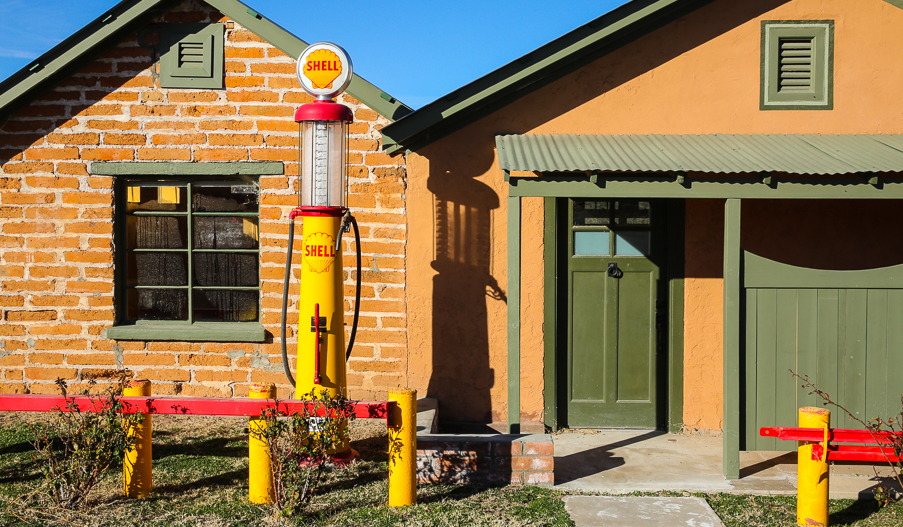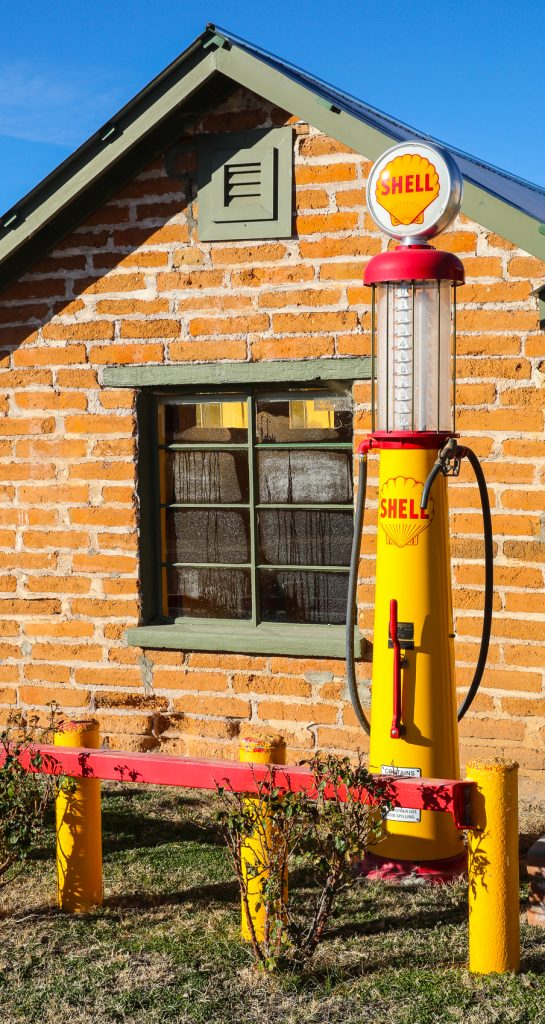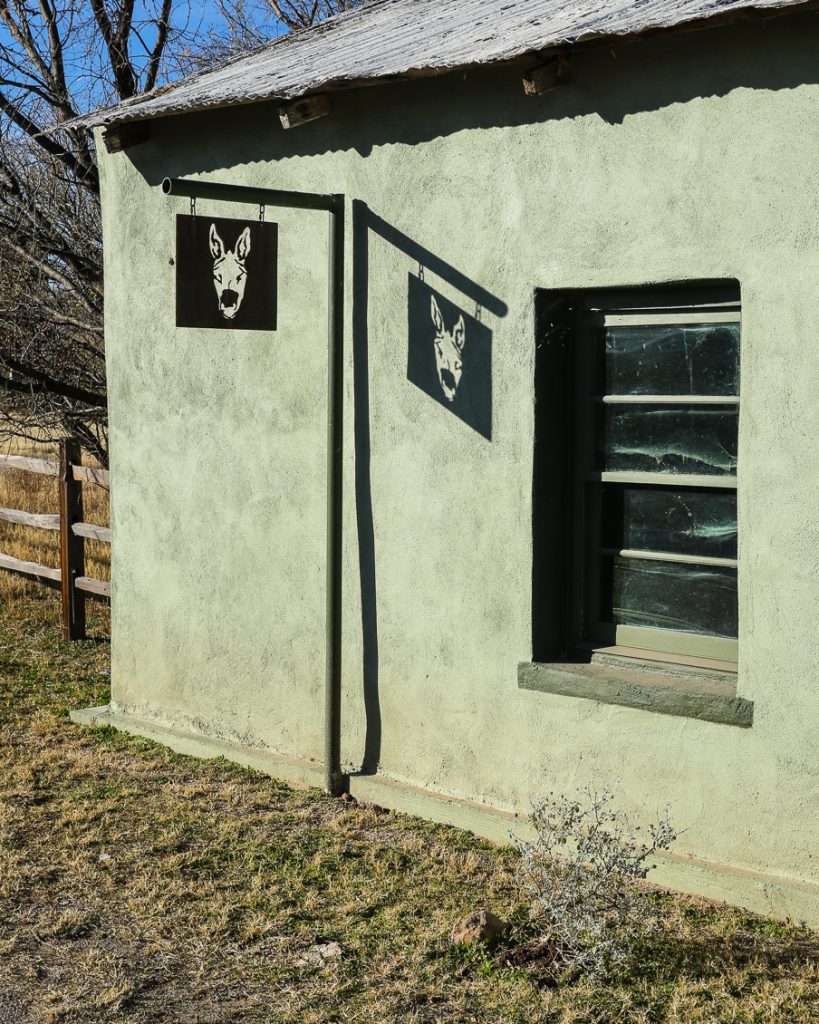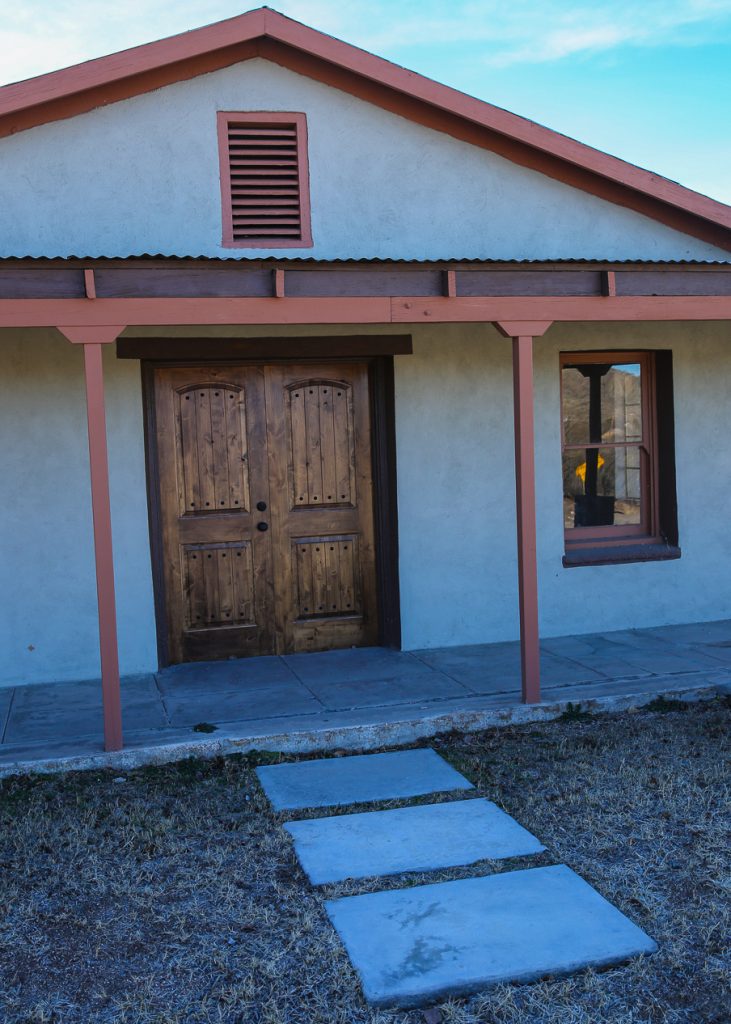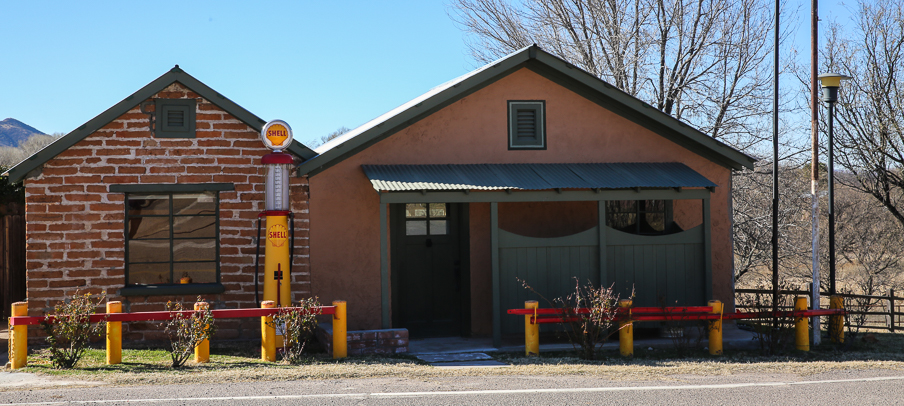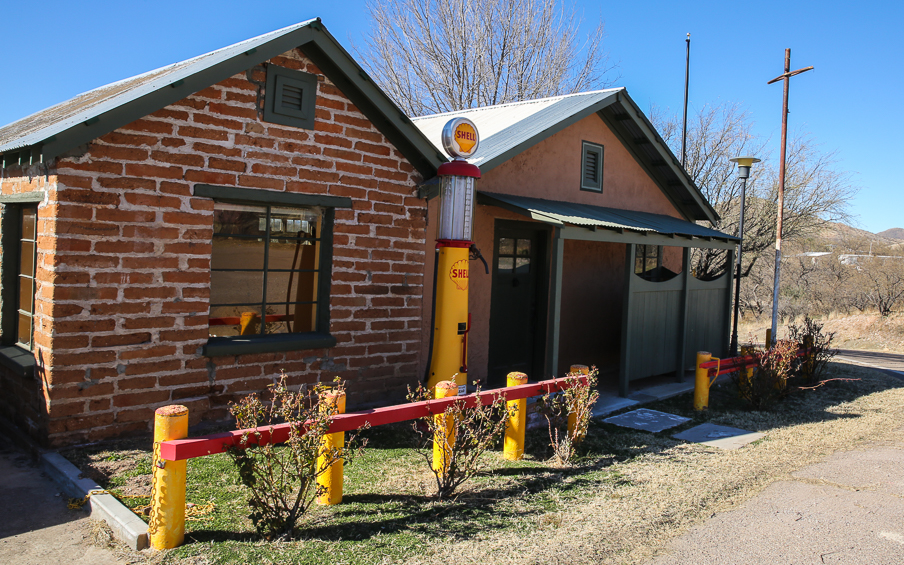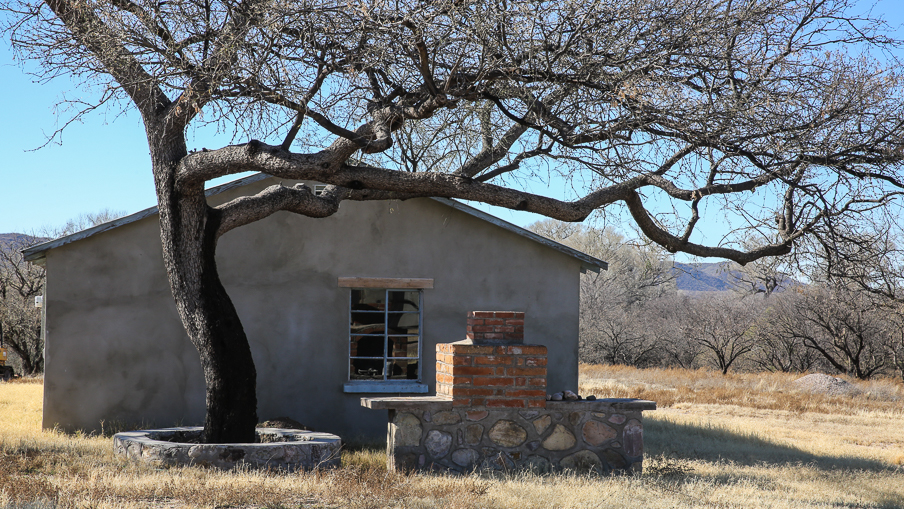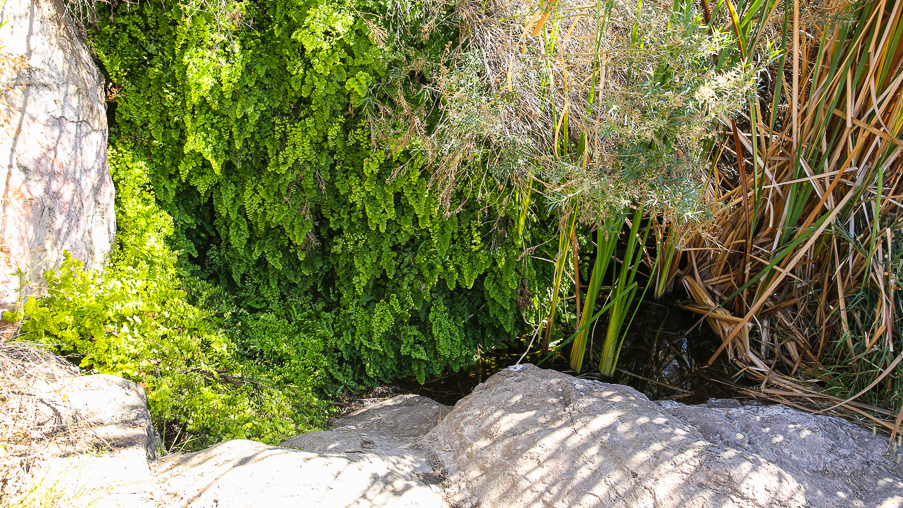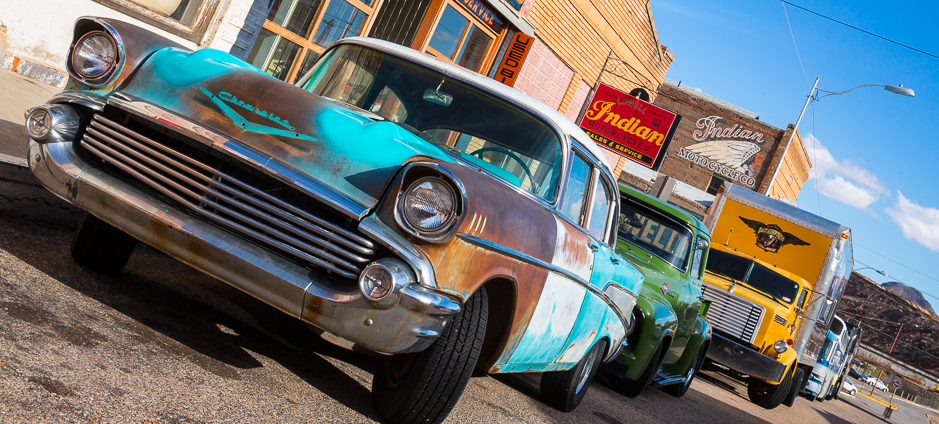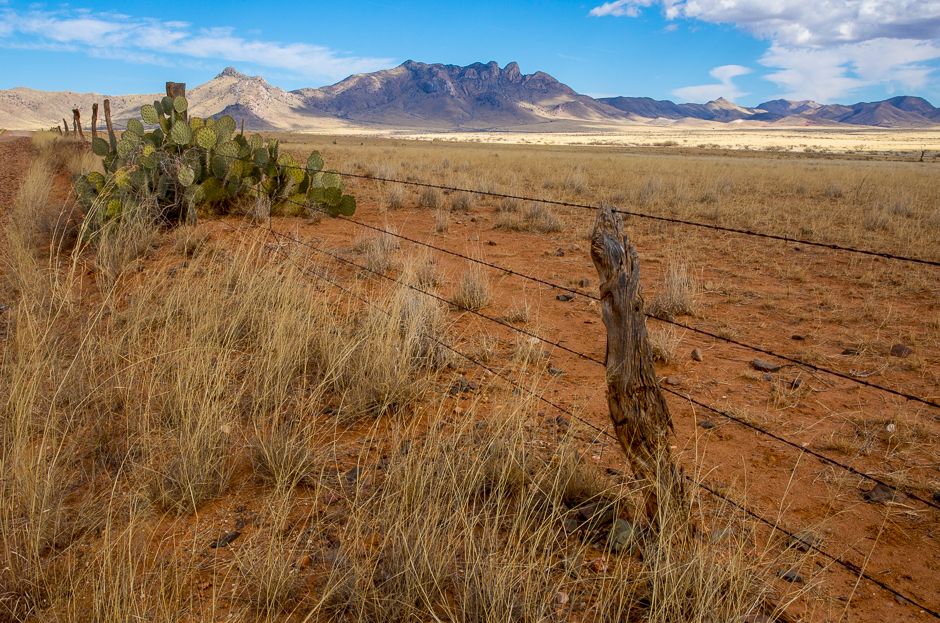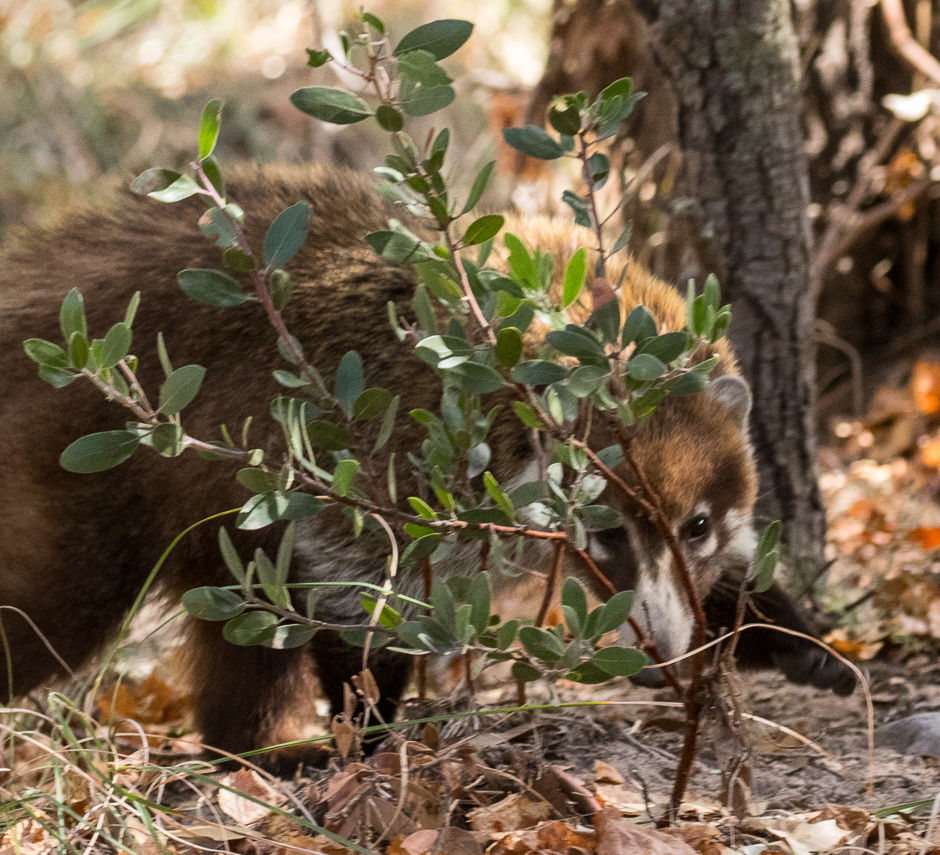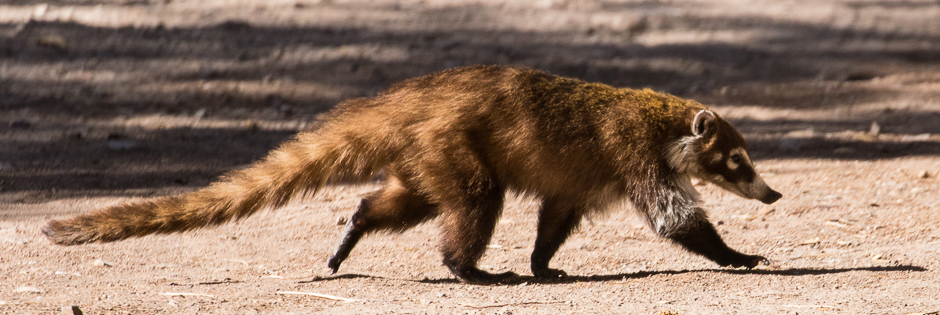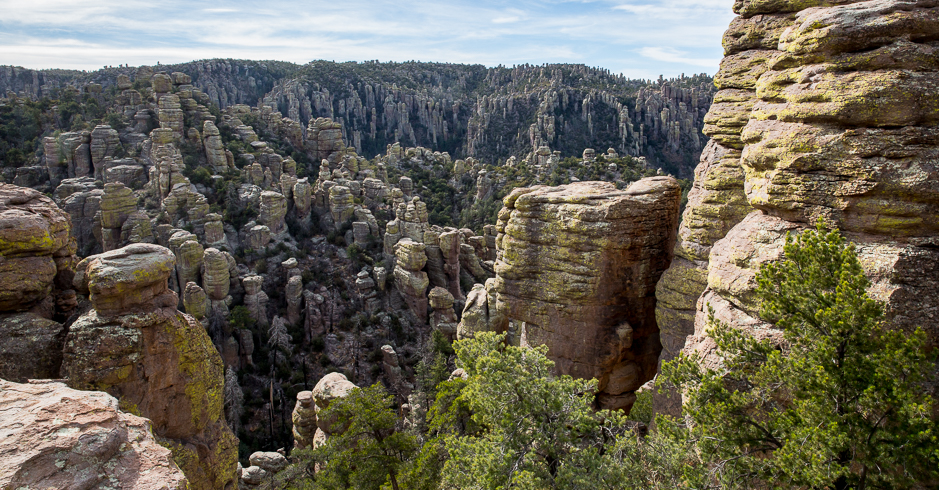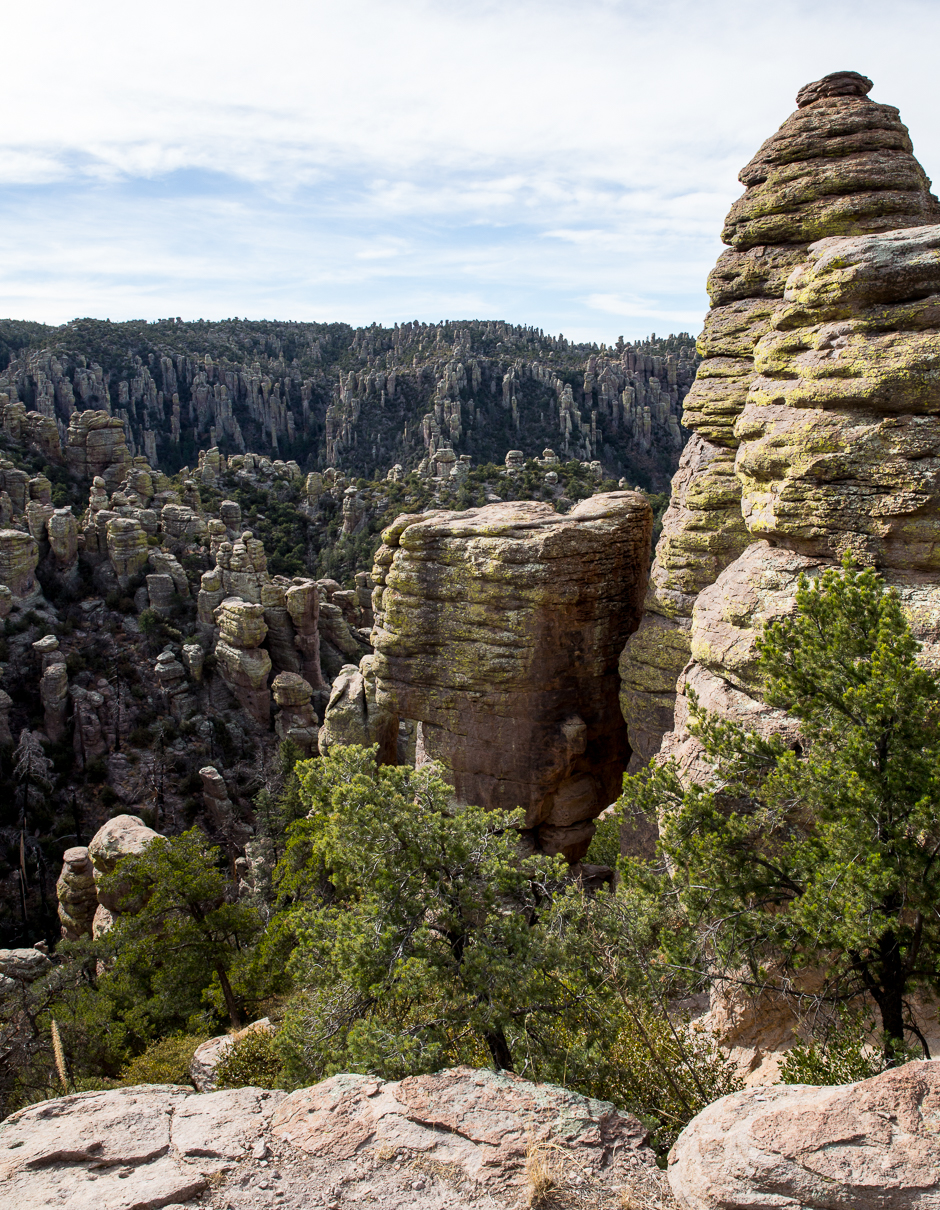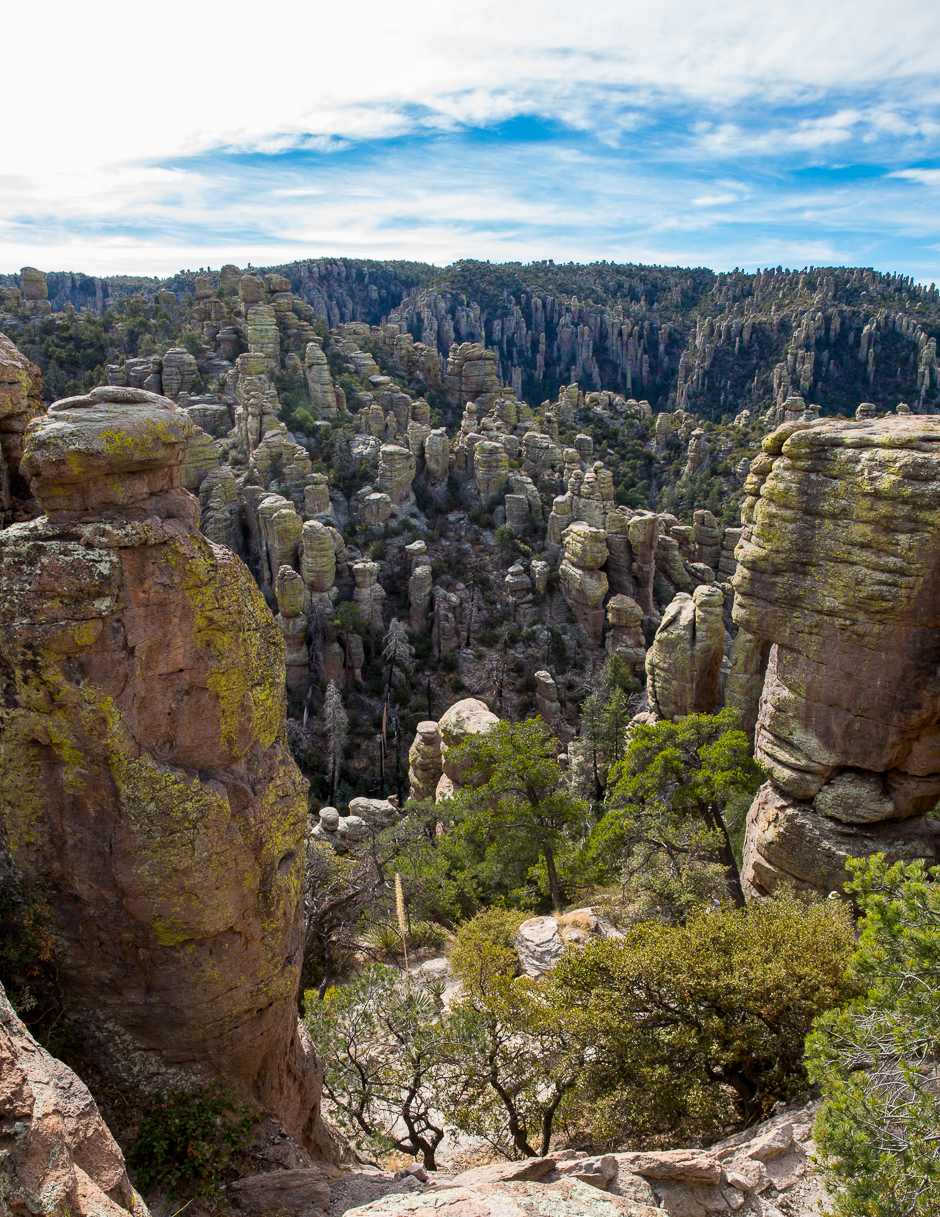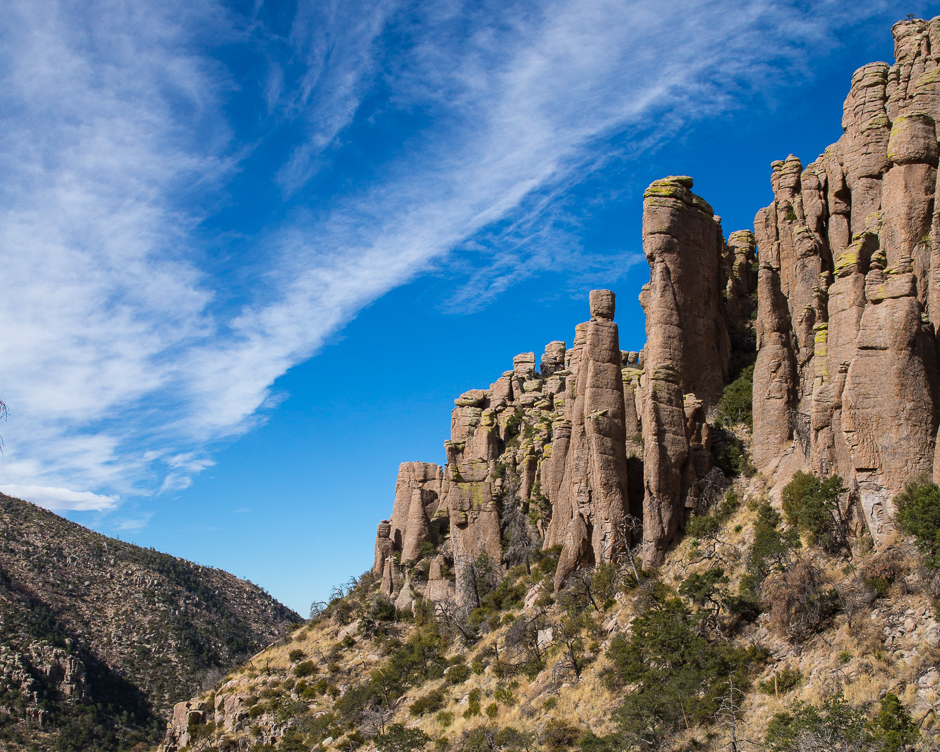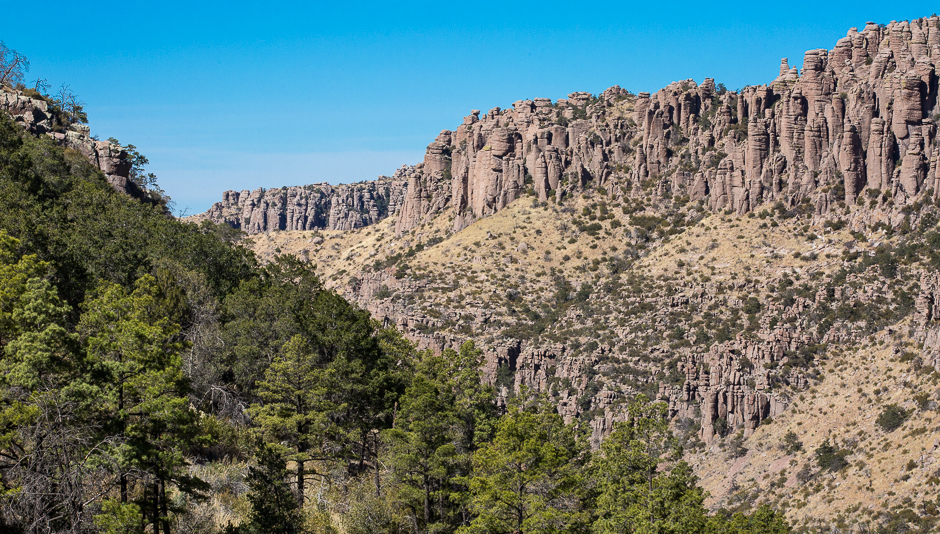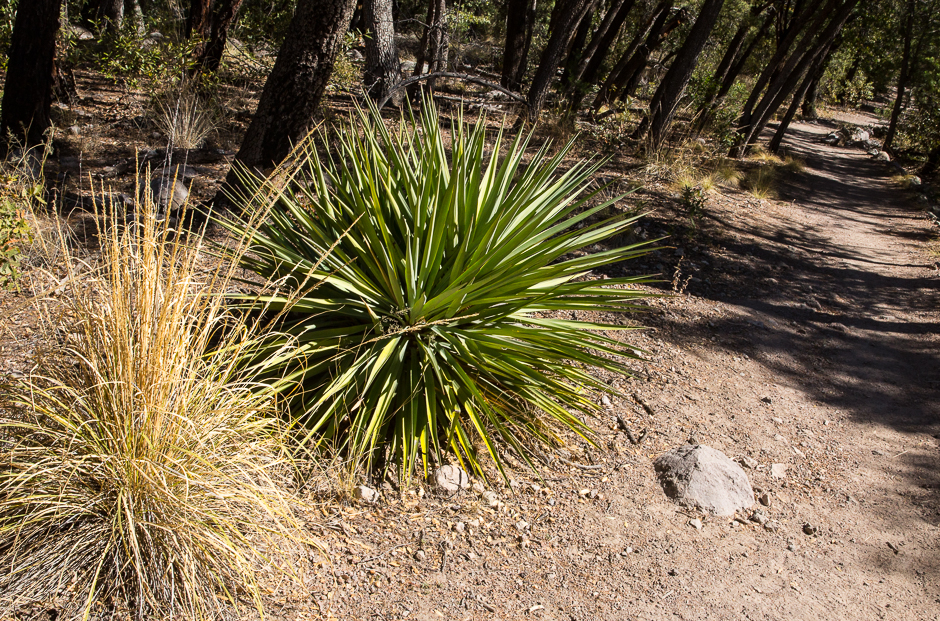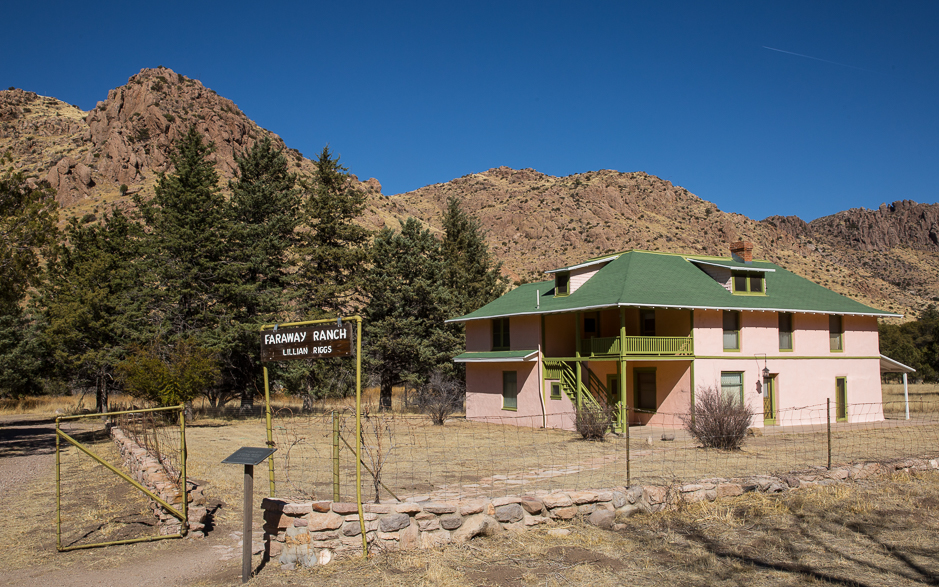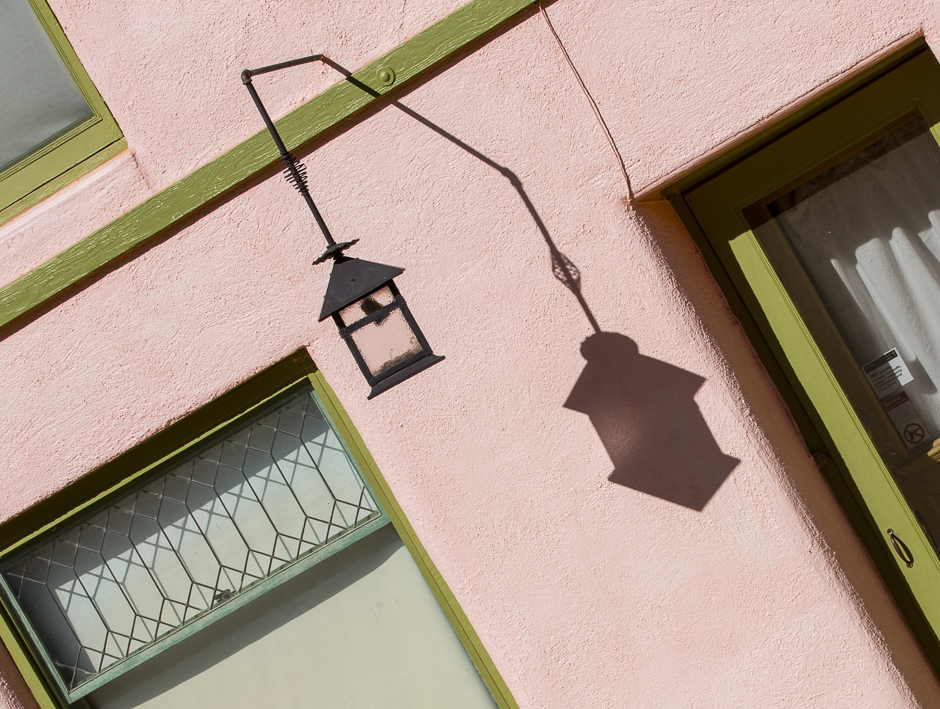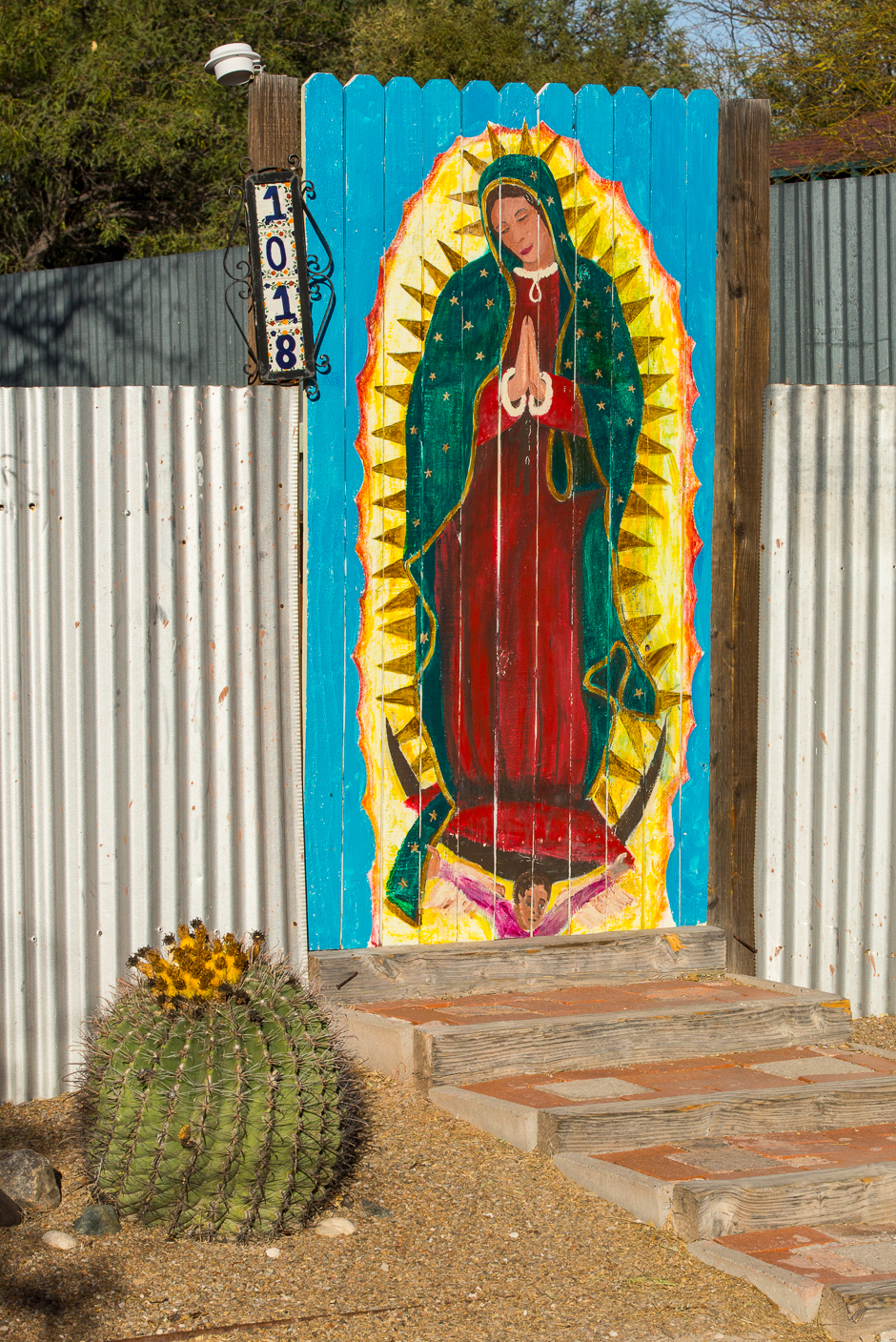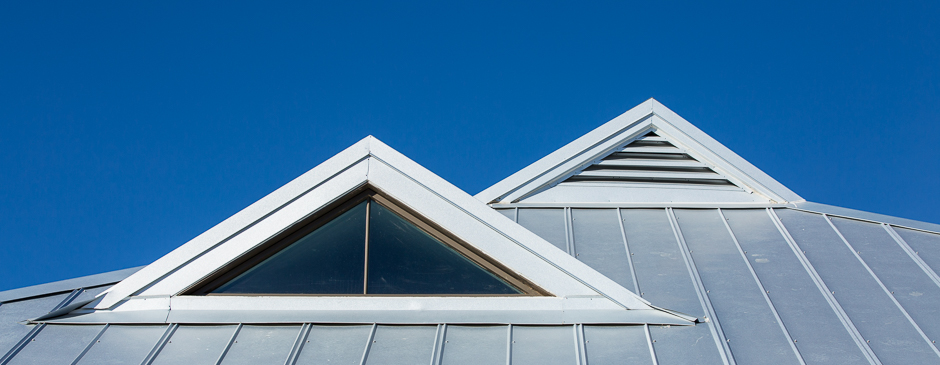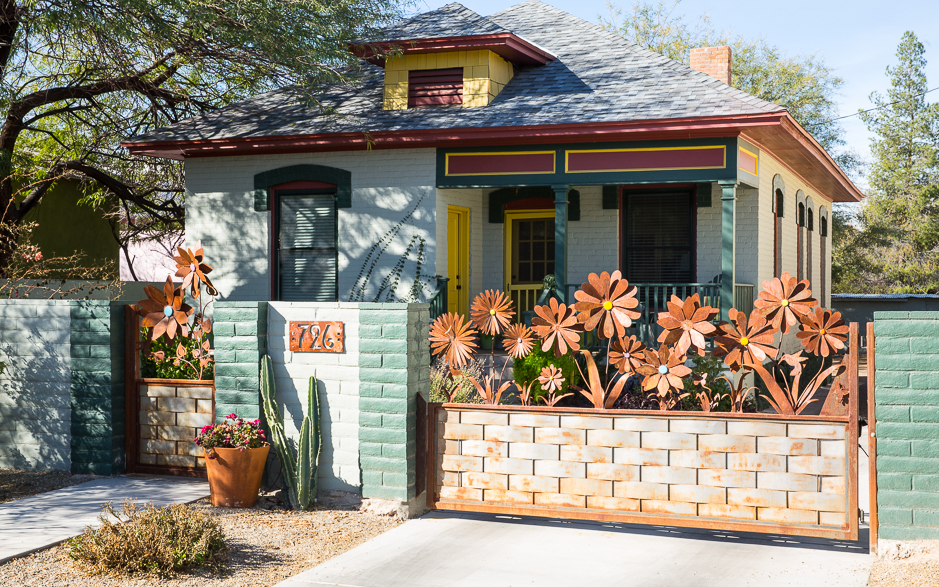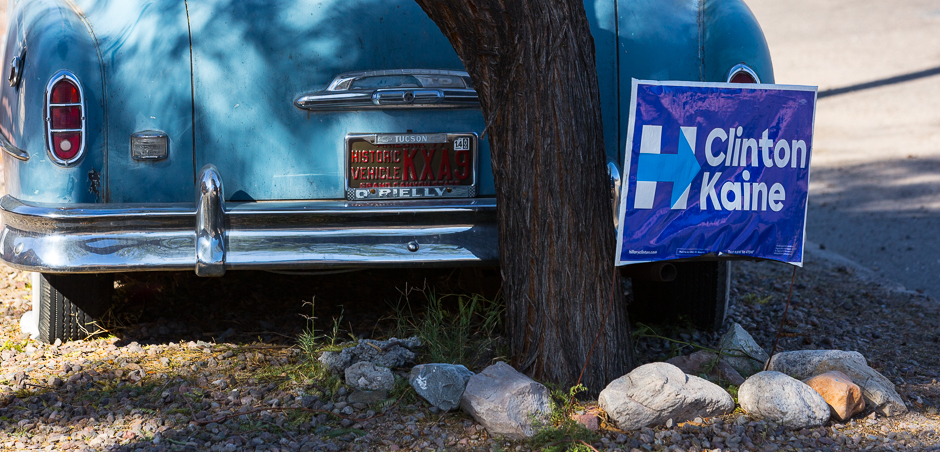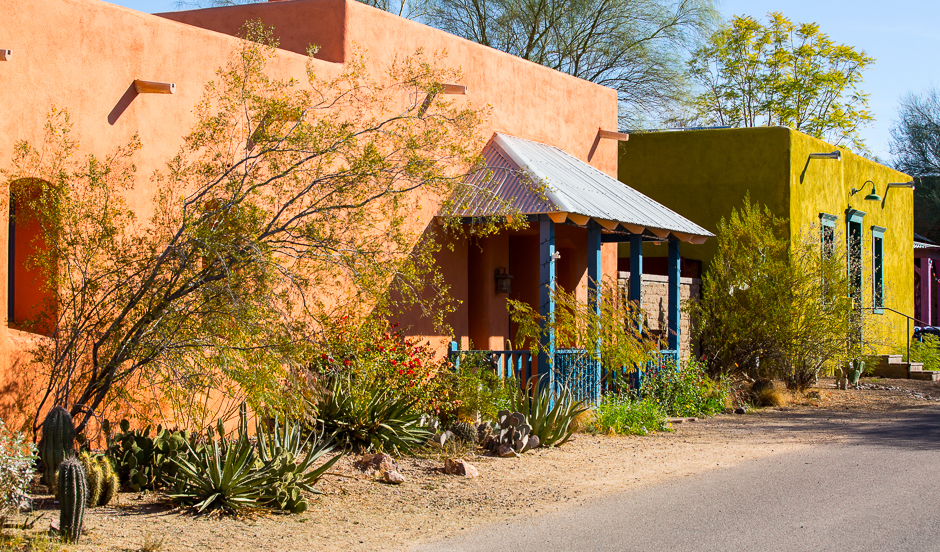Ajo, Arizona
Warning: Use of undefined constant gad_content_tag_filter_replace - assumed 'gad_content_tag_filter_replace' (this will throw an Error in a future version of PHP) in /home/dx87kwtjkt0i/public_html/wp-content/plugins/web-ninja-google-analytics/webninja_ga.php on line 1813
Ajo, Arizona:
The Town That Paternal Copper Built and the ISDA & the Three Nations Have Renewed
Ajo, Arizona Is the Story of a Better America

Before the community of Ajo was settled, the Tohono O’odham used water from a series of potholes in the area they called Mu’i Wawhia or Moivavi (many wells). Mexican miners later called the site Ajo, perhaps influenced by another O’odham name for the area –-au-auho—for the pigment they obtained from the ore-rich rocks.
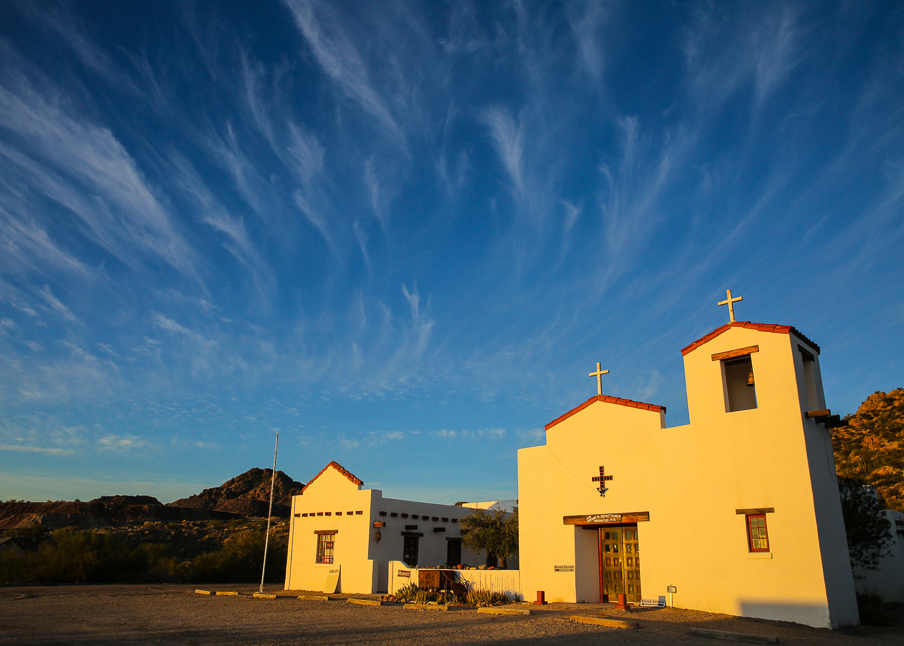
On the way to silver mines near Magdalena, Sonora, Tom Childs, Sr. and his party chanced upon the Ajo area in 1847 and stopped to mine the ore they found. Soon the Arizona Mining & Trading Company, formed by Peter M. Brady, a friend of Childs, worked the rich surface ores, shipping loads around Cape Horn smelting in Swansea, Wales, in the mid 1850s. The mine closed when a ship sank off coast of Patagonia. Childs and other prospectors worked claims here; long supply lines and the lack of water discouraged large mining companies. Tom Childs, Jr. remained in the Ajo area and become merchant.

A wily promoter, A.J. Shotwell, enticed John Boddie of Missouri to help set up the St. Louis Copper Company in 1890s. Shotwell organized the rescue Copper Company when bankruptcy threatened. This became the Cornelia, then the New Cornelia, named after Boddie’s first wife.

“Professor” F.L McGahan and Shotwell introduced the so-called vacuum smelter that supposedly channeled each type of molten ore to different spigots and ran perpetually on the initial fuel. Mcgahan conveniently slipped away from the demonstration model in Los Angeles –it exploded when been tested.

The first to develop the Ajo area profitable was John Campbell Greenway, a Rough Rider and a star Yale athlete. He became general manager of the Calumet and the Arizona Mining Company. Dr. L.D. Ricketts and Greenway developed a leaching method to process the carbonate ore overburden. Greenway also located the well that still provides water to Ajo and directed the construction of the Plaza, the community’s focal point. Calumet and Phelps Dodge merged in 1931 and the mine became the new Cornelia Branch of Phelps Dodge, managed by Michael Curley.

The local newspaper, the Ajo Copper News, published its first issue April 29, 1916. With over 90 years of history, it is one of a few businesses still in operation from the early days of the community, although it has changed locations several times. Its inception was at the urging of Greenway and Curley.
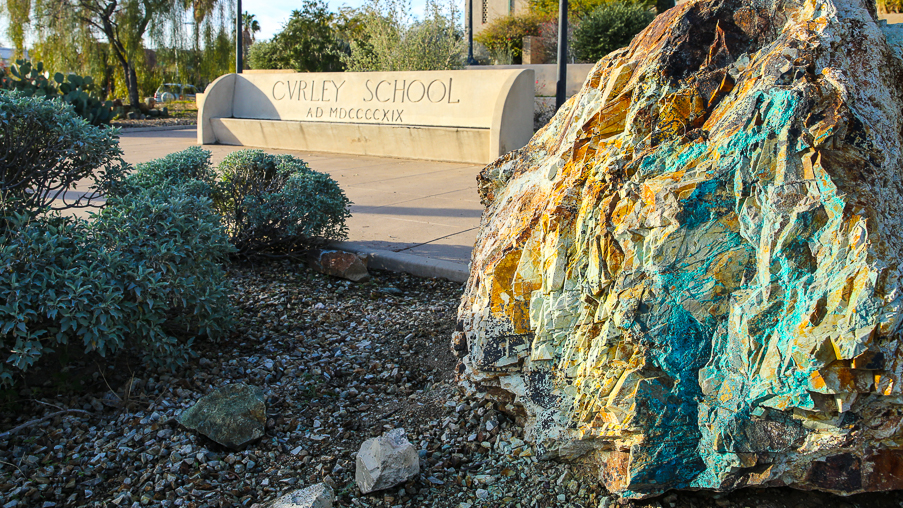
Ajo continued as the quintessential southwestern mining town, with occasional strikes and shutdowns, until 1983. The strike that began in July that year crippled the community with acrimony on both sides. Though the mine struggled on with non-union labor, copper prices plummeted and so did Ajo. Mining stopped in 1985. PD remained a presence in the community but sold much of its holdings, including the Plaza and the company housing. The remaining mines property is now owned by Freeport-McMoran Gold and Silver, Inc., which merged with Phelps Dodge in 2007.
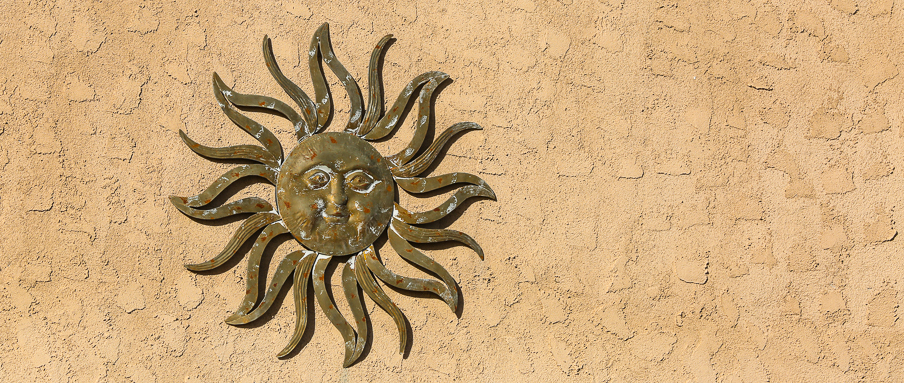
Many retired people bought the houses and started a new era in Ajo‘s history and, more recently, changes have come about with the influx of Border Patrol Agents.
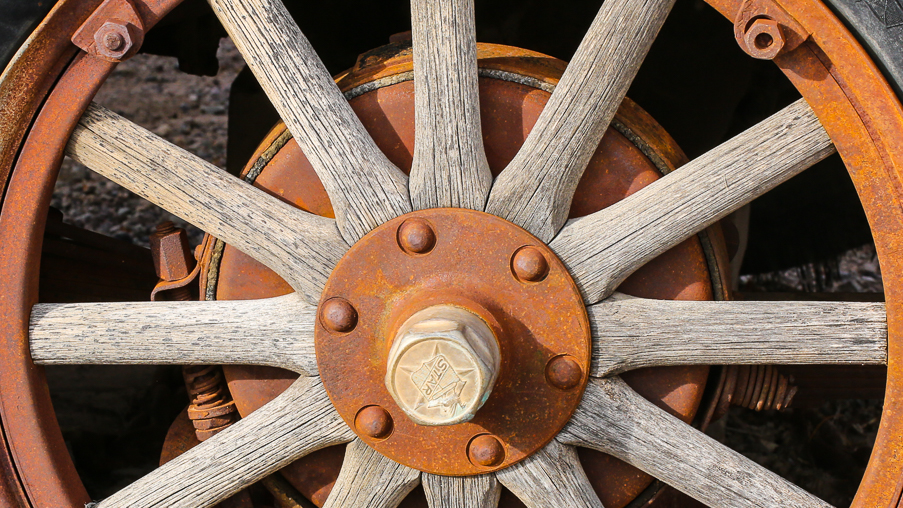
The acquisition of the old Curley School and the plaza by the International Sonoran Desert Alliance has both preserved and altered the flavor of the community, which is home to many churches, fraternal groups, and social and cultural organizations with long and rich histories of their own.
© Ajo Copper News, used with permission.
Digital Image Gallery Link ~ Ajo, AZ Architecture
SOURCES
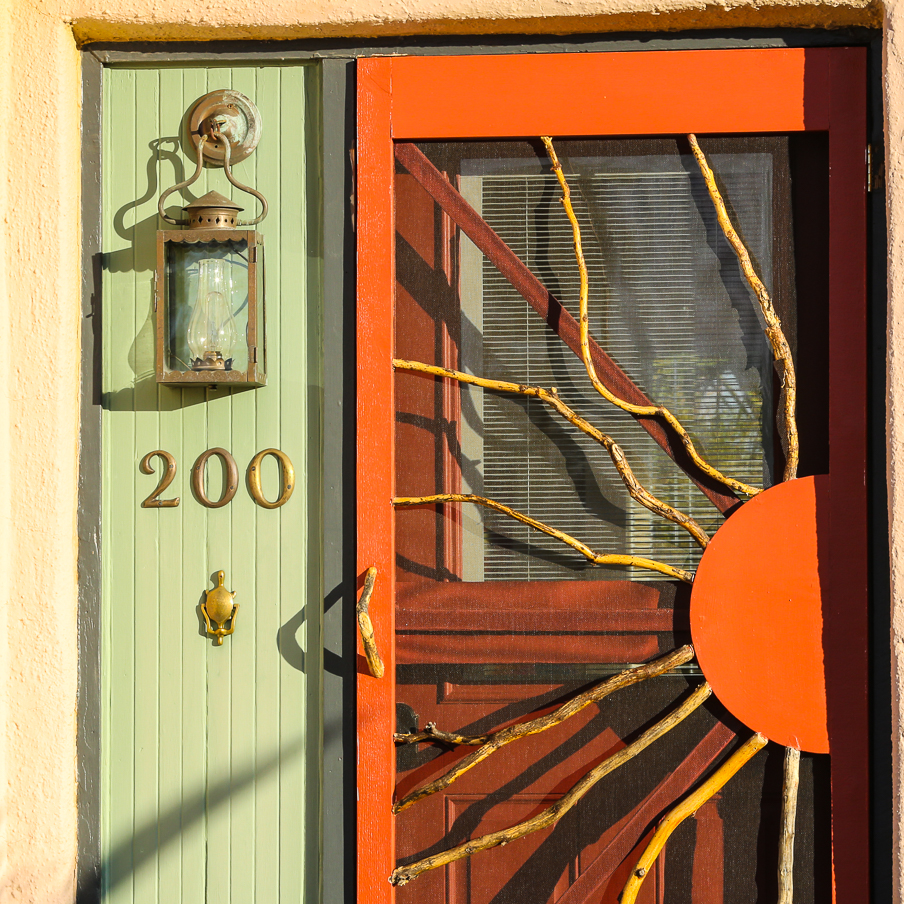
http://www.cunews.info/ajohistory.html
http://www.cunews.info/childs.html
http://www.cunews.info/greenway.html
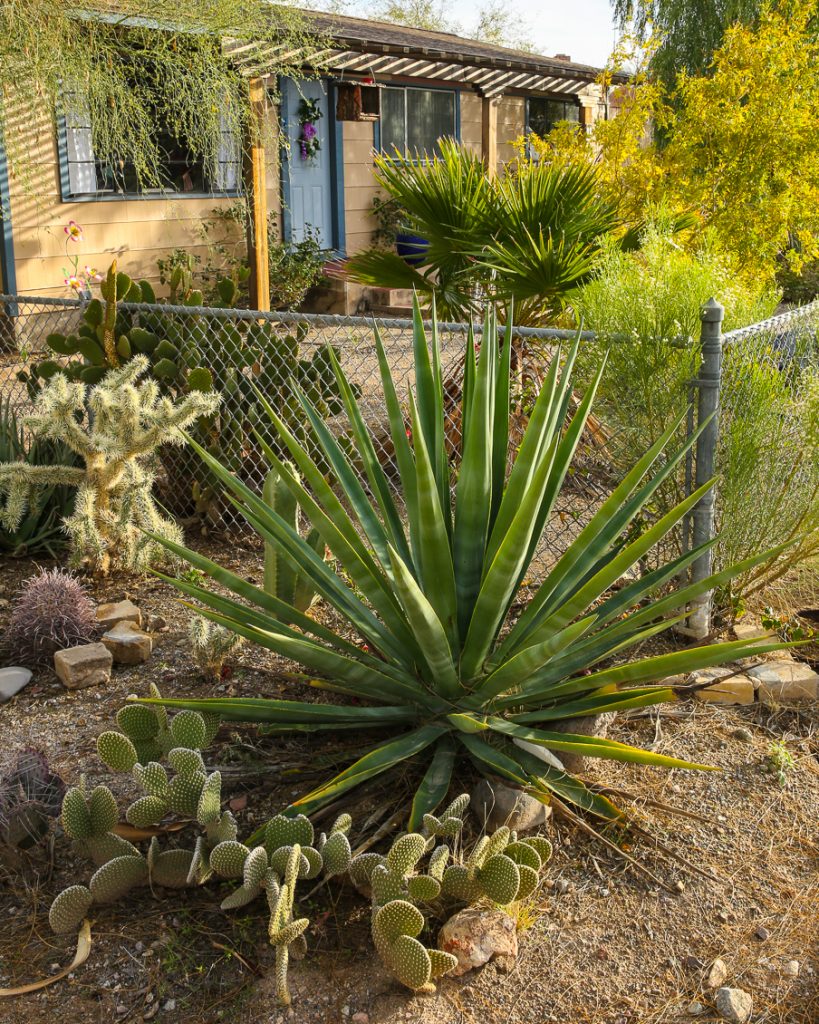
https://winfirst.wixsite.com/arizonamininghistory/history

https://www.theatlantic.com/national/archive/2015/04/a-word-cloud-of-ajo-arizona/391901/

https://www.theatlantic.com/national/archive/2015/04/ajo-oasis-in-the-desert/389051/
https://www.theatlantic.com/notes/2017/01/the-end-of-the-journey/513518/
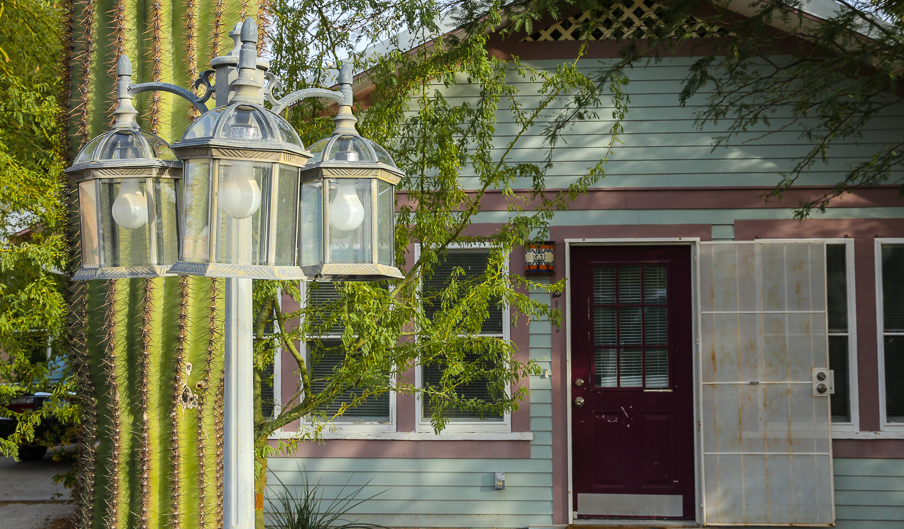
https://www.arts.gov/exploring-our-town/ajo-masterplan
https://www.cnn.com/2019/12/06/opinions/small-town-ajo-arizona-heal-divide-fallows/index.html
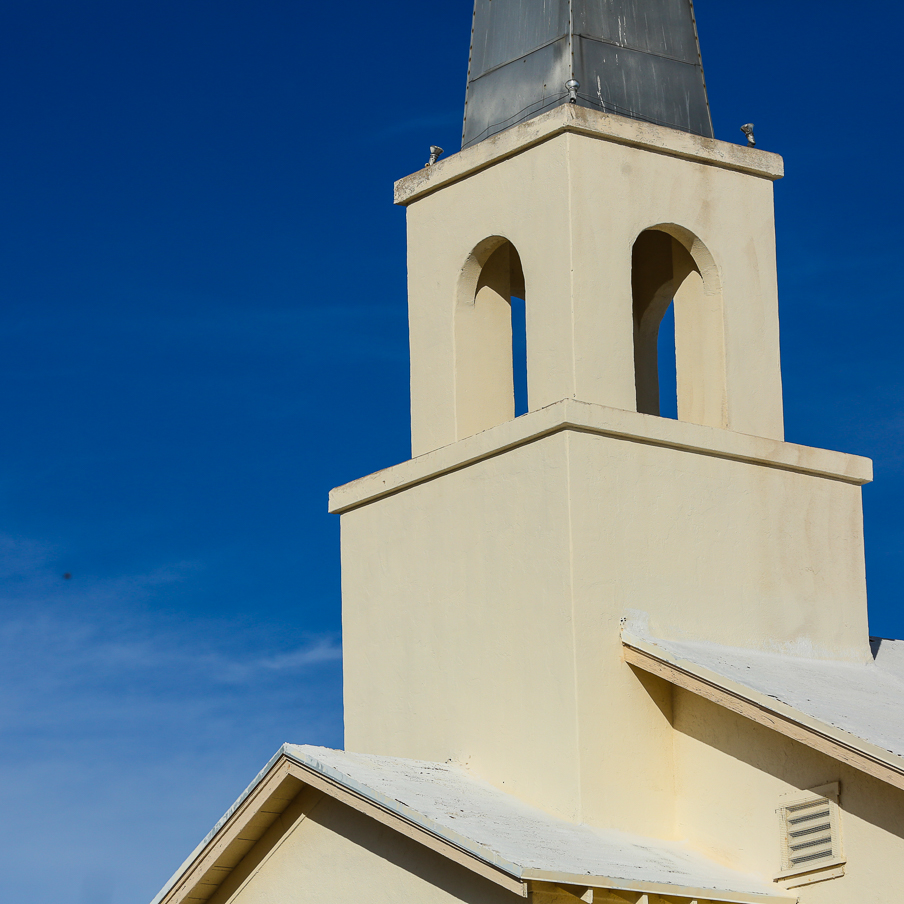
Digital Image Gallery Link ~ Ajo, AZ Architecture
The Road to Apache Pass
Warning: Use of undefined constant gad_content_tag_filter_replace - assumed 'gad_content_tag_filter_replace' (this will throw an Error in a future version of PHP) in /home/dx87kwtjkt0i/public_html/wp-content/plugins/web-ninja-google-analytics/webninja_ga.php on line 1813
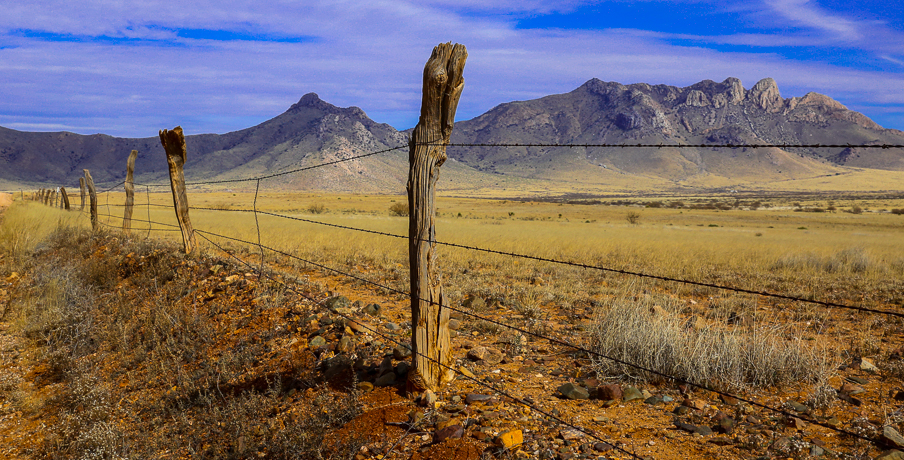

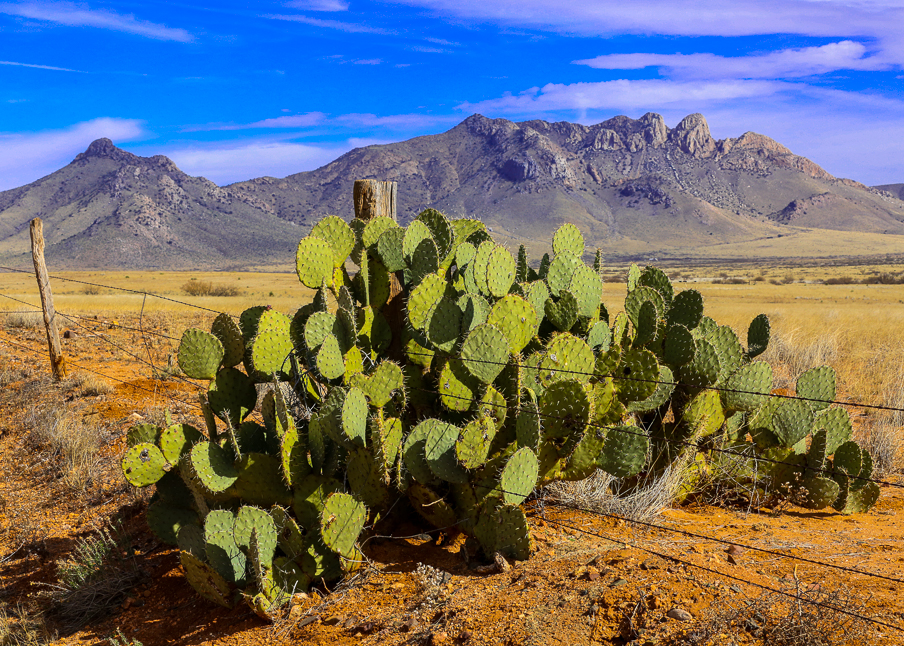
Expanded Image Gallery Link ~ The Road to Apache Pass
Wings Over Willcox 2020
Warning: Use of undefined constant gad_content_tag_filter_replace - assumed 'gad_content_tag_filter_replace' (this will throw an Error in a future version of PHP) in /home/dx87kwtjkt0i/public_html/wp-content/plugins/web-ninja-google-analytics/webninja_ga.php on line 1813
Great community event:
A volunteer driven small birding festival on the rebound and recovery after a number of years of mismanagement.
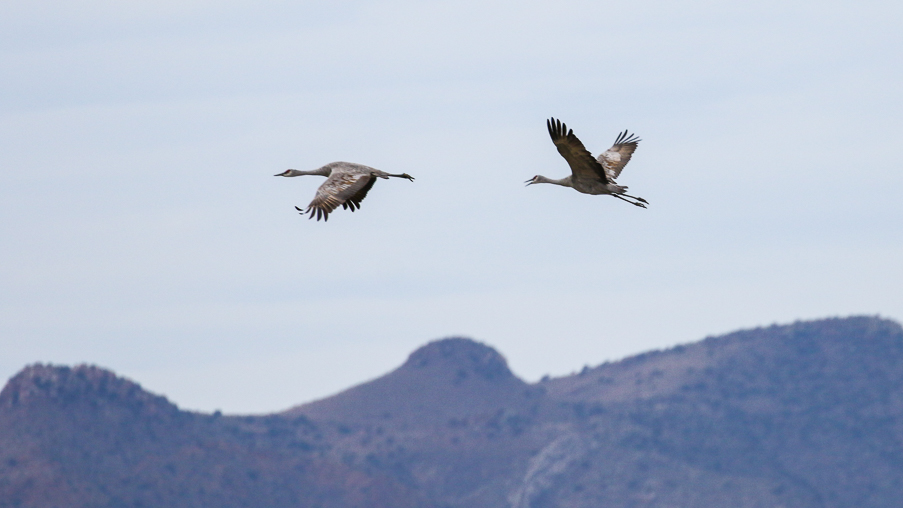

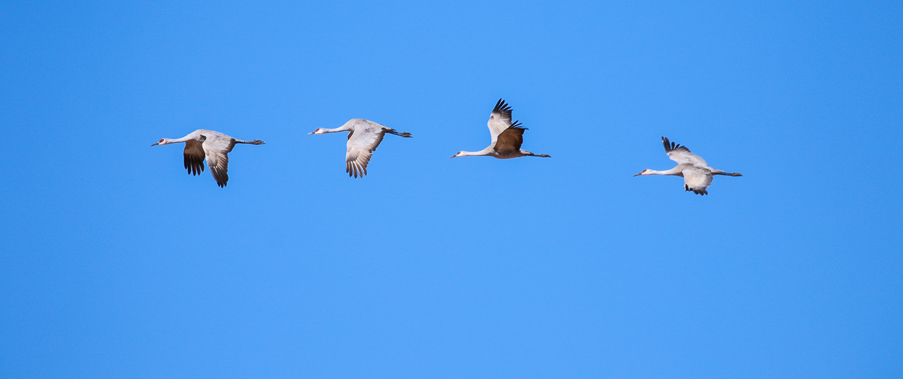
Kudos to the volunteers, kudos to the local drivers, kudos to the guides.
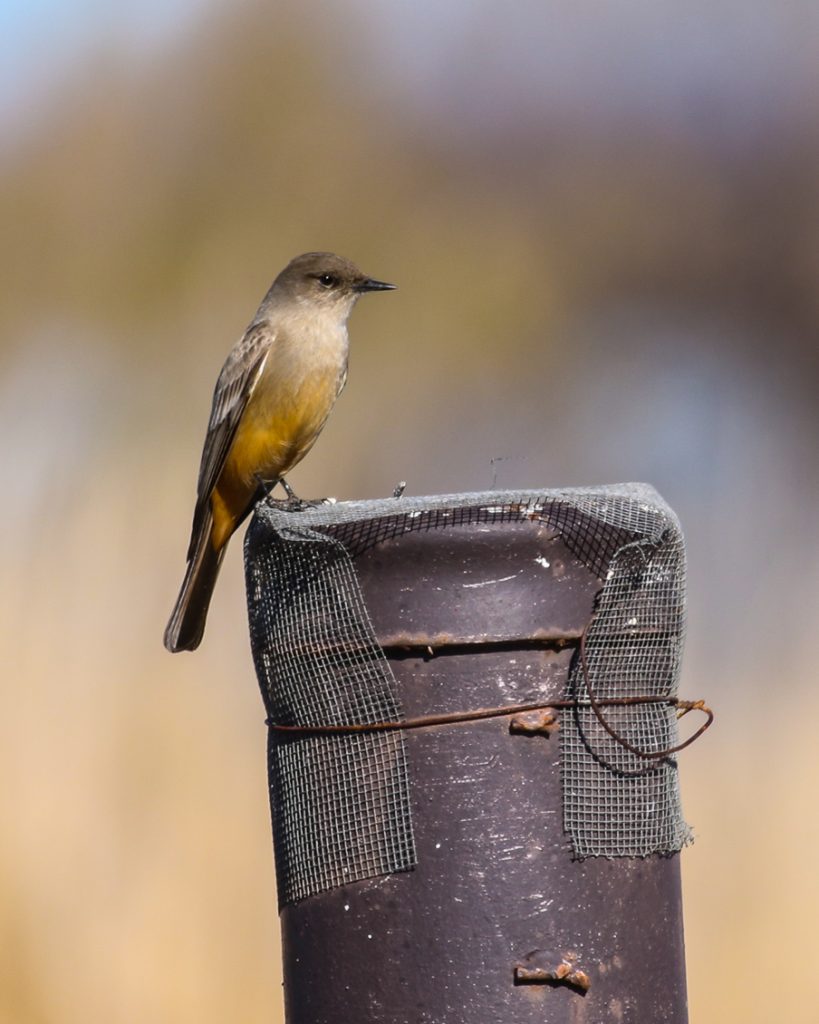

A tip of the hat and acknowledgement to Homer Hansen.

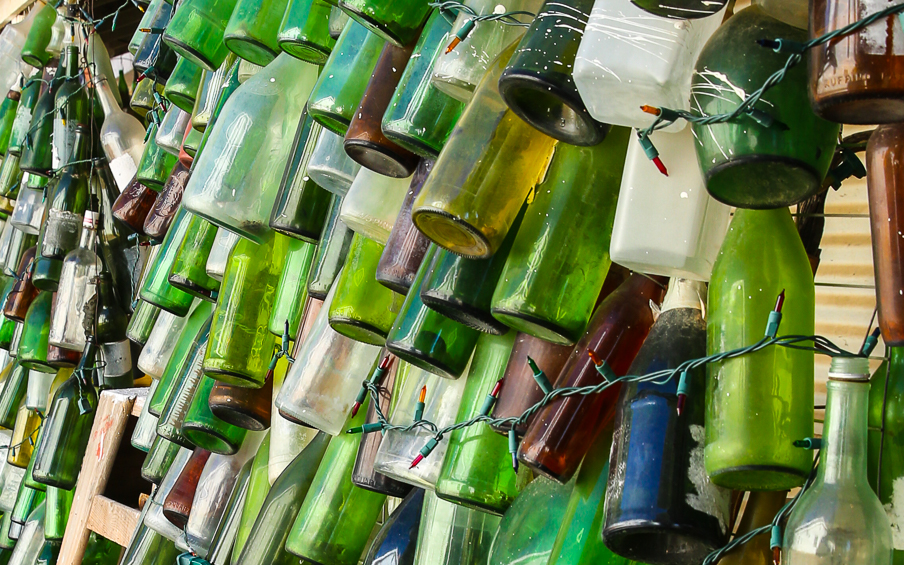
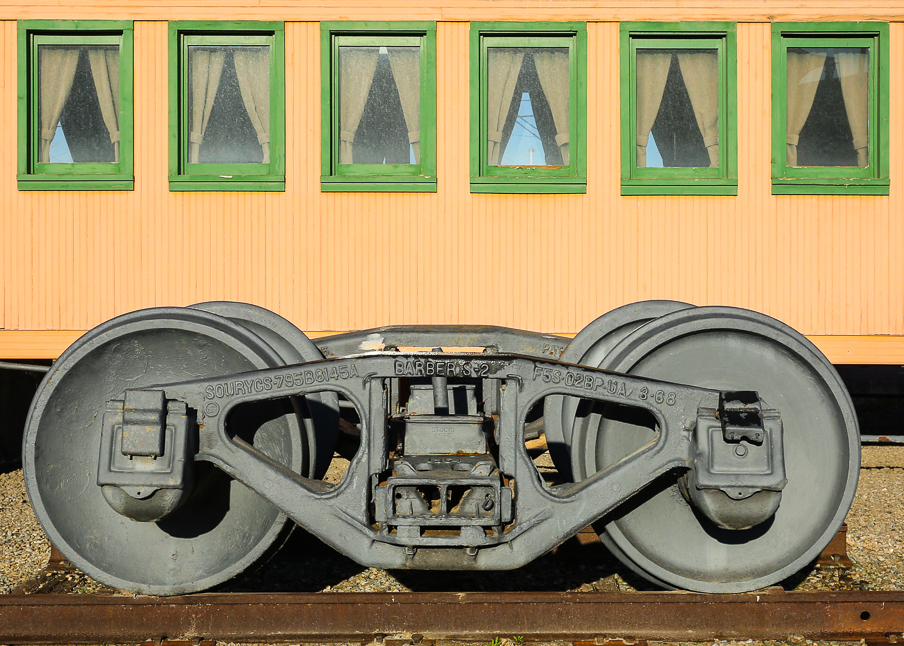
Thank you & welcome back.
Tumacacori Ruins
Warning: Use of undefined constant gad_content_tag_filter_replace - assumed 'gad_content_tag_filter_replace' (this will throw an Error in a future version of PHP) in /home/dx87kwtjkt0i/public_html/wp-content/plugins/web-ninja-google-analytics/webninja_ga.php on line 1813
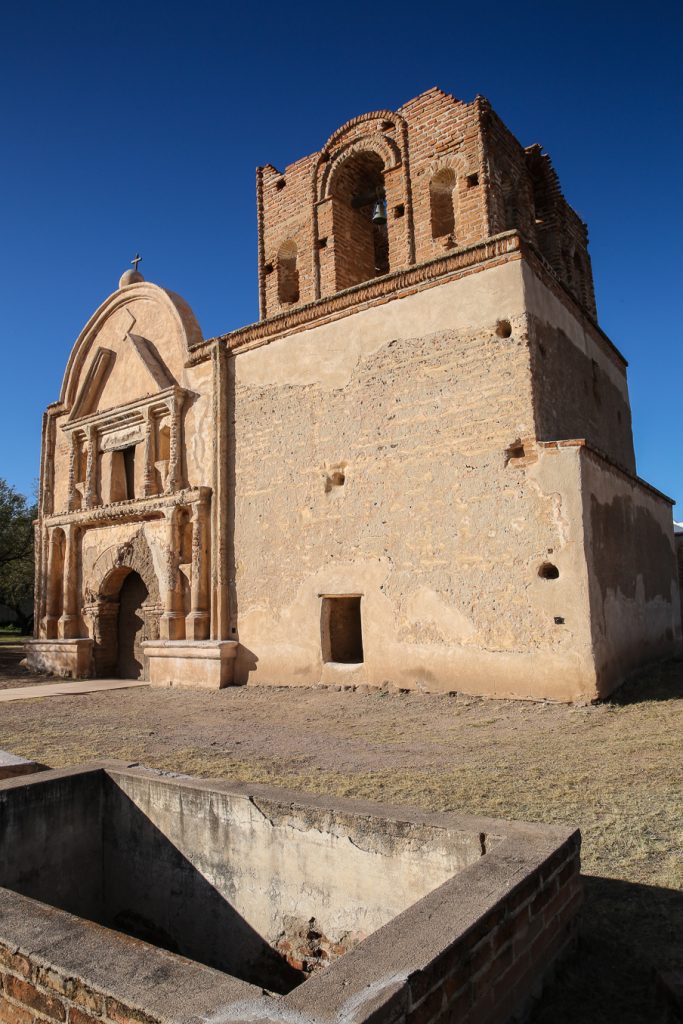
1691
Tohono O’odham invite Father Eusebio Francisco Kino, a black-robed Jesuit priest, to Tucamacori.
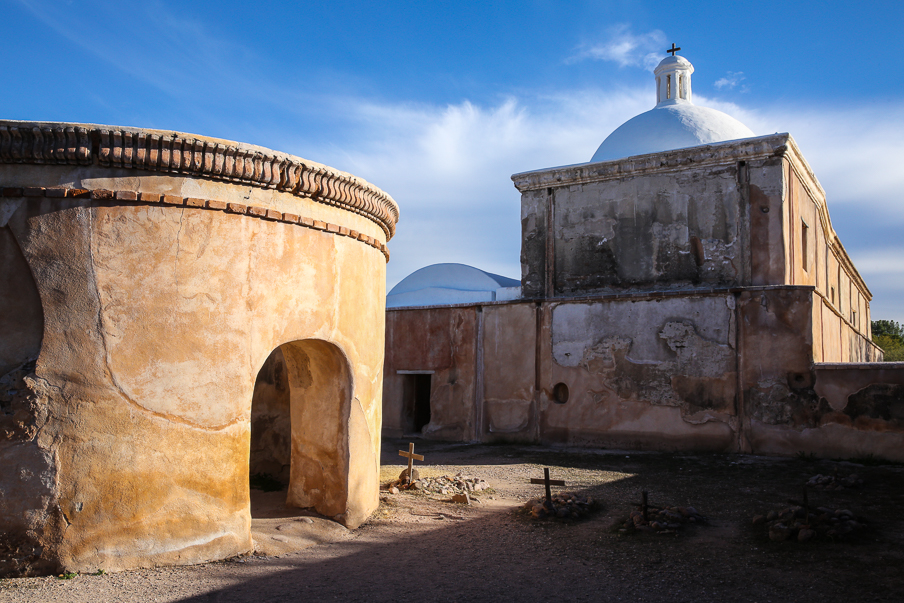
1751 – 1753
O’odham factions rebel against Spain, which builds a presidio (military post) at Tubac to defend it’s interests.

1757
Jesuits oversee the raising of an adobe church at Tumacacori, a visita (mission without a resident priest).
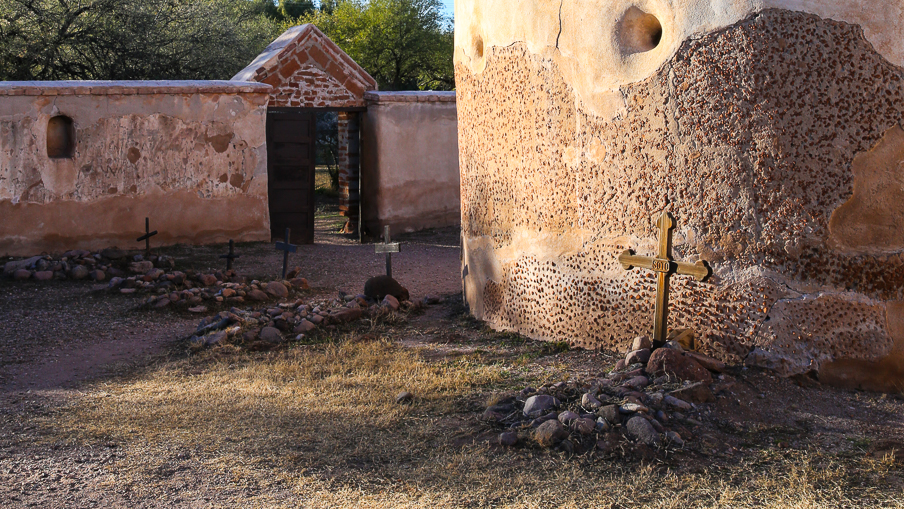
1767 – 1768
Jesuits are expelled from New Spain.
Tumacacori becomes cabecera (headquarters) for the gray-robed Franciscans.

1800 – 1820
Foundations are laid for a new church.
Progress is intermittent.
Cattle are sold to pay for the completion of the church.
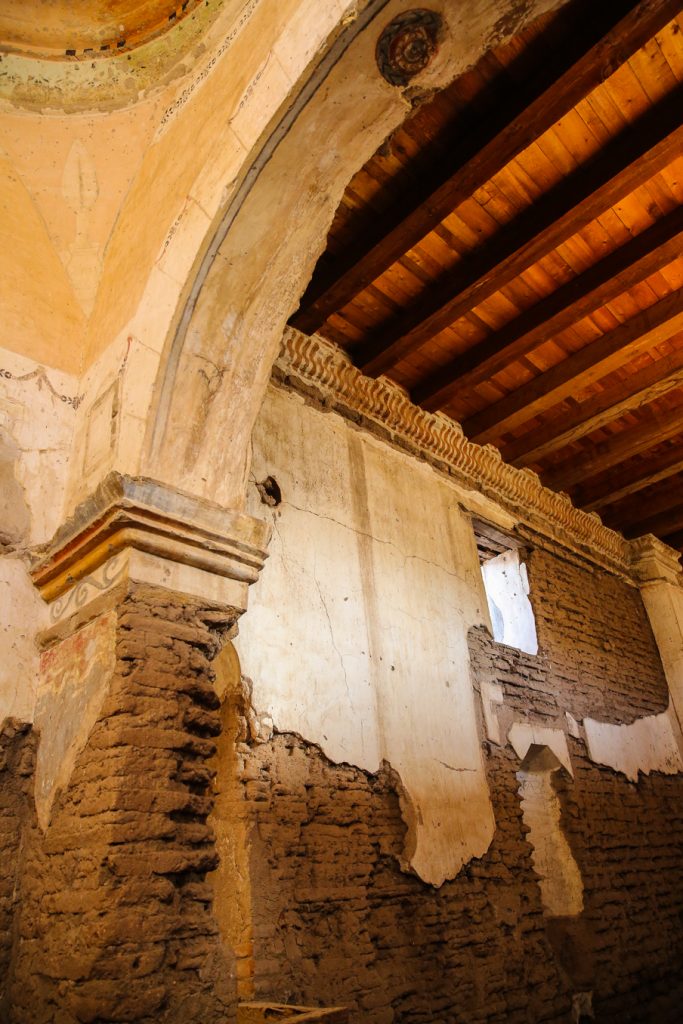
1821 – 1824
Upper walls, roof, sanctuary dome and baptistry completed.
The church is dedicated for use.
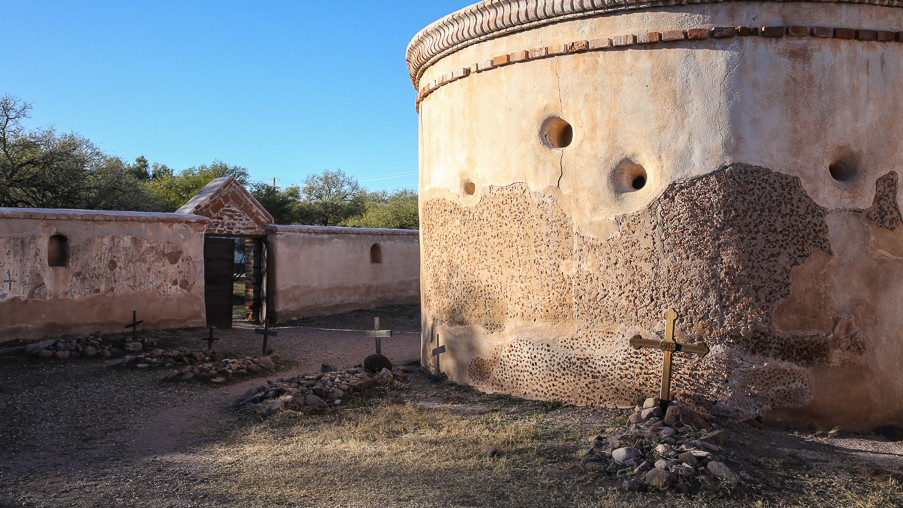
1821 – 1828
Mexico achieves independence in 1821; expels all Spanish-born residents, including Tumacacori’s priest in 1828.
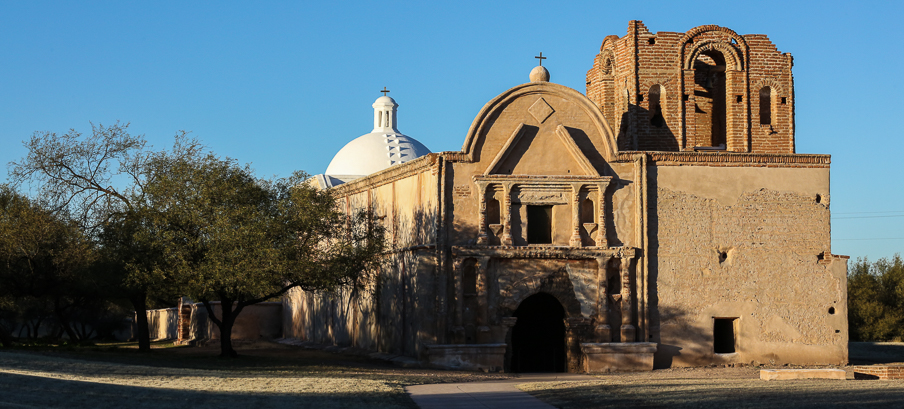
1848 – 1856
US-Mexican War ends.
The O’odham leave Tumacacori.
The Tubac presidio is abandoned in 1856.
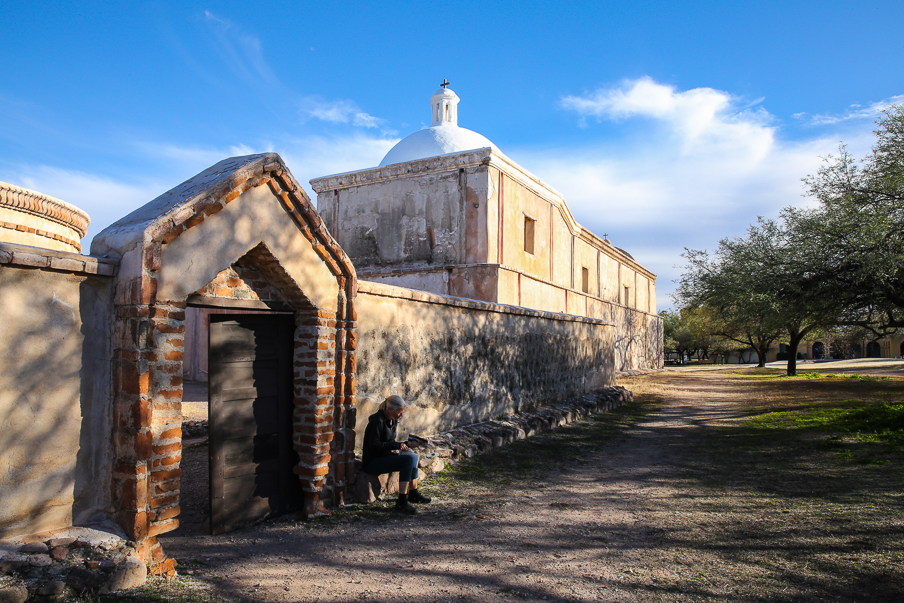
Sources
Public Pamphlet, 01/2020 ~ Tumacacori National Historical Park, Arizona ~ National Park Service, US Department of the Interior
Arivaca, Arizona
Warning: Use of undefined constant gad_content_tag_filter_replace - assumed 'gad_content_tag_filter_replace' (this will throw an Error in a future version of PHP) in /home/dx87kwtjkt0i/public_html/wp-content/plugins/web-ninja-google-analytics/webninja_ga.php on line 1813
The corners of South Ruby Road, South Pusch Street and West Arivaca Road Arivaca, Arizona.
Intriquing corner of the Gadsden Purchase.
Paul Bond Boots
Warning: Use of undefined constant gad_content_tag_filter_replace - assumed 'gad_content_tag_filter_replace' (this will throw an Error in a future version of PHP) in /home/dx87kwtjkt0i/public_html/wp-content/plugins/web-ninja-google-analytics/webninja_ga.php on line 1813

Paul Bond Boots
Nogales, Arizona
With the namesake founding boot-maker Paul Bond being gone for a number of years people may wonder if the Paul Bond Boot of today is still the renowned Paul Bond Boot from back in the day.
The craftsmen presently involved in the making of a Paul Bond handmade hand-stitched cowboy boot still create with pride, hand work, hard work.
Most of these craftsmen were employed by and/or trained by Paul Bond back in the day.
Featured Craftsmen:
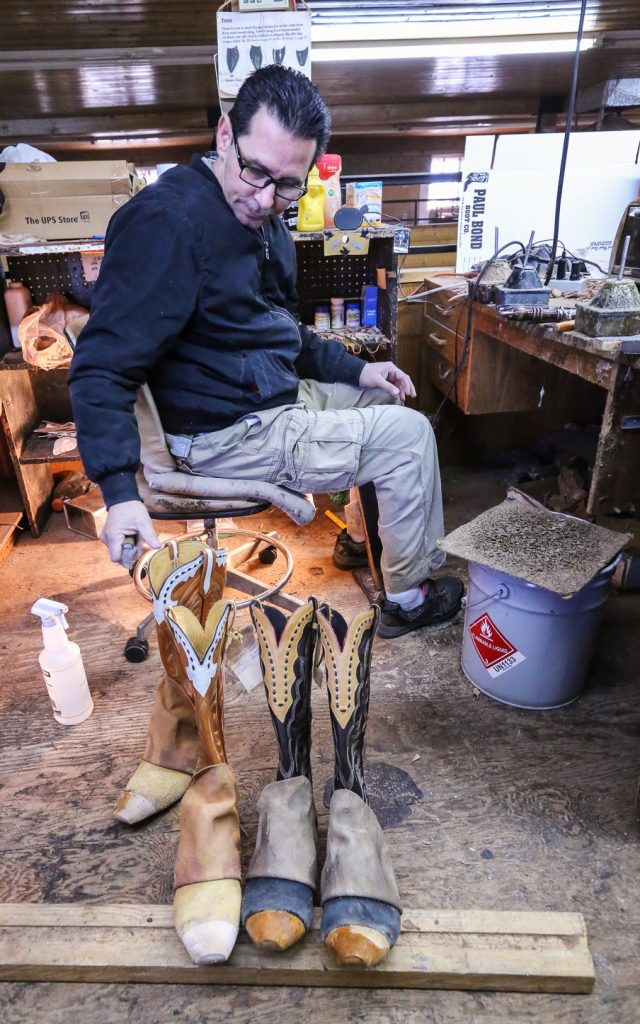
Juan Ariano
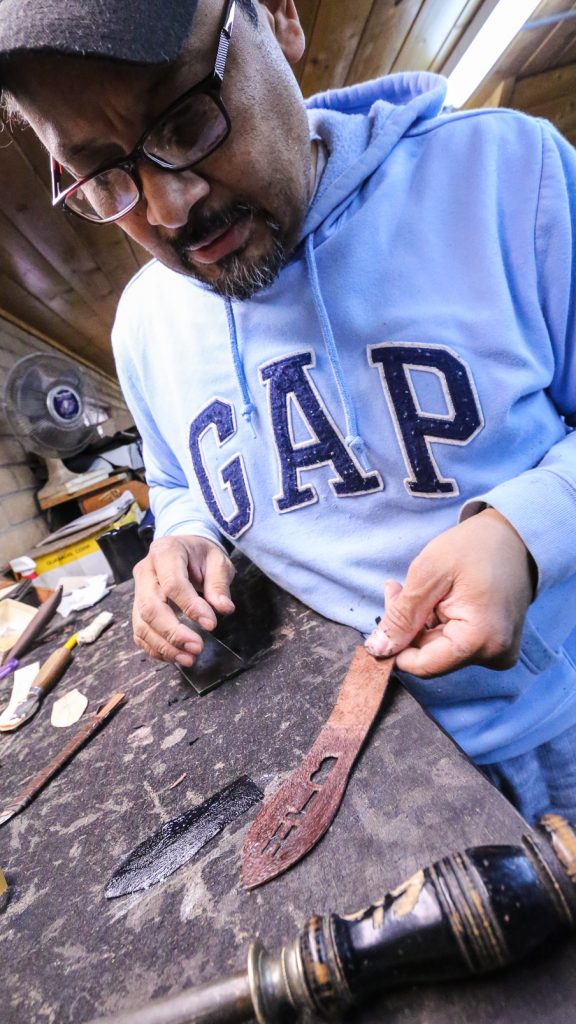
Giovanni Galeano
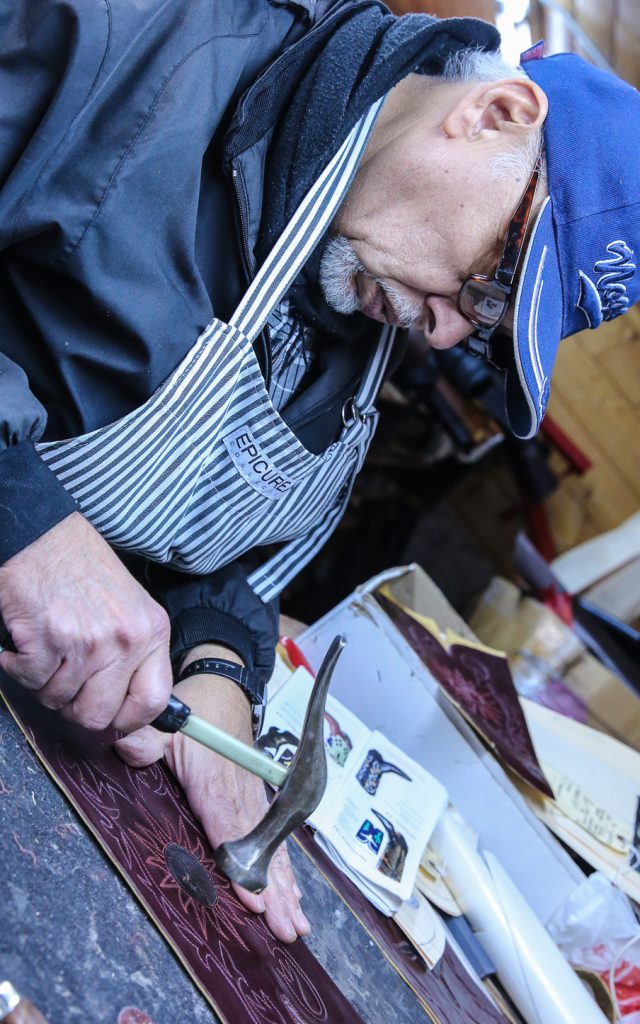
Eleazar Villalba
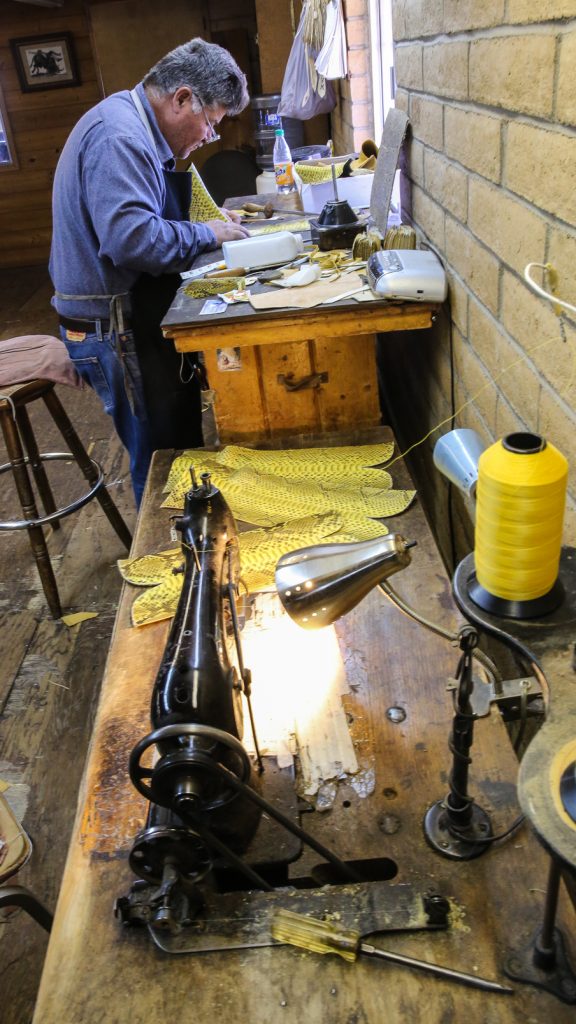
Jose Luis Ochoa
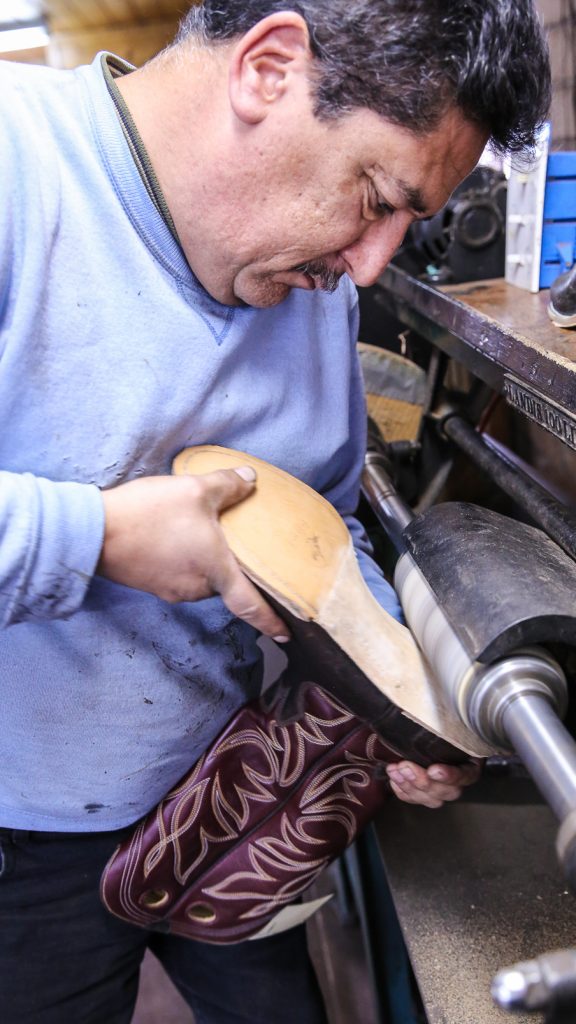
Jose Cedeno
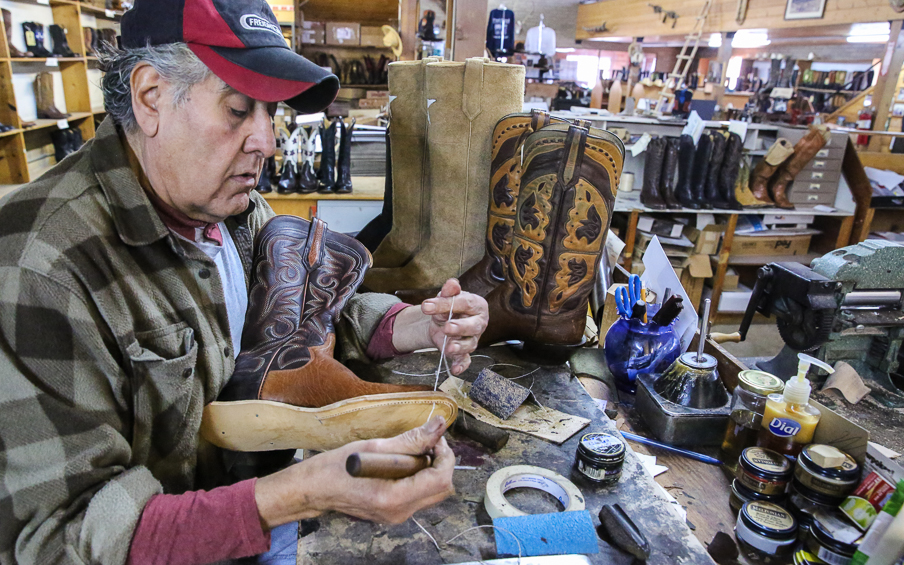
Fermin Haro
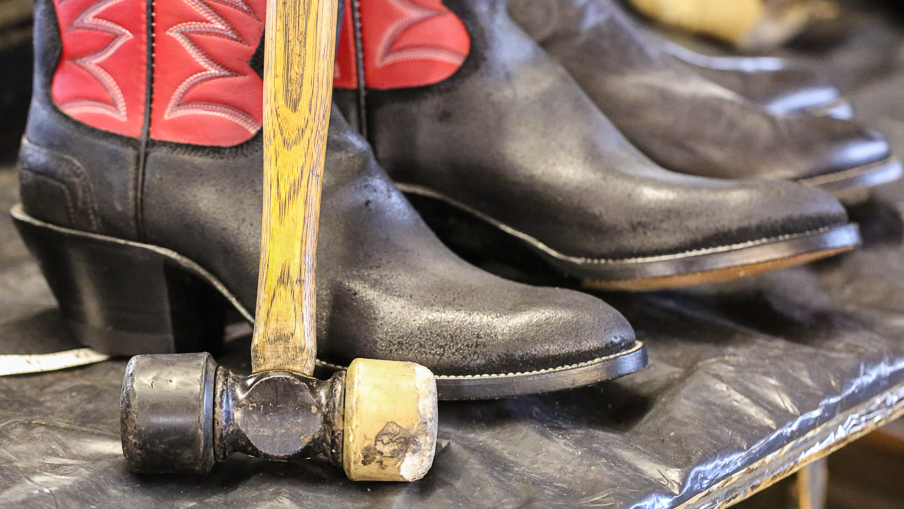
Expanded Image Gallery ~ Paul Bond Boots – Nogales, Arizona
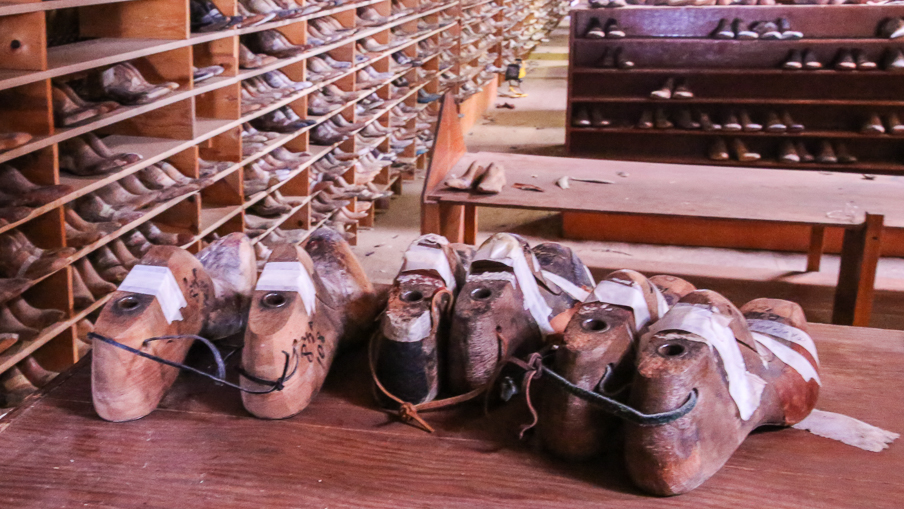
Detailed measurements and notations result in a yellow tag and a hand built last that the boot is built around.
The tag detailing all the custom requests and boot possibilities is tied to the boot and follows it throughout.

After the lasts have served their purpose and are removed from the finished boot they are retired to the third floor of the barn-like structure where all this boot building effort transpires.
Along with the lasts and the names and details notated, there are the stories.
Stories connected with the boots and the people for which the boots are destined.
Someone needs to put the stories on paper.
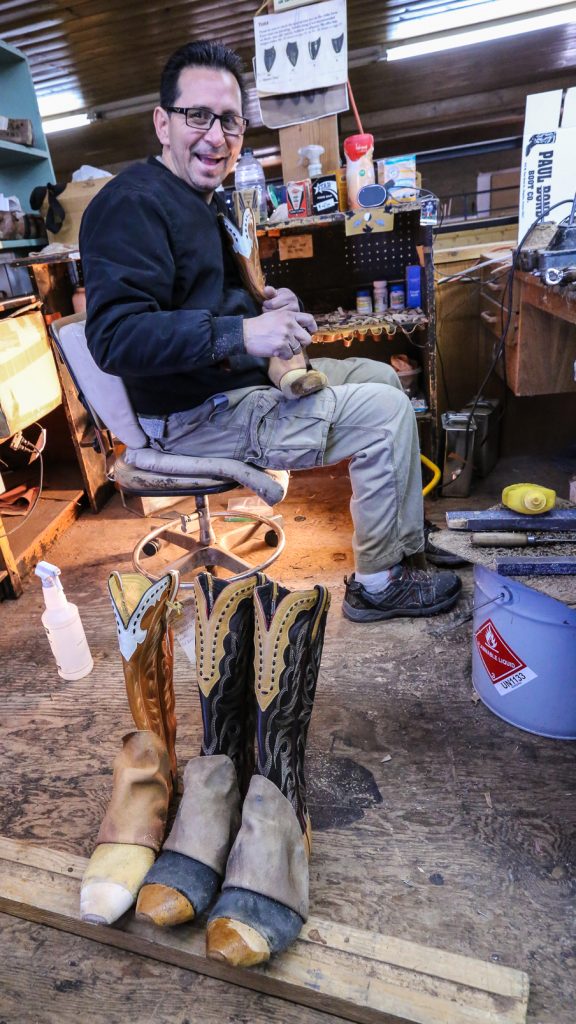
Juan Ariano can take the measurements and build the lasts.
I caught him shaping, sanding, moistening, stretching, soft gluing, forming, cutting, trimming and nailing: making the toe of the boot.
Nine years ago Mr. Bond taught Juan Ariano how to make the boot.
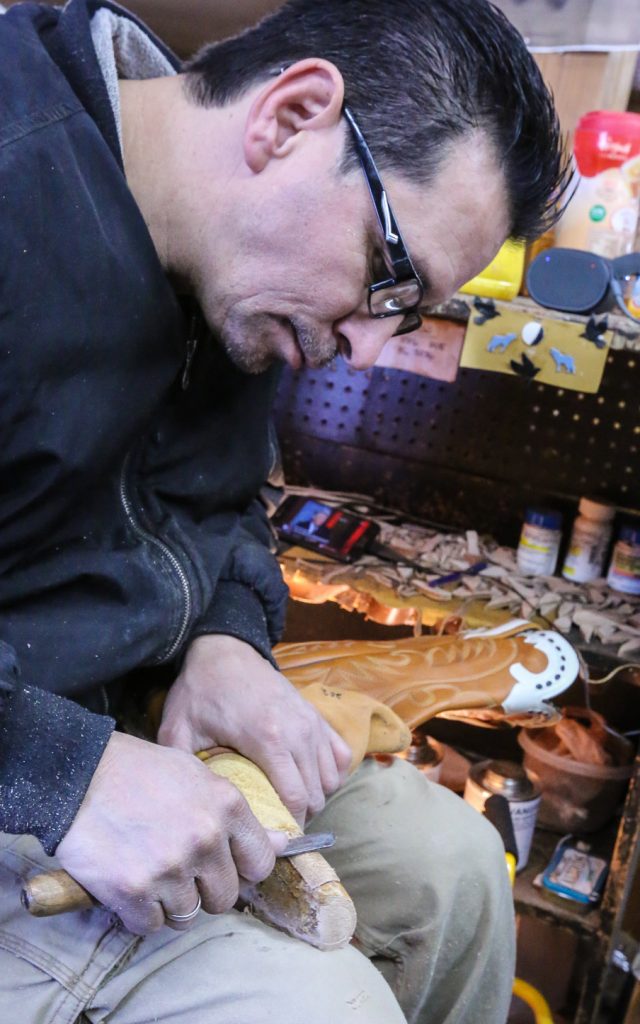
Sharp knives, sharp edges.
Tools are constantly sharpened.
As is the eye.
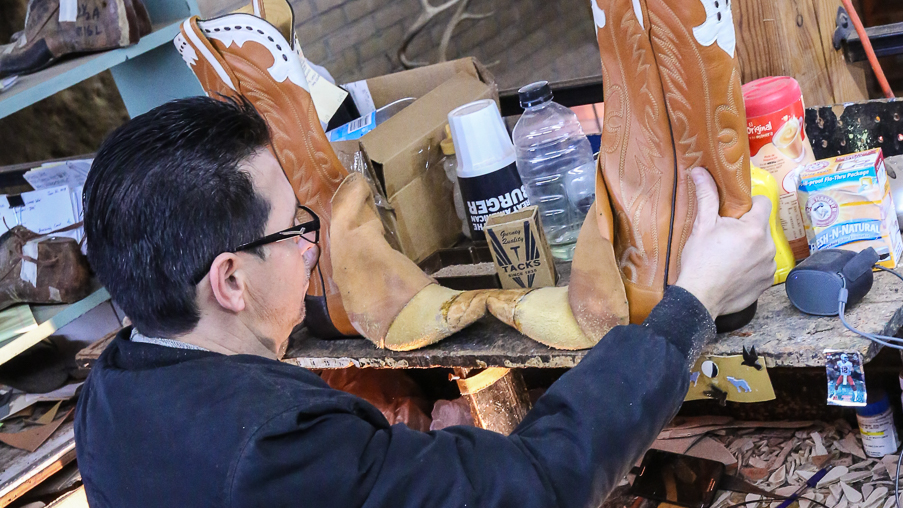
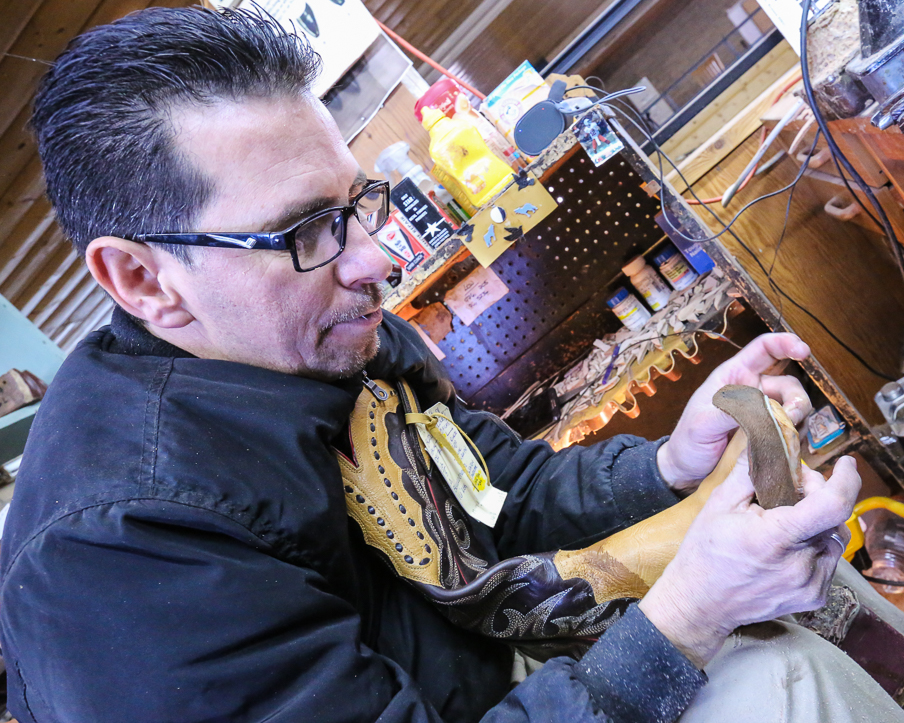
Eight types of formed leather toes.
Toe stitching available as well.
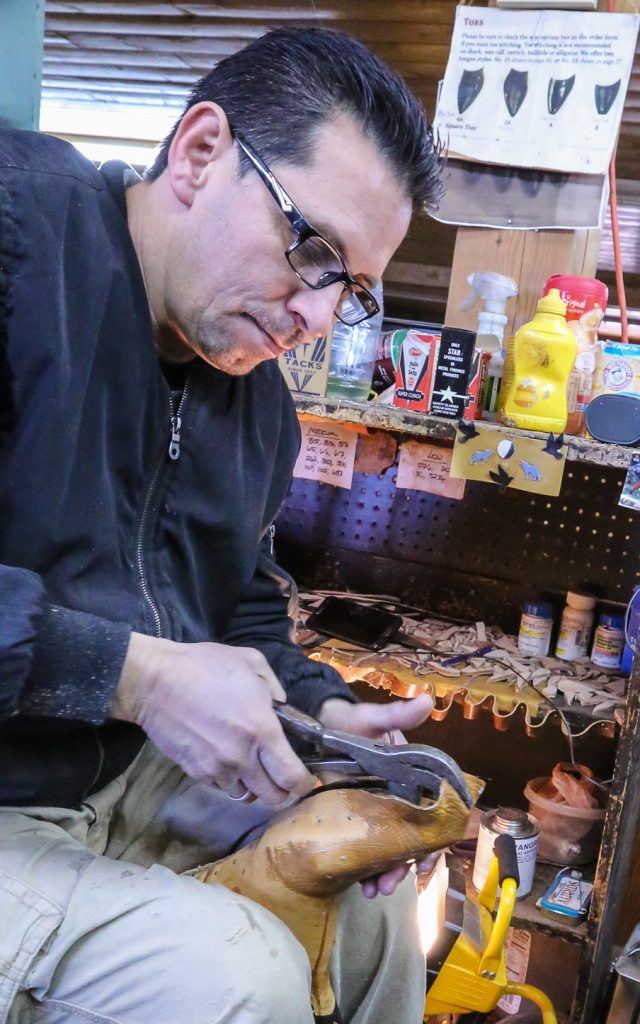
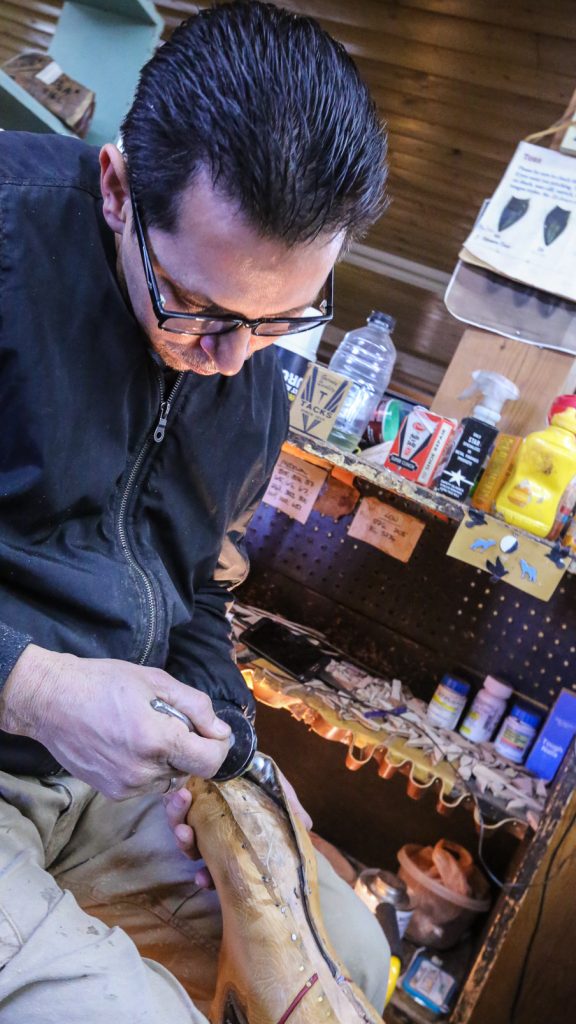
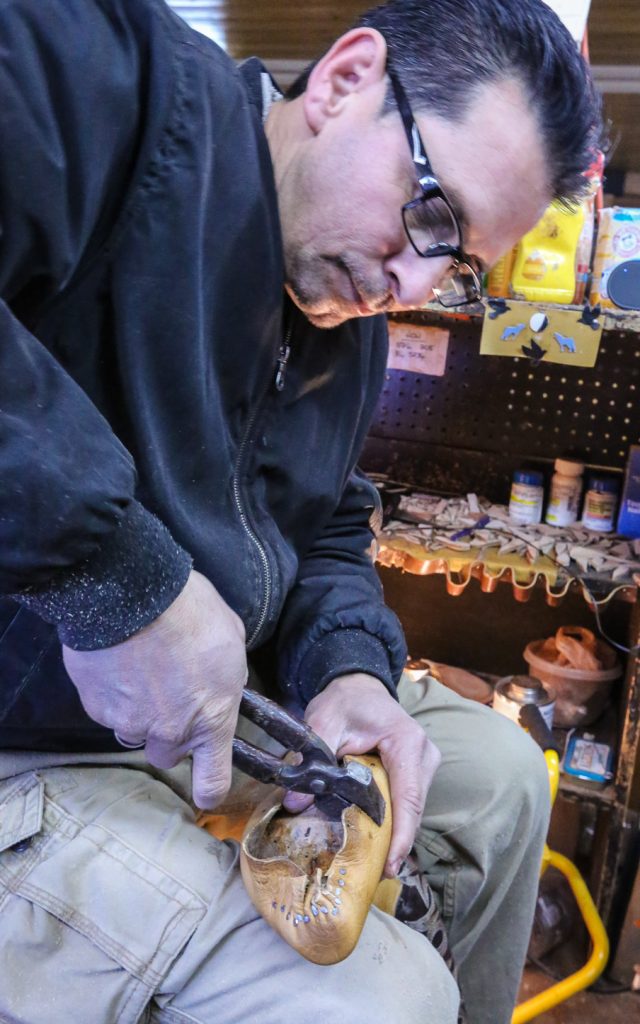


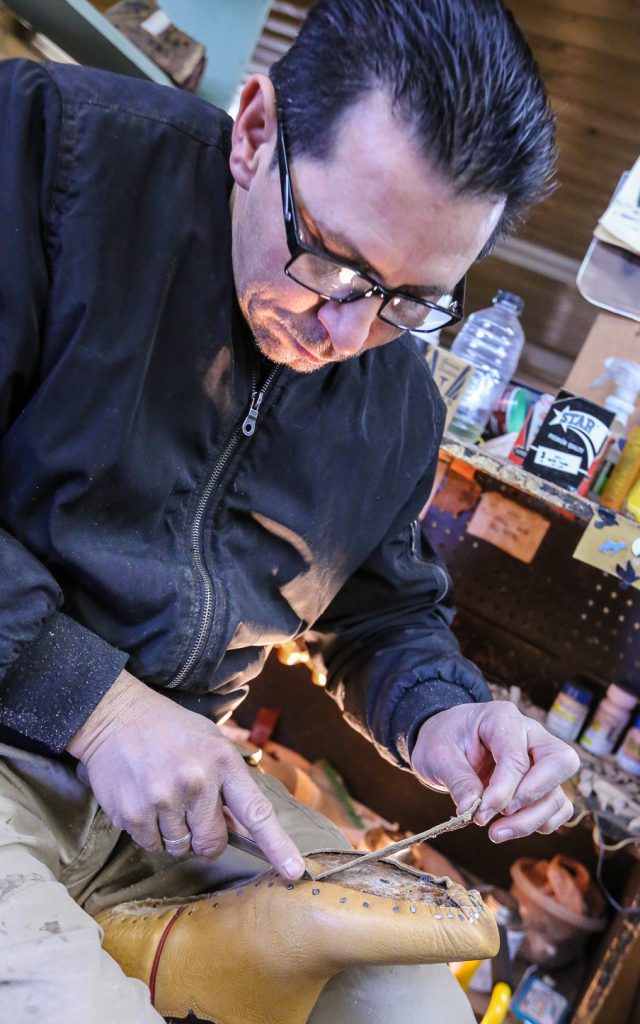

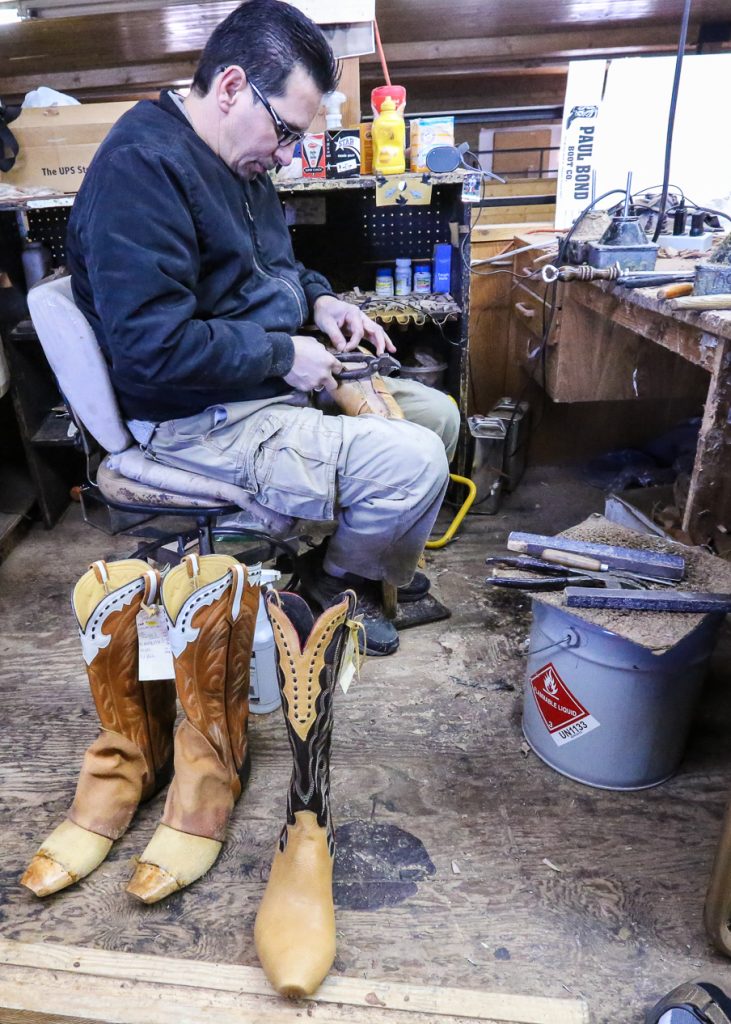
“Paul Bond knew about cowboys. He grew up on the family ranch near Carlsbad, New Mexico. By the age of sixteen he was breaking horses for a cavalry remount station, riding bareback broncs at area rodeos, and learning custom boot making at a local saddle shop. Rodeo lured him off his home range and he started going down the road to all the big shows from Fort Worth and Boston, to New York’s Madison Square Garden. He rode bareback horses and also worked up a contract act featuring trick and Roman riding. In the off-seasons, he continued to make custom boots and in the mid-1940s he opened a custom made boot shop back in Carlsbad. He moved the outfit to Nogales, Arizona in 1957. “
“To keep up with the demand for his boots, he needed the skilled leather craftsmen who were abundant along the border. “
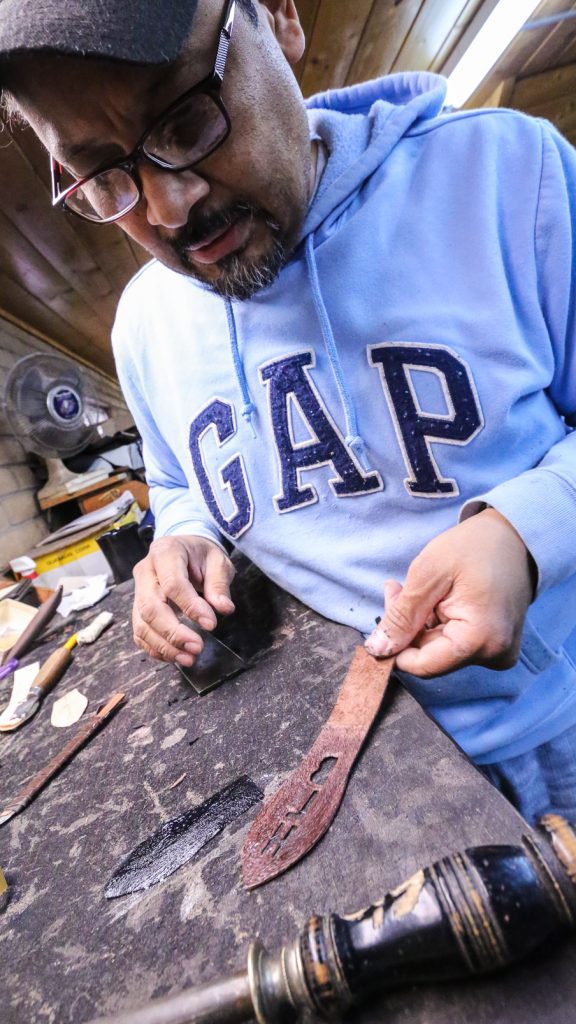
Boot pulls tailored to the customer’s order.
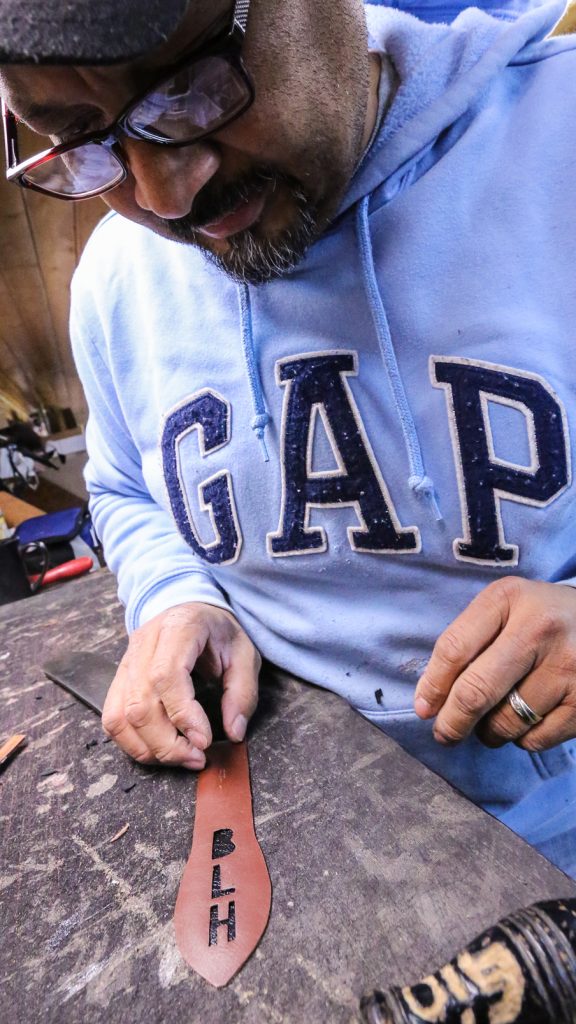
Fine, tedious and solitary work.
One would need to be exceedingly comfortable with one’s own company.

Giovanni gave me his name in a big bright voice
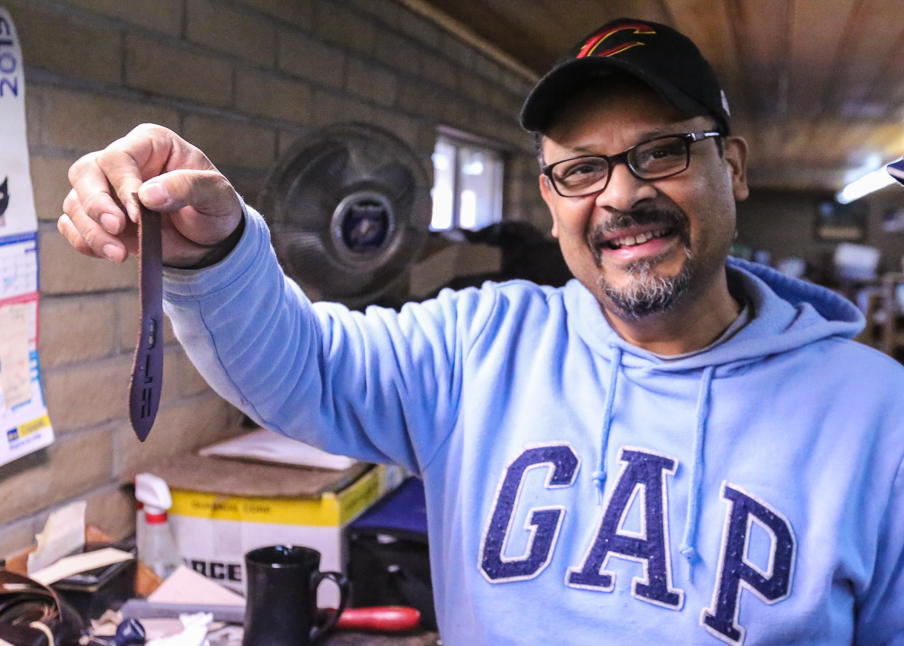
Pride.
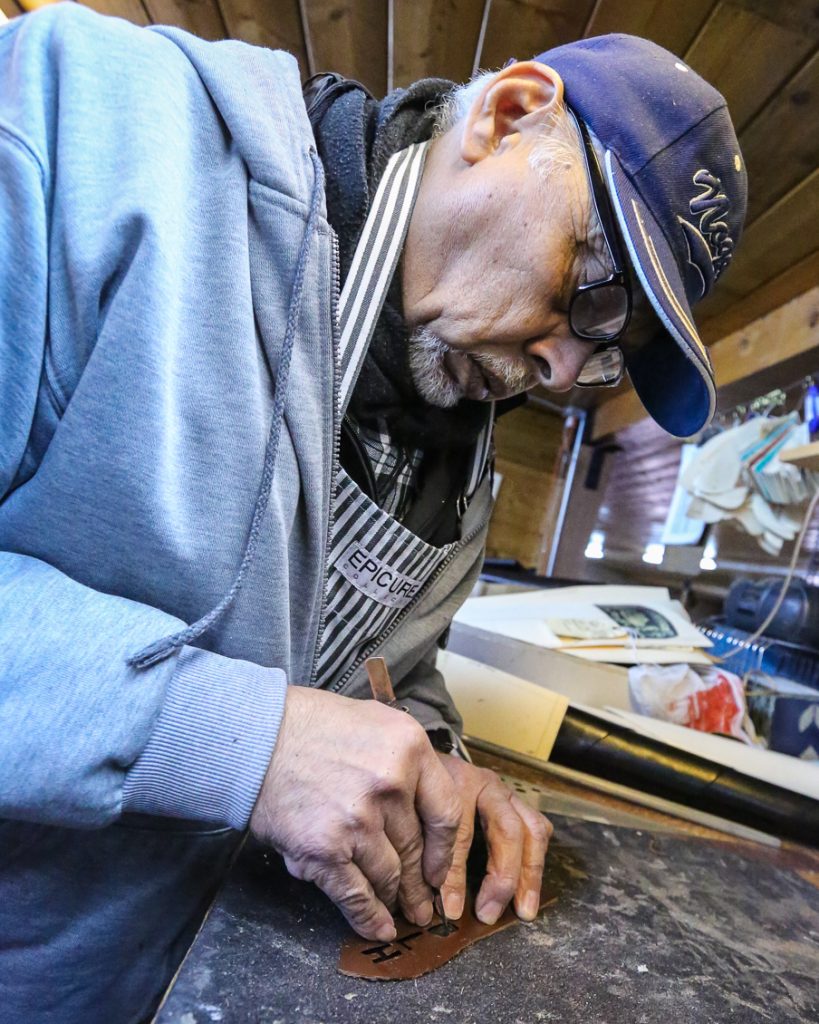
Thirty years of experience.
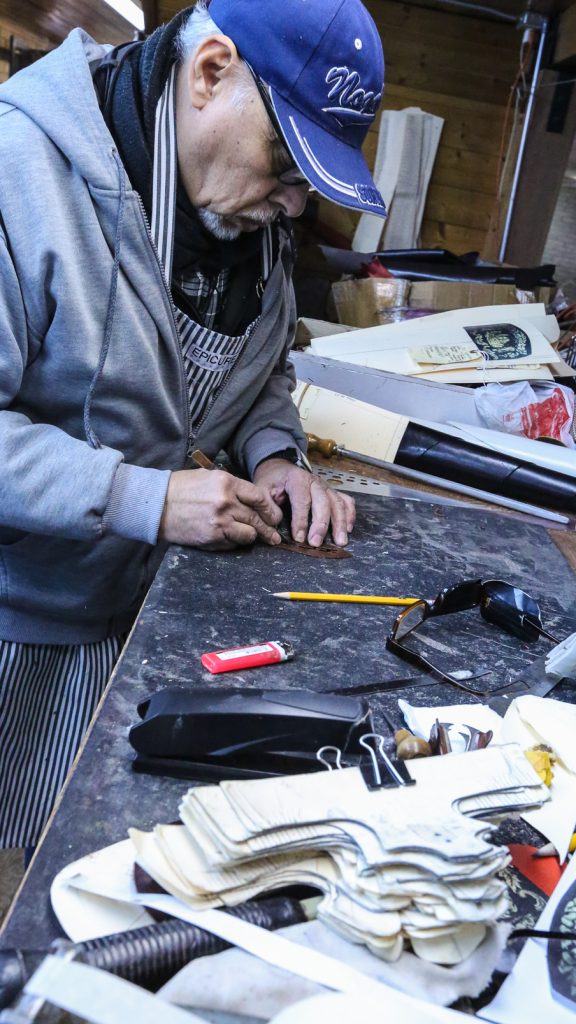
Someone hand cuts all those patterns.
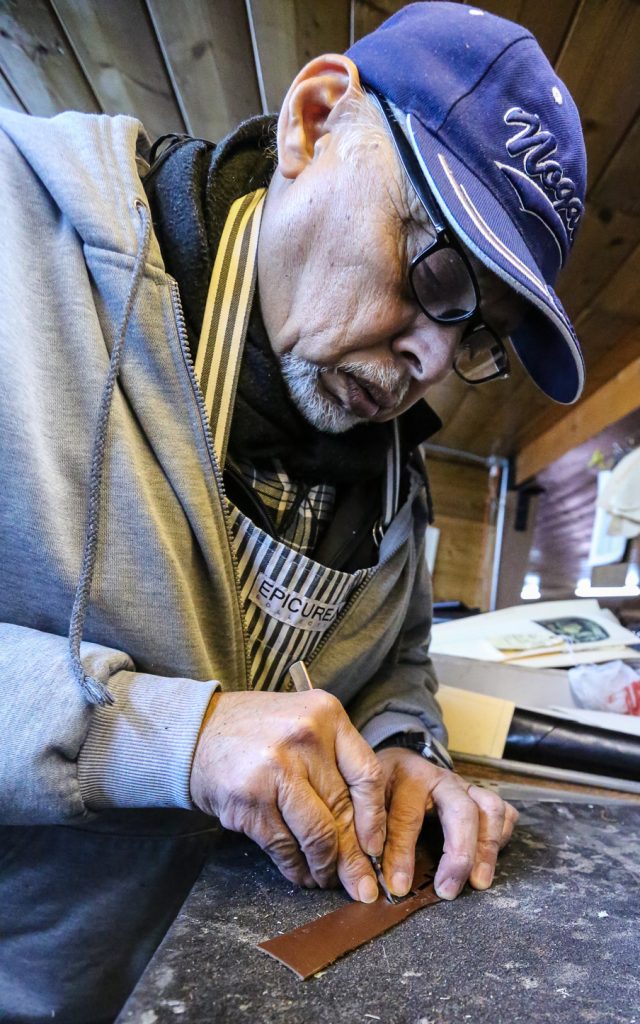
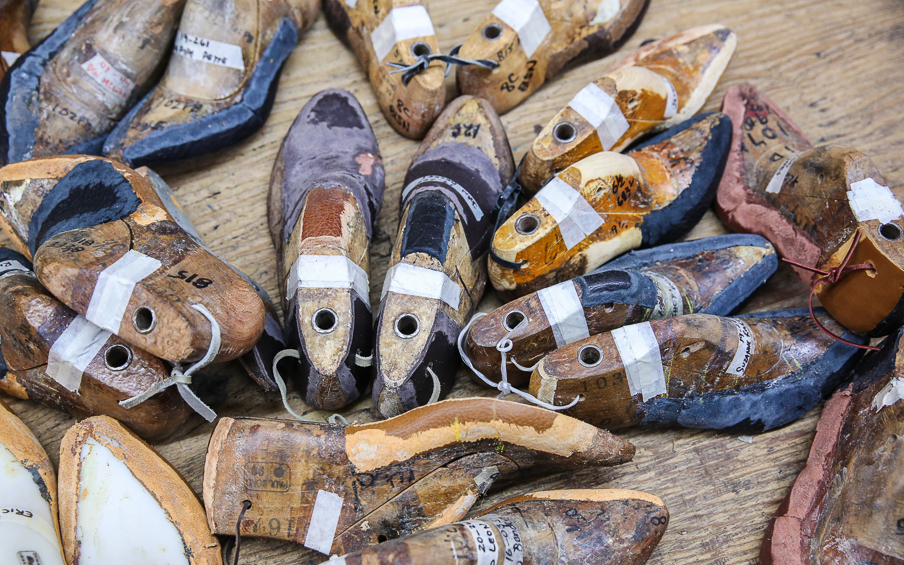
Lasts.
Lasts from the past.
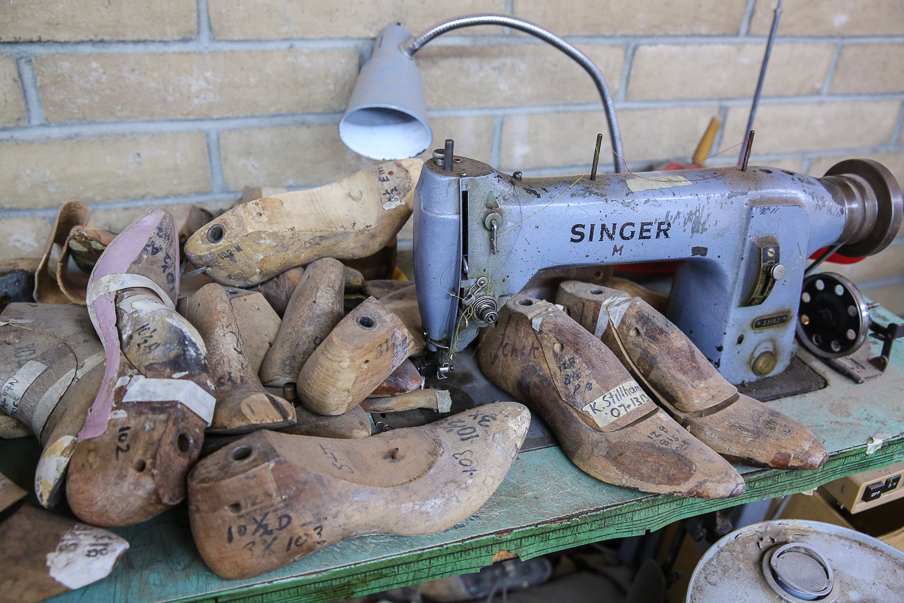
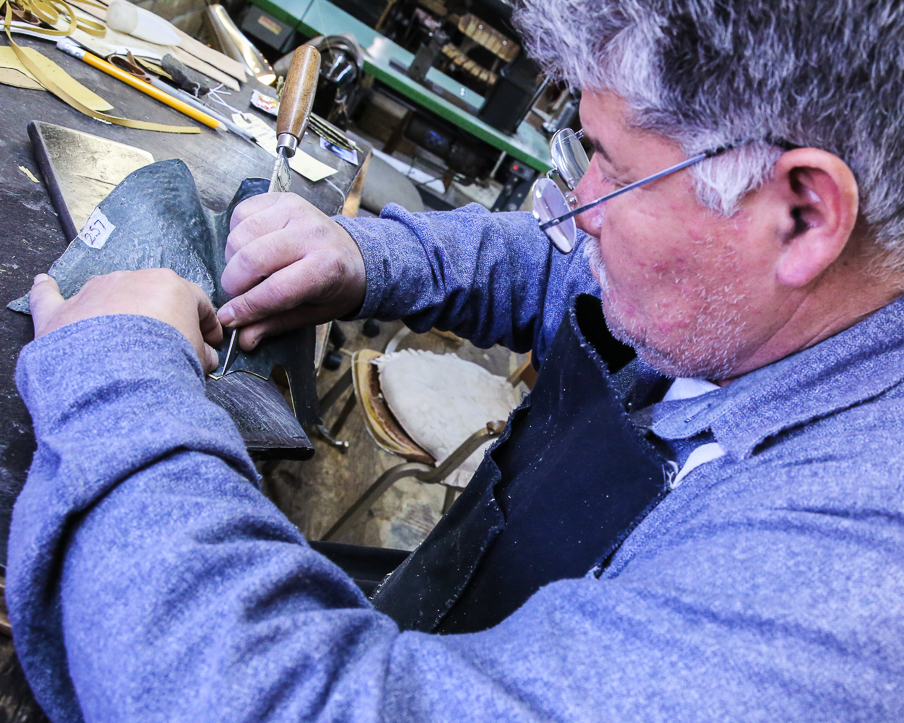
Uppers.
The Sock.
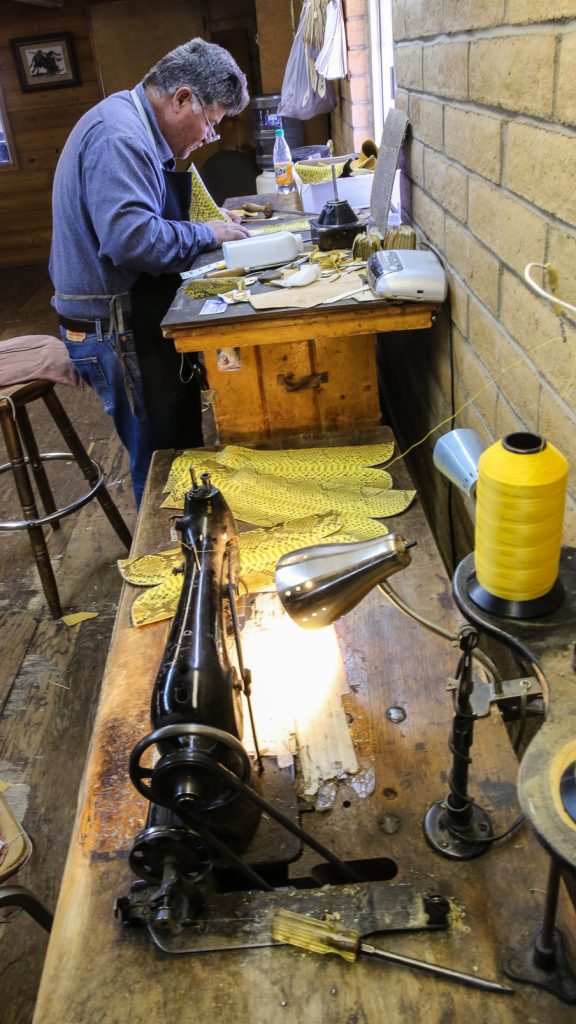
A lot happens at Jose Luis’ stations.
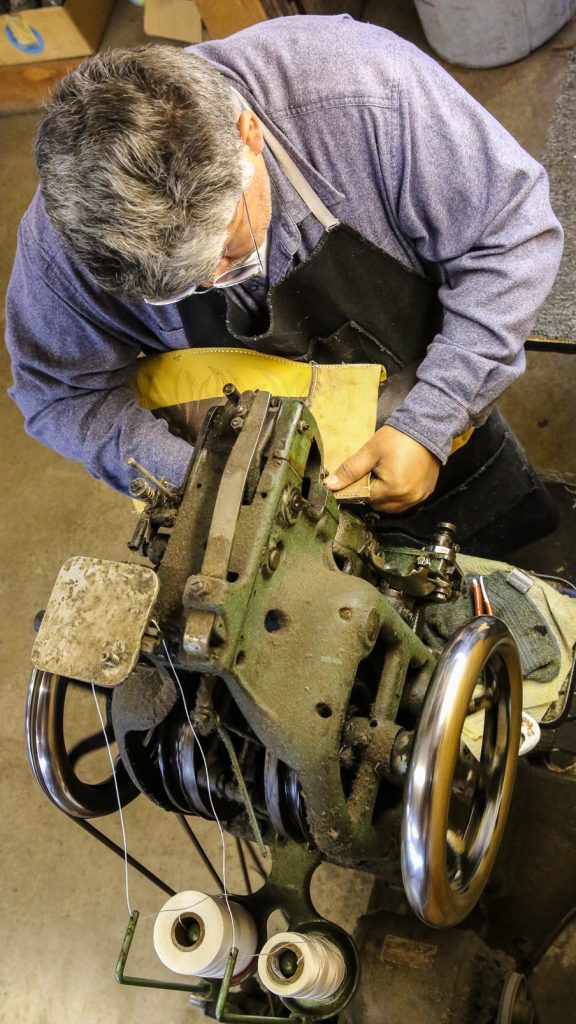

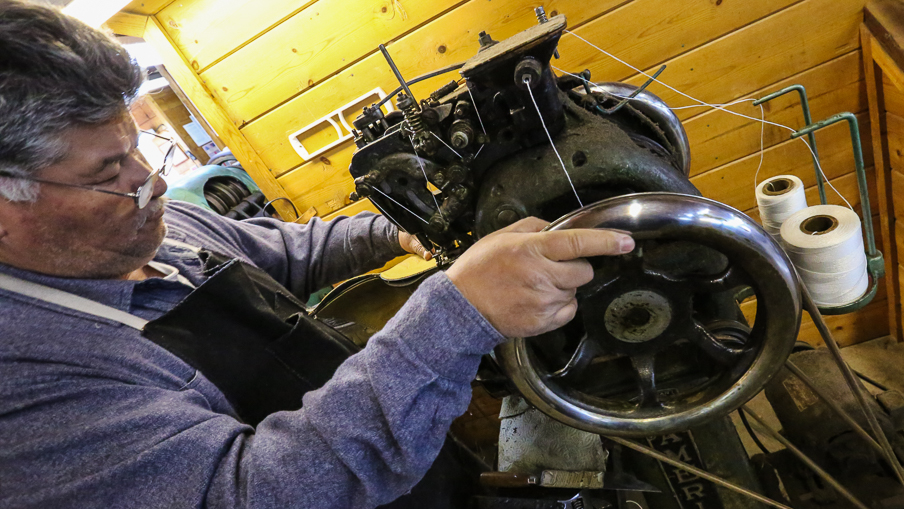
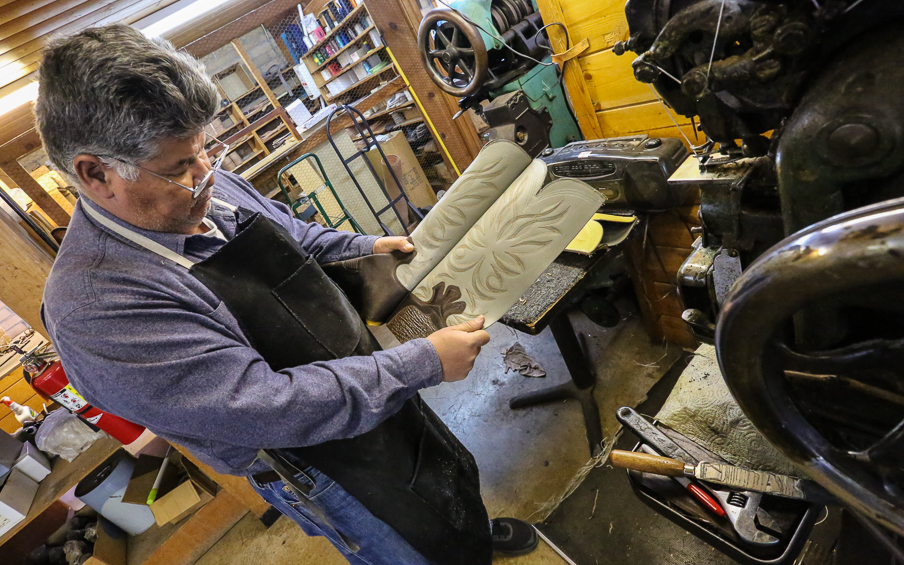
Critiquing one’s work with an eye of thirty years.
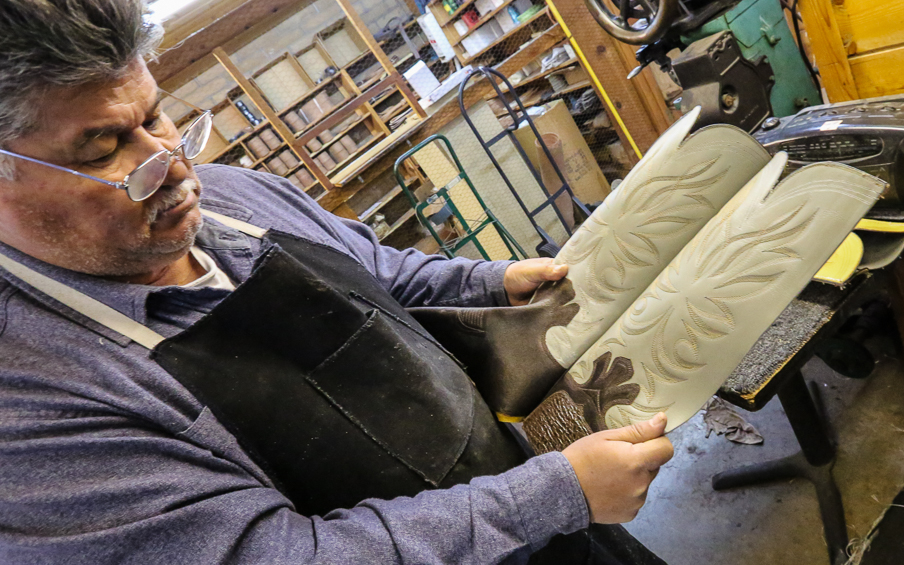
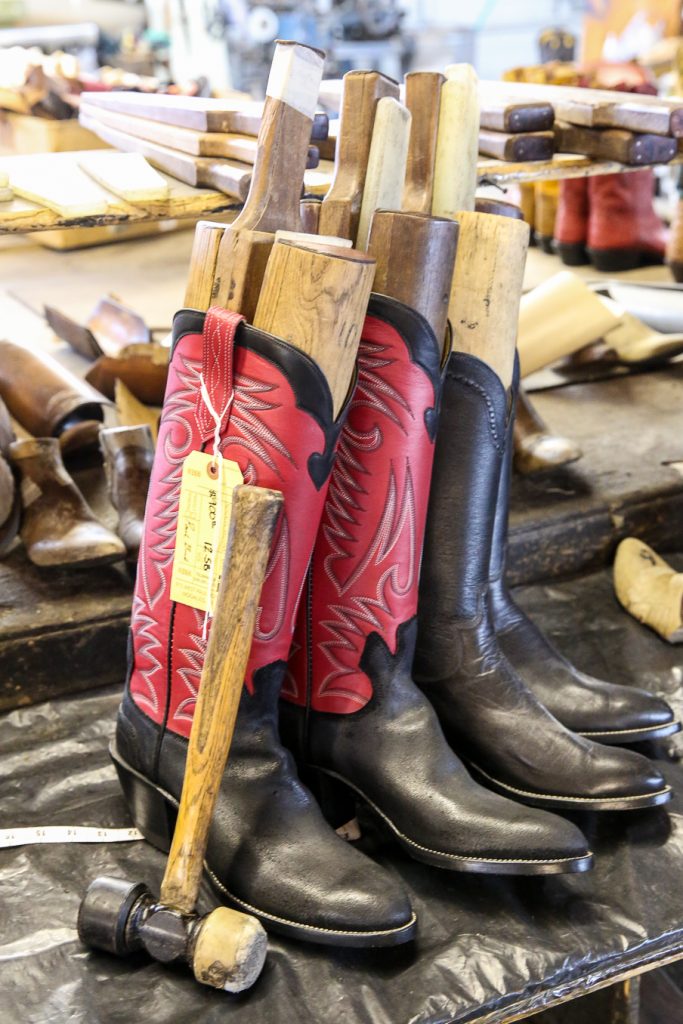
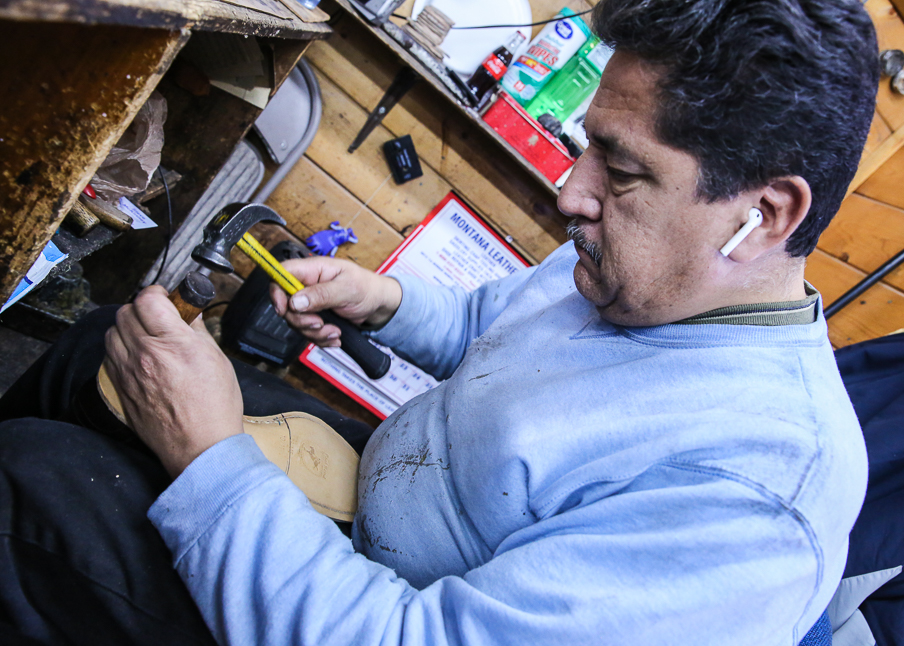
Soles and heels.
Seven different heel types of varying heights.
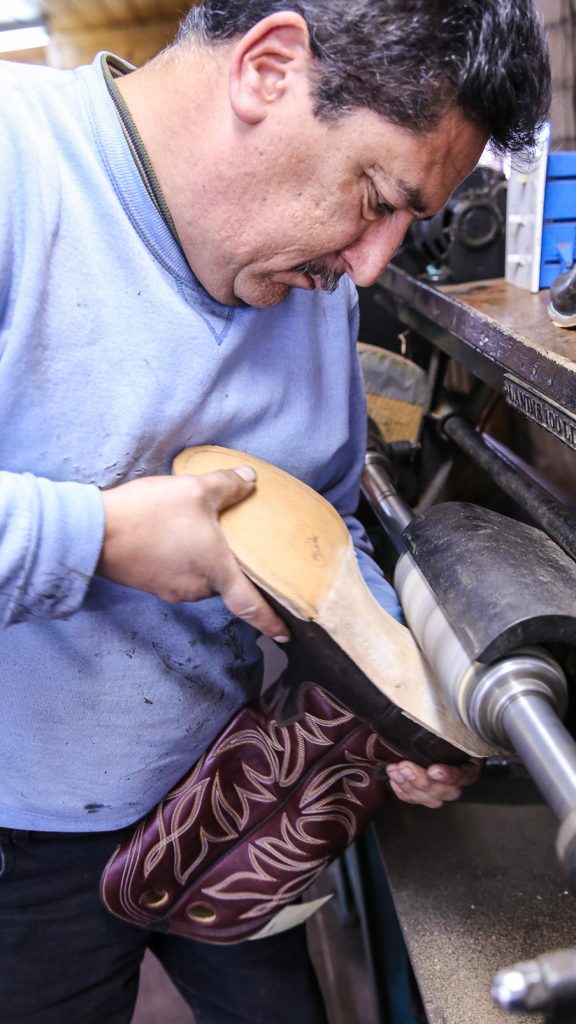
Sharp knives, sharp edges.
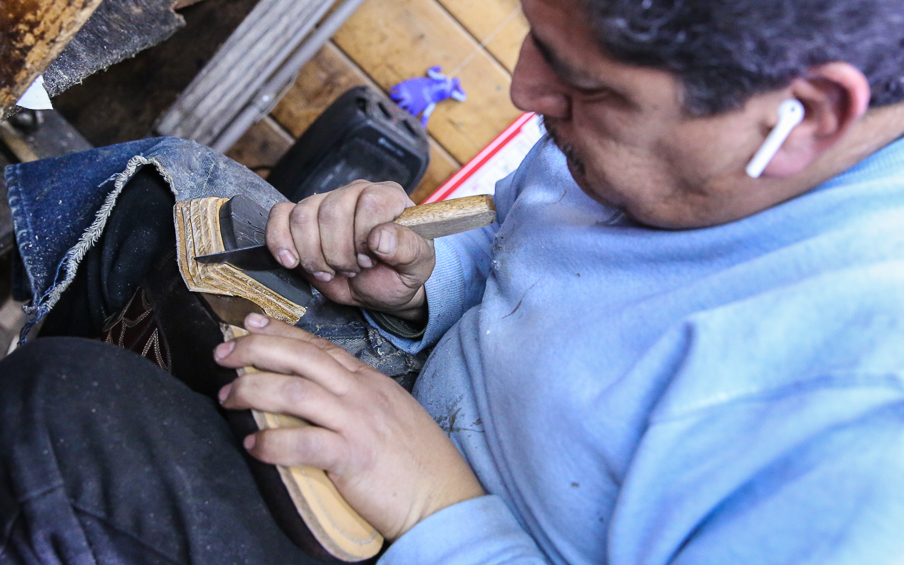
Stacked leather heels.

Hammers, brads and pegs.
Wooden pegs.
Moistening the pegs and leather soles, then drying in the sun sets the wooden pegs in the leather.
Old school.

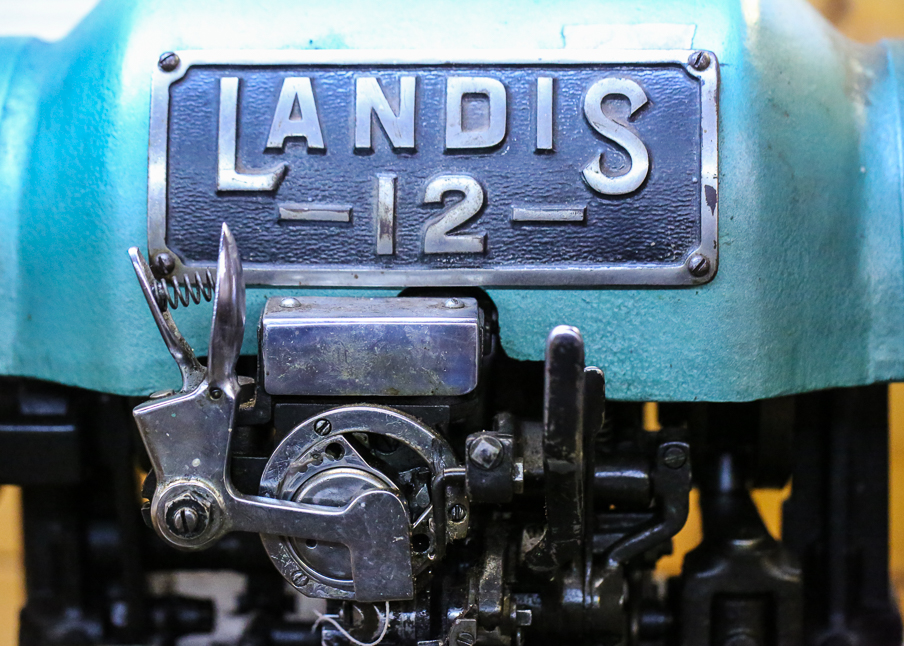
Impressive machines.
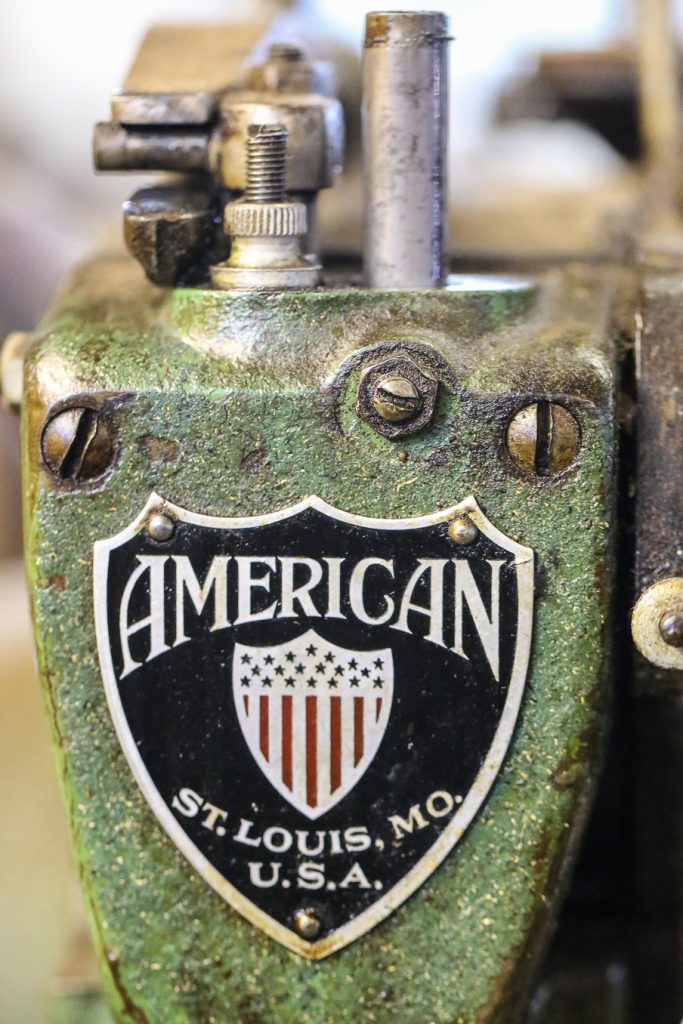

Repair work as well as new construction.
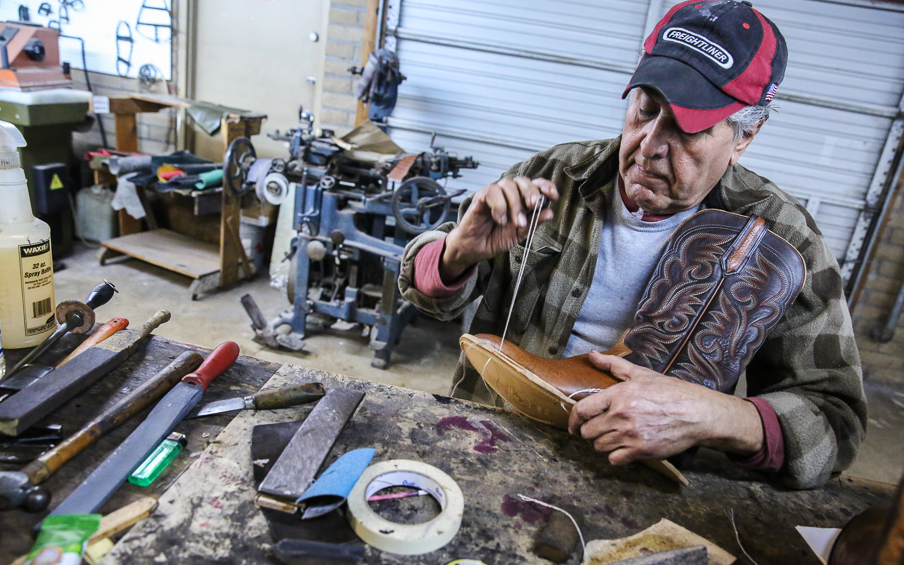
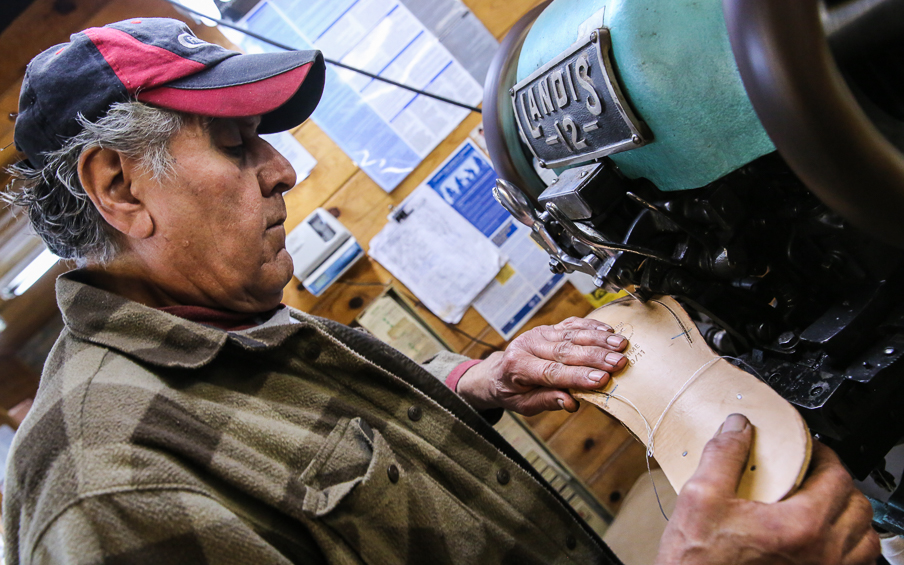
Machinery that needs daily servicing.
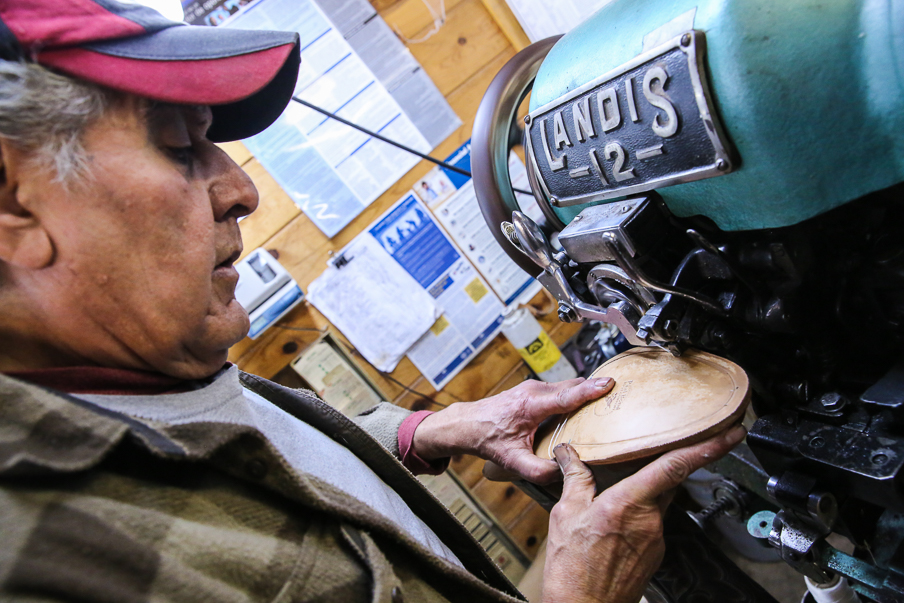
Got it right.
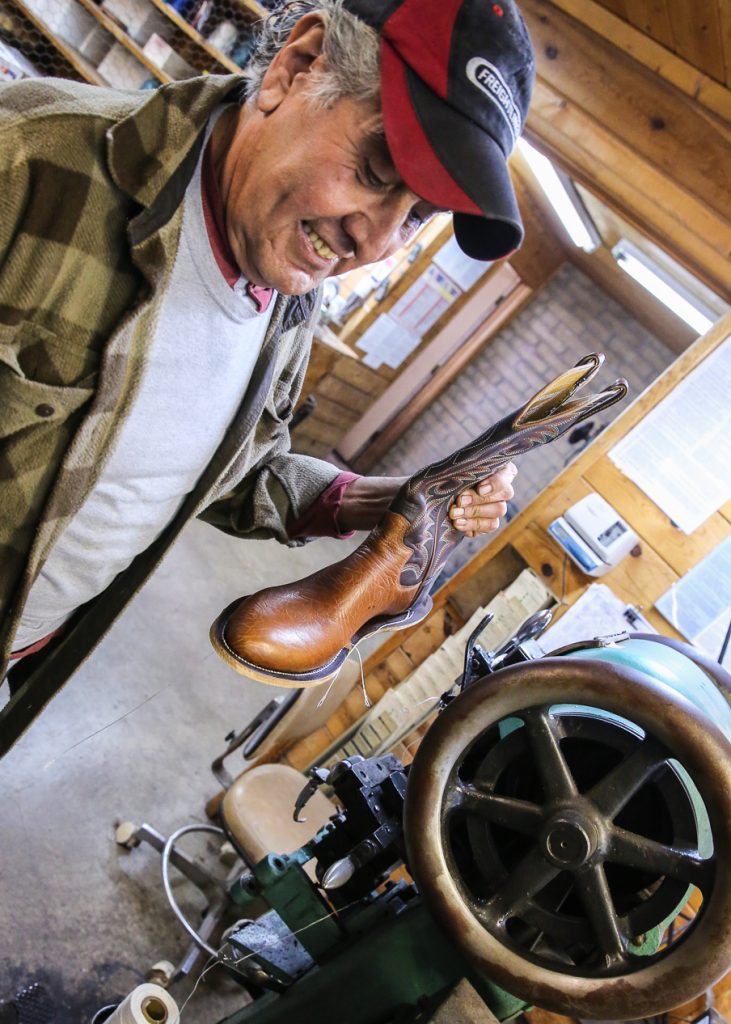
Paul Bond Boots facebook Group Link

Paul Bond Boots .Com facebook Link
Expanded Image Gallery ~ Paul Bond Boots – Nogales, Arizona
Thanks to Michael Ward of Paul Bond Boots for the invitation and hospitality.
One’s Work ~ Link To Similar ‘Work’ Related Posts
SOURCE LINKS
15 of the Best Cowboy Boots You Have Ever Seen
A Tribute To Paul Bond – True West Magazine
Paul Bond Left His Mark On Nogales
His Boots Are Made For Talking About: NPR
Through Time, Arizona Time ~ Mansions of Main Avenue – Tucson, Arizona
Warning: Use of undefined constant gad_content_tag_filter_replace - assumed 'gad_content_tag_filter_replace' (this will throw an Error in a future version of PHP) in /home/dx87kwtjkt0i/public_html/wp-content/plugins/web-ninja-google-analytics/webninja_ga.php on line 1813


Presidio Neighborhood
The city’s first neighborhood listed on the National Register of Historic Places, El Presidio is where Tucson began. Most of the structures date from 1860 to 1920 and include Sonoran Row houses, Mission Revival, bungalow style and American Territorial. El Presidio encompasses Hohokam pit houses, the 18th-century Spanish colonial presidio, the subsequent Mexican village, and Anglo homes designed by legendary Tucson architects such as Henry C. Trost and Holmes & Holmes. Celebrated territorial families left their names on historic houses they built: merchants including the Steinfelds and Jacomes, bankers, attorneys and civic leaders including Sam Hughes and J. Knox Corbett. Home to restaurants, offices, shops and the Tucson Museum of Art, this is an eminently walkable neighborhood.

Bounded by Sixth Street to the north, Church and Stone avenues to the east, Granada Avenue to the west, and Congress Street to the south, El Presidio features historic homes from the 1800s side by side with law offices, architecture firms, and Tucson City Hall.
The downtown neighborhood is a testament to the city’s delicate balance between embracing its origins, respecting the people who first called the Old Pueblo home, and moving forward as a modern city with over half a million residents.

El Presidio’s origins date back to 1775 when Hugo O’Conor and Spanish settlers built a walled military fort, Presidio de San Augustín del Tucson, for protection from Apache attacks.

Inside the fort, 400-500 residents lived in homes and barracks, tended to horses, went to church, and buried their dead.
The Spanish were not the first inhabitants in the area, though. Hohokam Indians called El Presidio home from 700-900 A.D.

Each wall of the fort was 750 feet long, 18 inches to four feet thick, and six to 16 feet high. Take a walk down Court Avenue to Pennington Street, up Main Avenue and across Washington Street and you will have retraced the walled portion of the original fort.
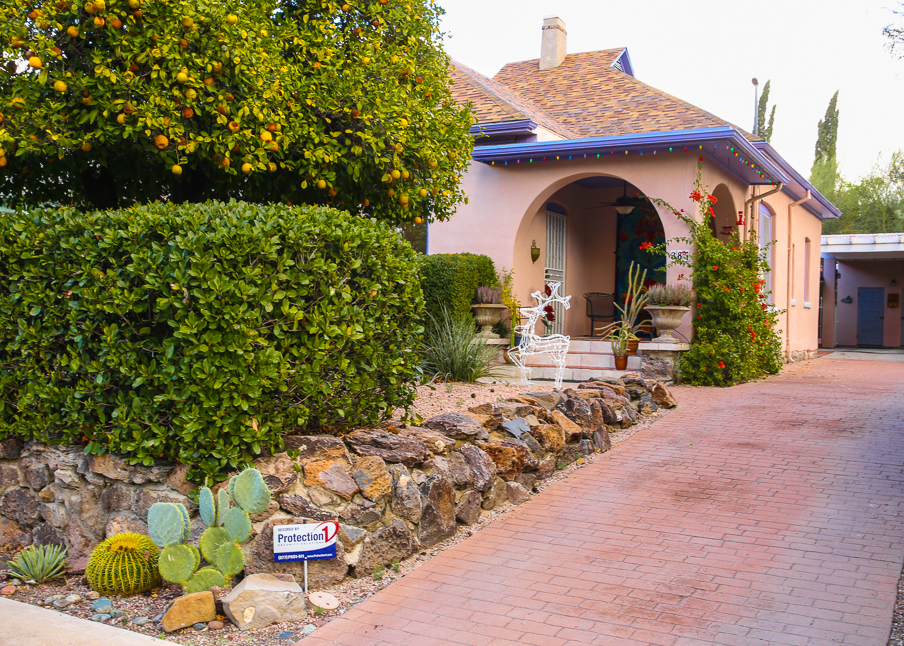
Apache attacks dwindled by the 1850s and the walls started coming down.

Modern Tucson covered up the remaining fort walls long ago — the last known portion was demolished in 1918 — but remnants can still be found underground and the location of the east side of the wall is marked in the courtyard of the old Pima County Courthouse.
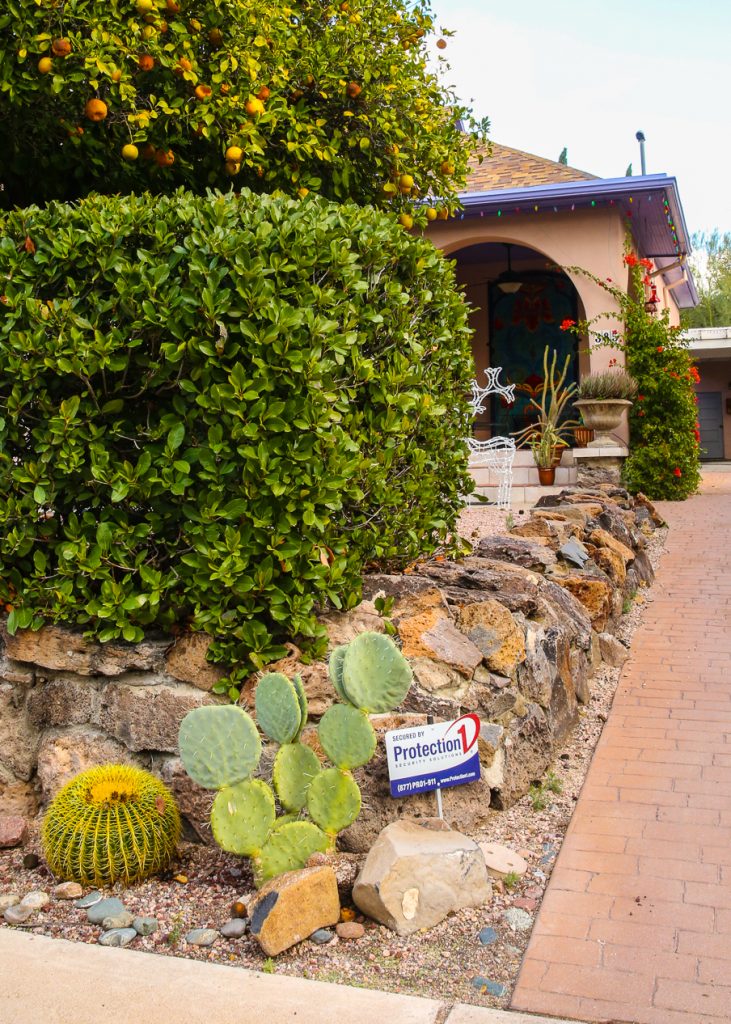
A few short blocks of Tucson’s Main Avenue, an area once nicknamed “Snob Hollow,” showcase Tucson’s architectural variety, as the mansions wealthy residents built here changed along with the trends over time.
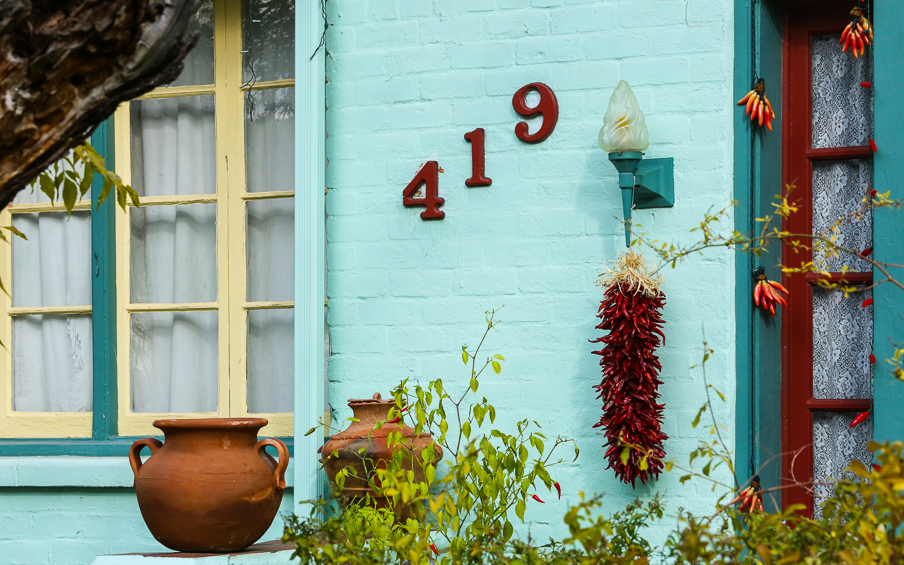

Leonardo Romero House
The Leonardo Romero house, built about 1868, is also part of the museum’s historic block. It began as a transformed Sonoran row house with a pitched roof, but underwent many alterations over time, including the addition of a brick wall. Today the unremarkable looking building houses a ceramics program.
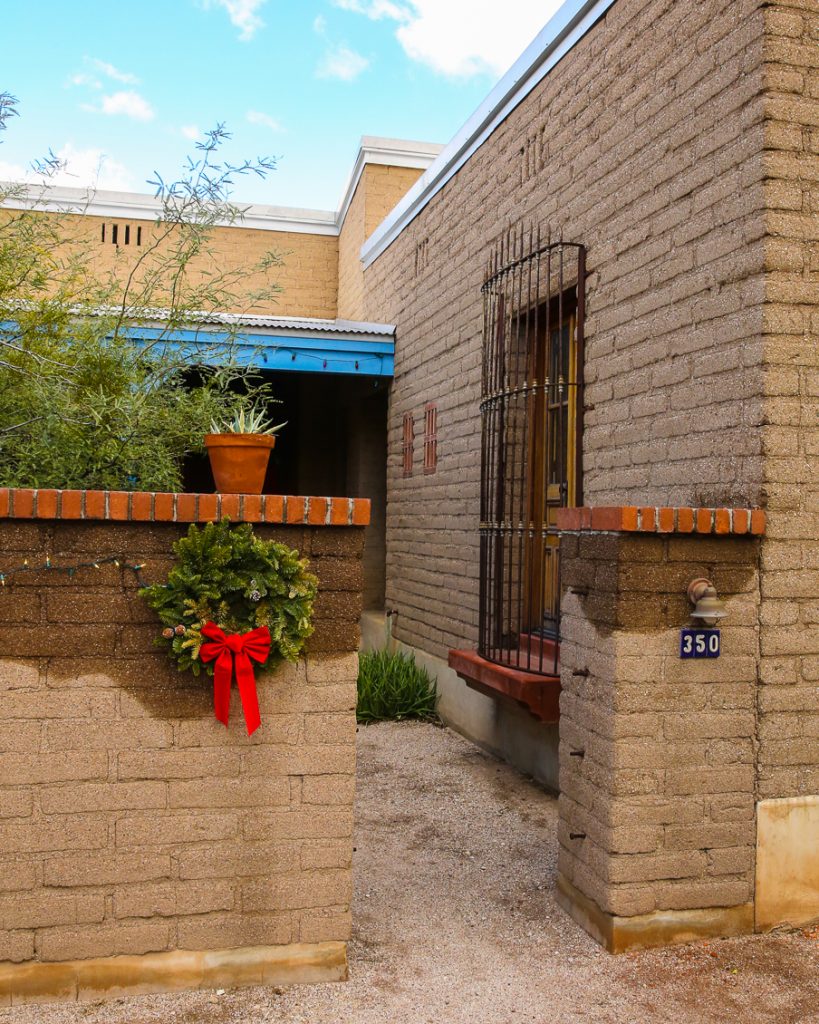
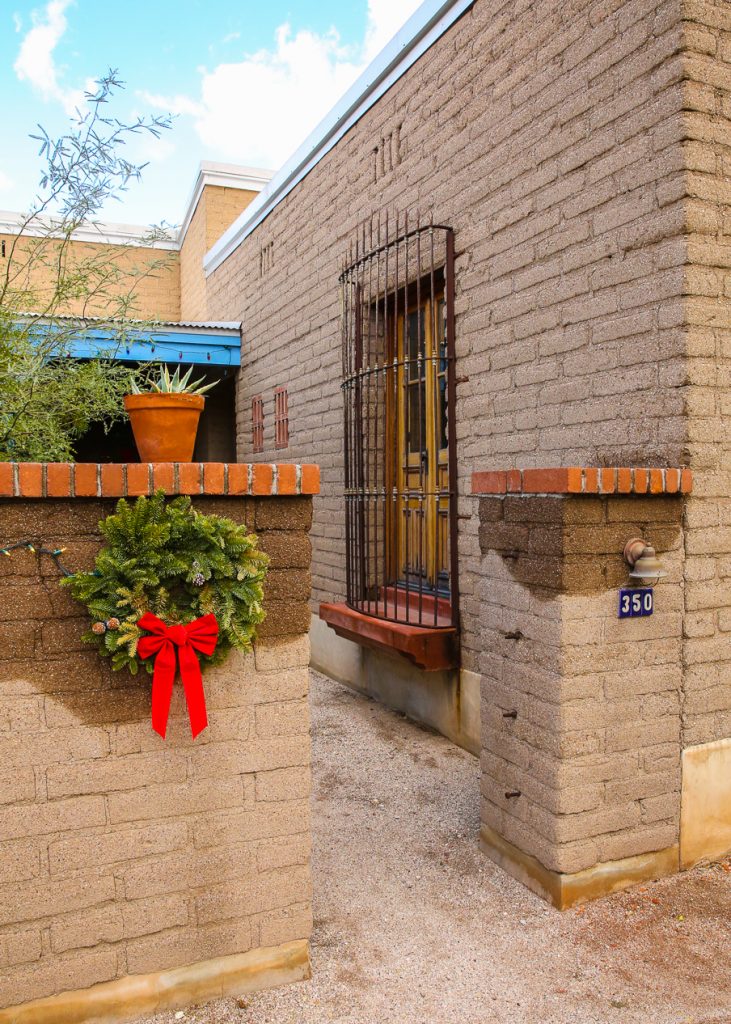

La Casa Cordova
The oldest homes are adobe, and several are preserved as part of the Tucson Museum of Art’s Historic Block. One of these is La Casa Cordova, a typical Sonoran row house thought to have been built before 1848. It is believed to be the oldest remaining structure in downtown Tucson.
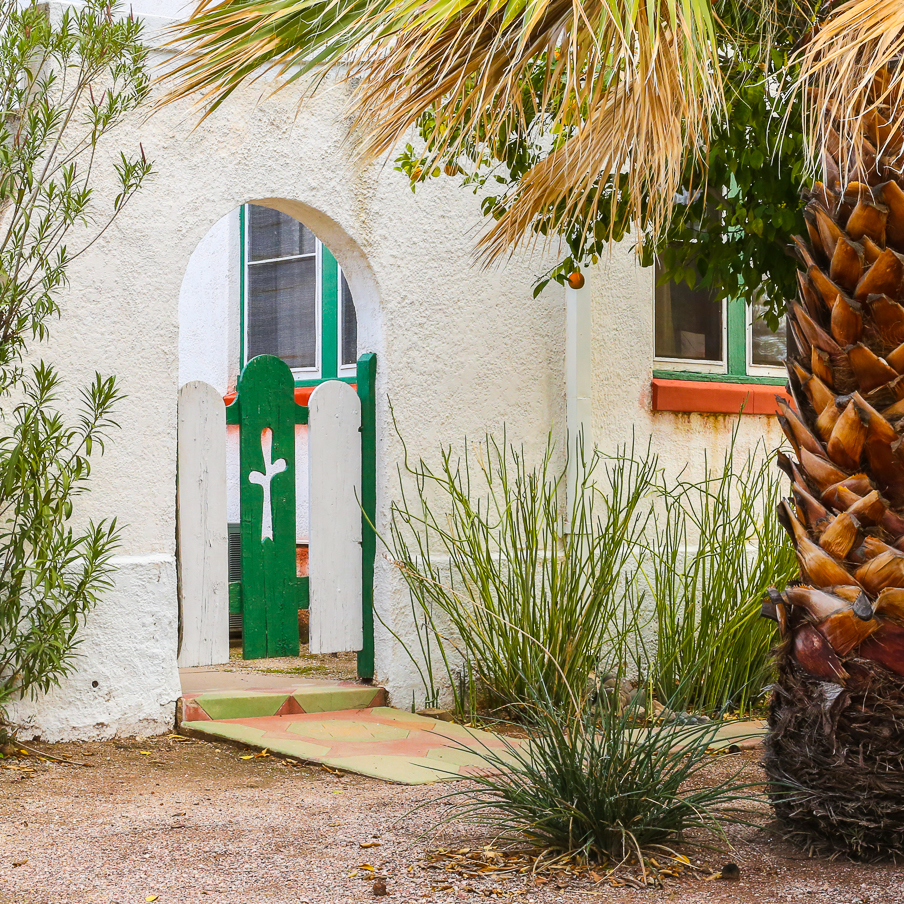
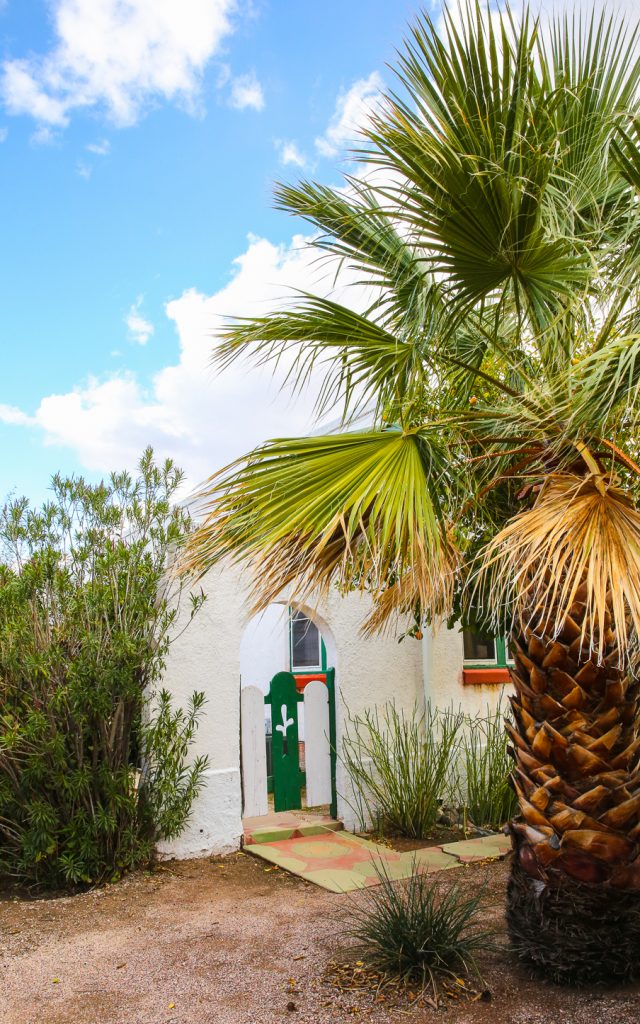
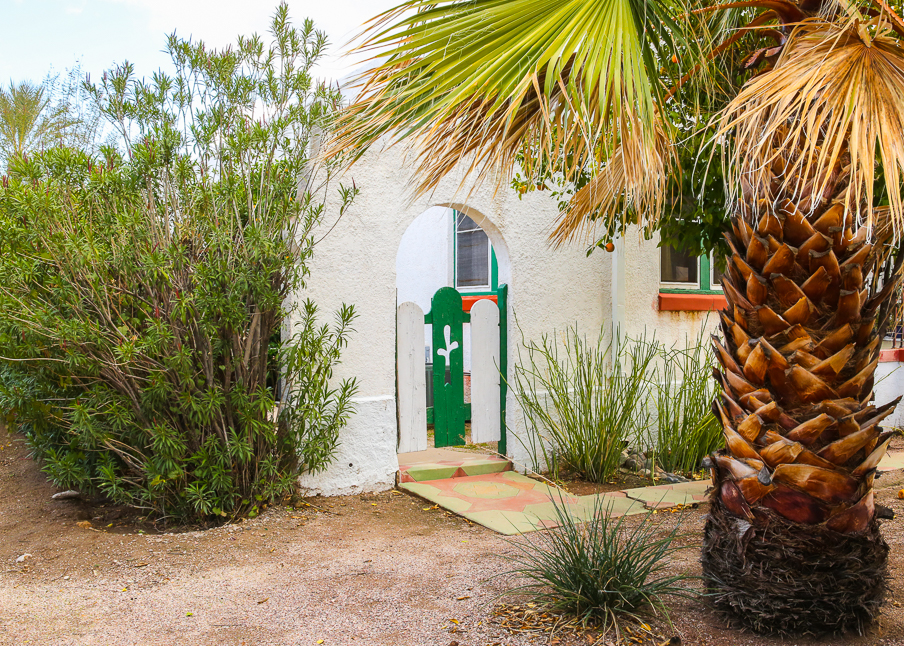
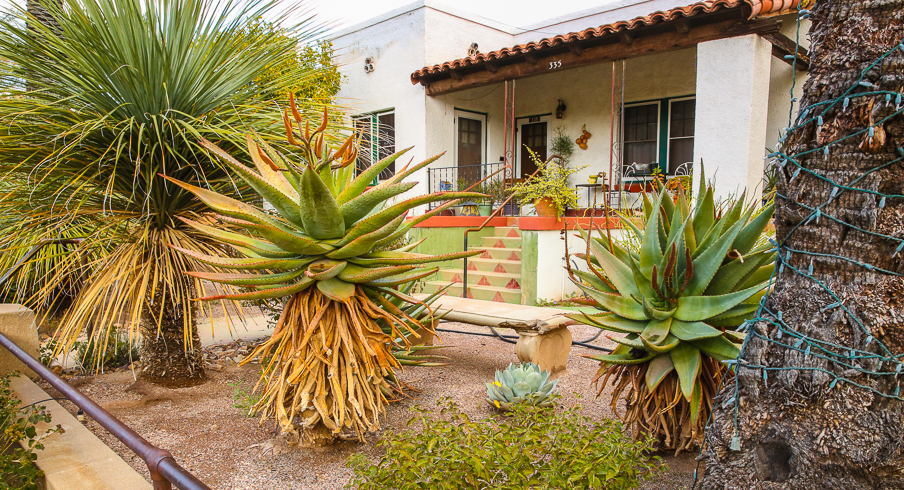
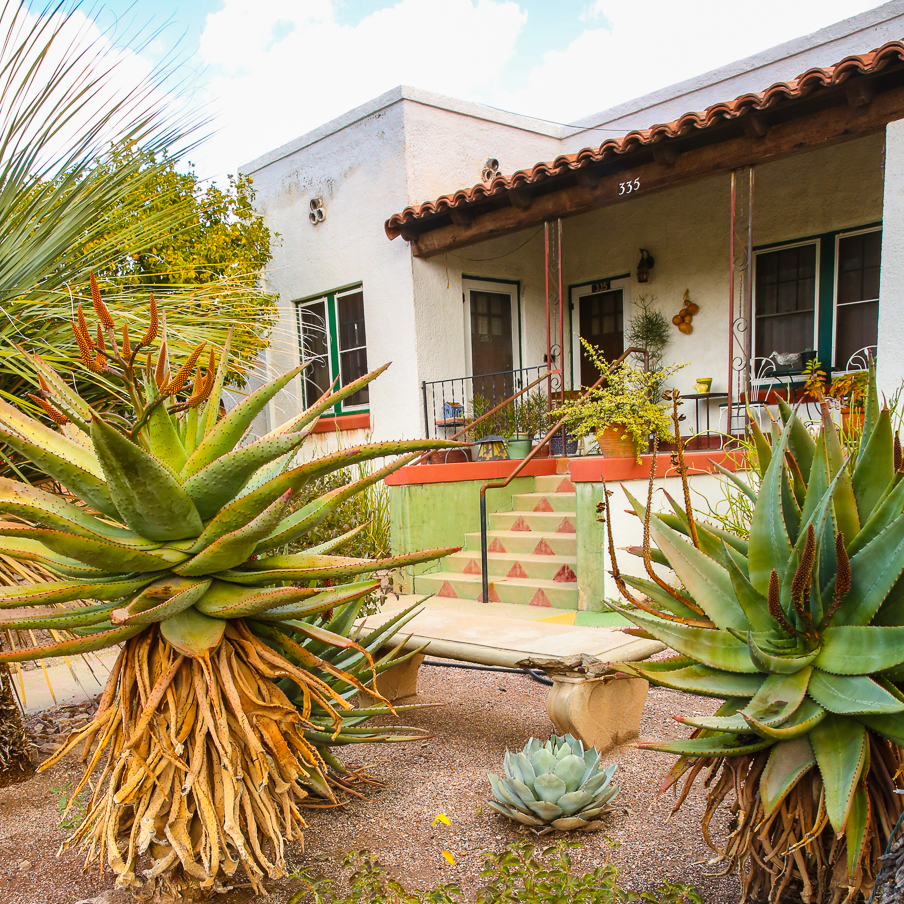

Edward Nye Fish House
The museum’s historic block includes the adjacent Edward Nye Fish house, which was constructed about the same time. Like the Steven-Duffield house, the Fish house is a typical Sonoran row house and also often hosted social gatherings and visiting dignitaries.
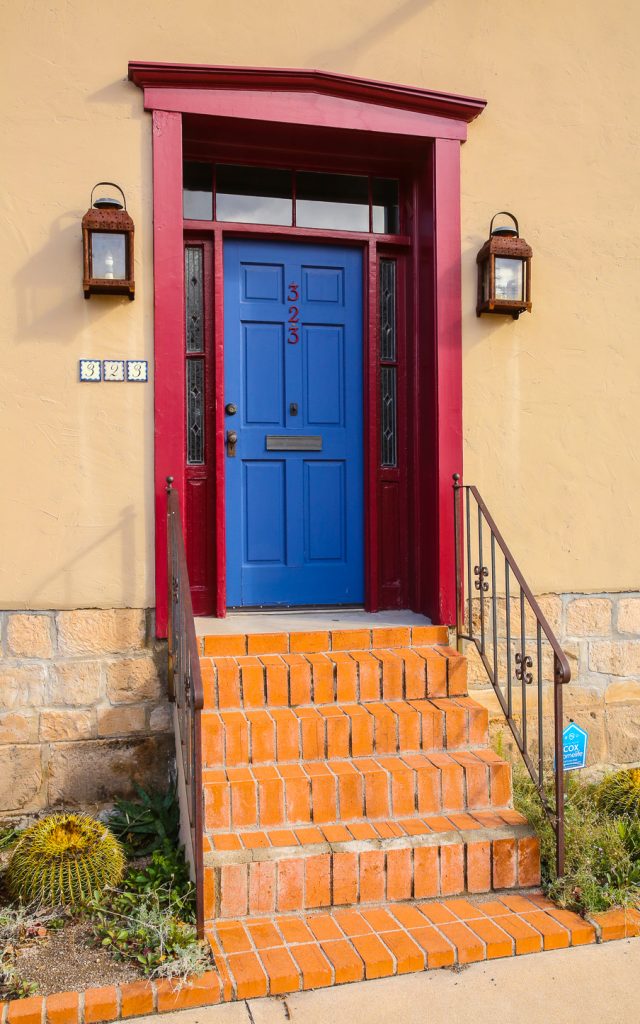
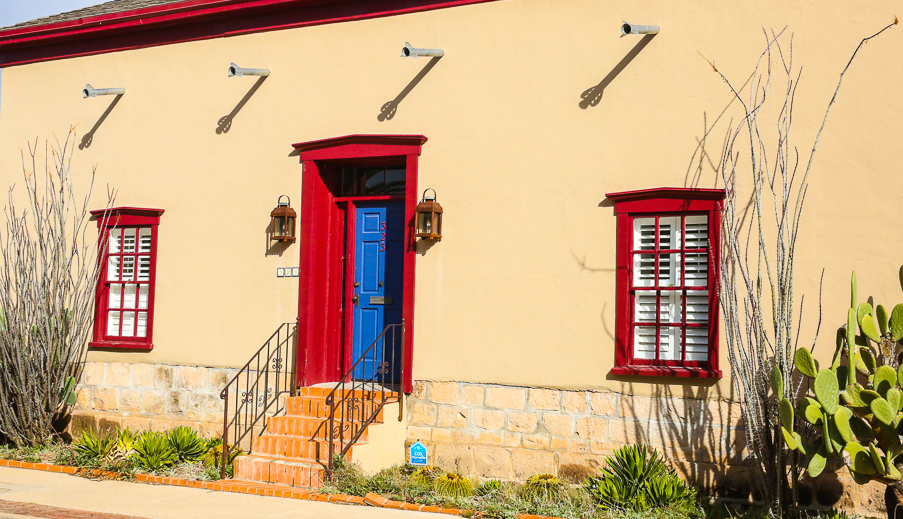

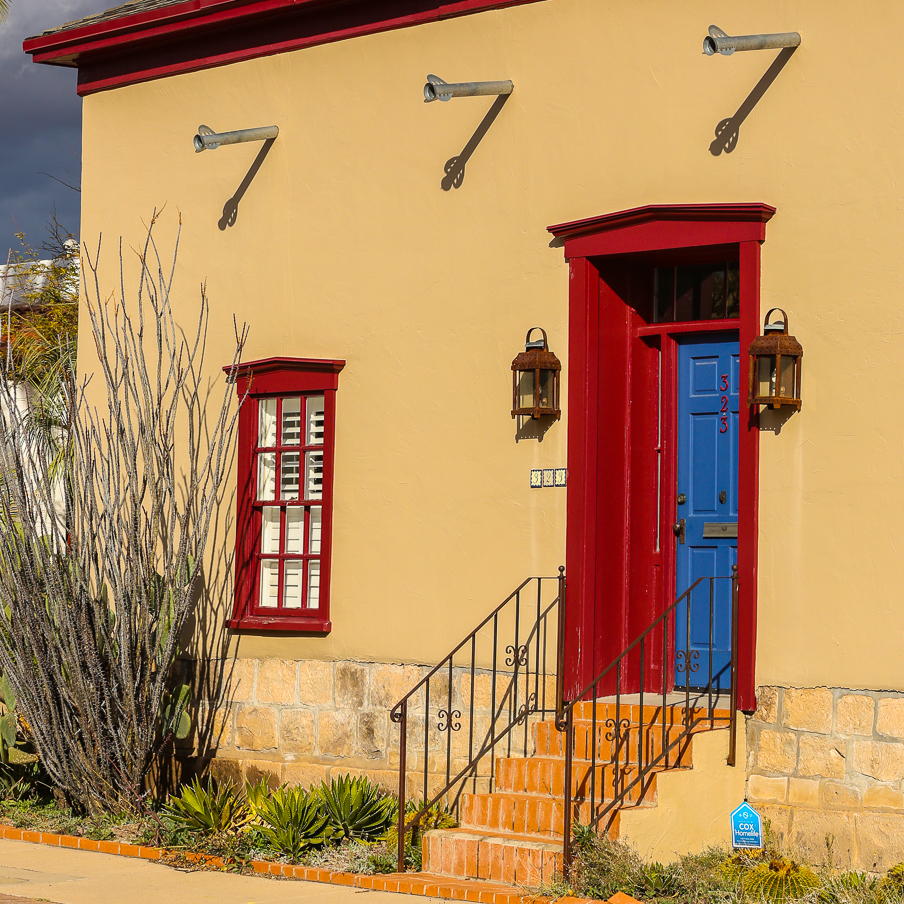
Sam Hughes House
The Sam Hughes house was constructed about 1865 as a typical adobe structure, but was expanded several times to accommodate the large Hughes family. Easily identifiable updates include the addition of shallow wood pediments typical of Greek Revival architecture, gables, and a rock foundation.

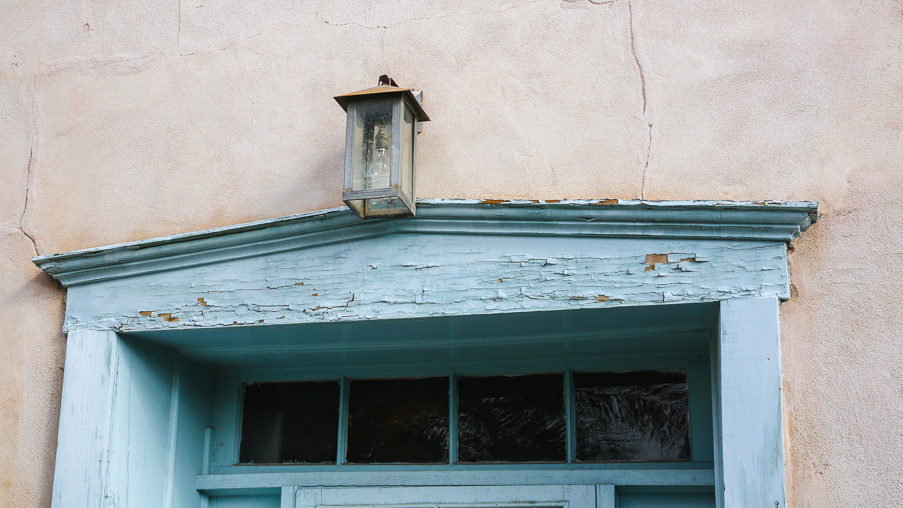
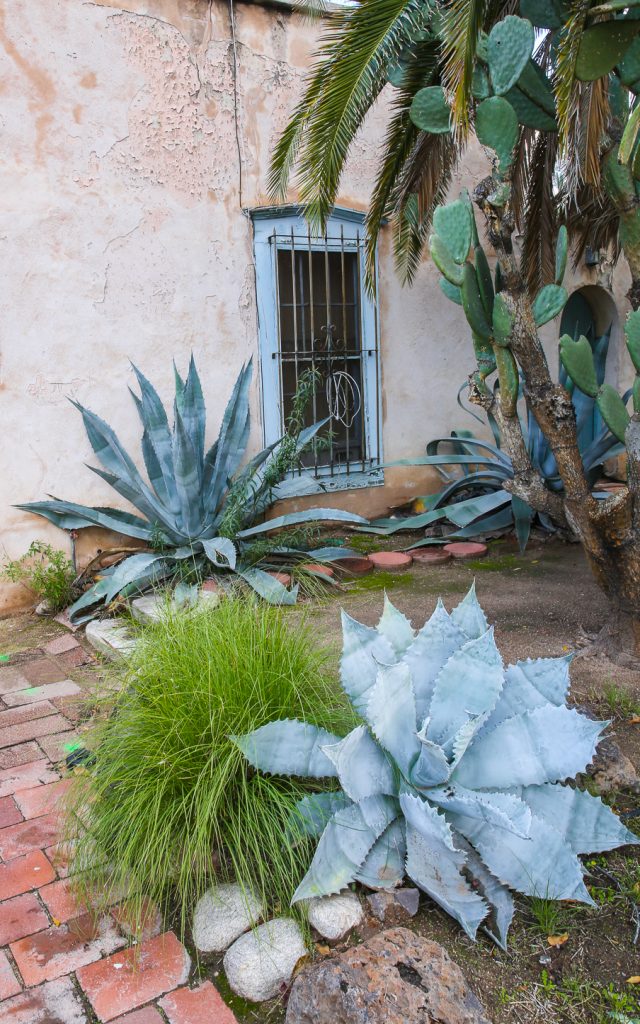
Stevens-Duffield House
The nearby Stevens-Duffield house began as two separate houses.
The first structure was a small Sonoran row house built by US Marshall Milton Duffield about 1865. Soon thereafter, Hiram Stevens built his own Sonoran home next door. Stevens purchased the Duffield home and, by 1870 had incorporated it into his own expanded home.
A popular politician and businessman, Stevens often hosted important visitors from Washington DC and the Tucson area in his elegantly decorated home. The home’s role in Tucson society came to an unexpected end when Stevens killed himself after an attempt to kill his wife was foiled by the heavy Spanish comb she wore in her hair.
While his wife continued to live in a portion of the house until her death in 1916, the house was largely a rental property for most of its existence.
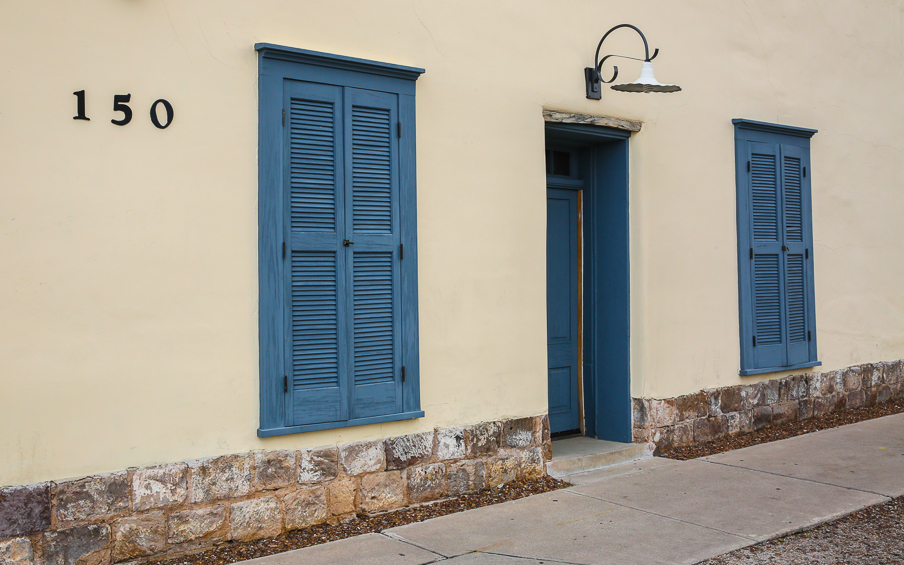


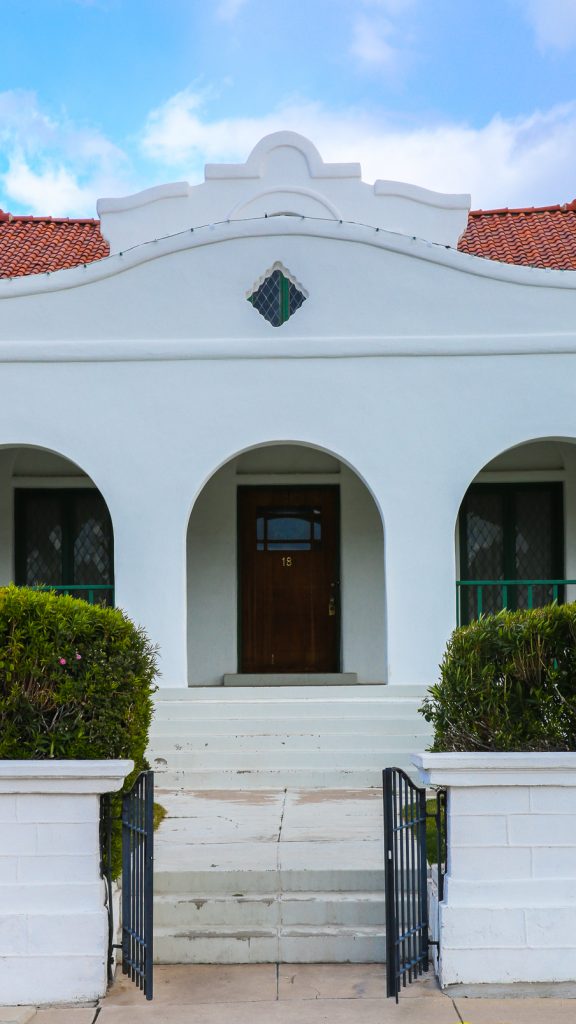
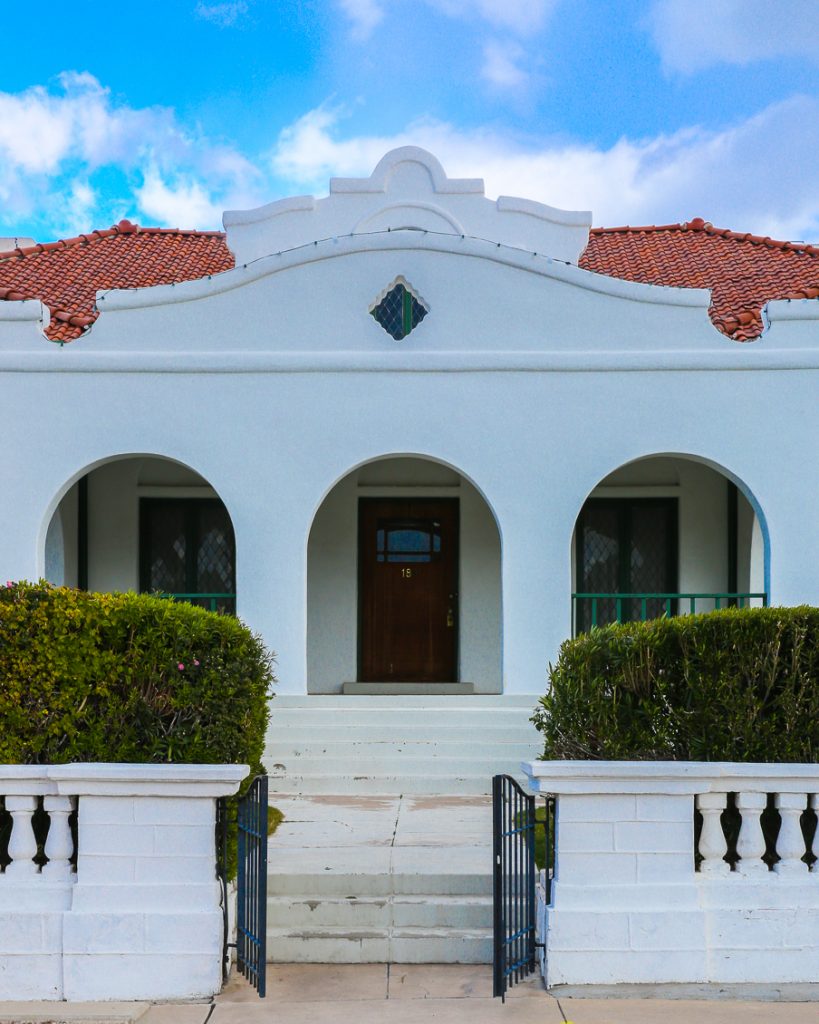
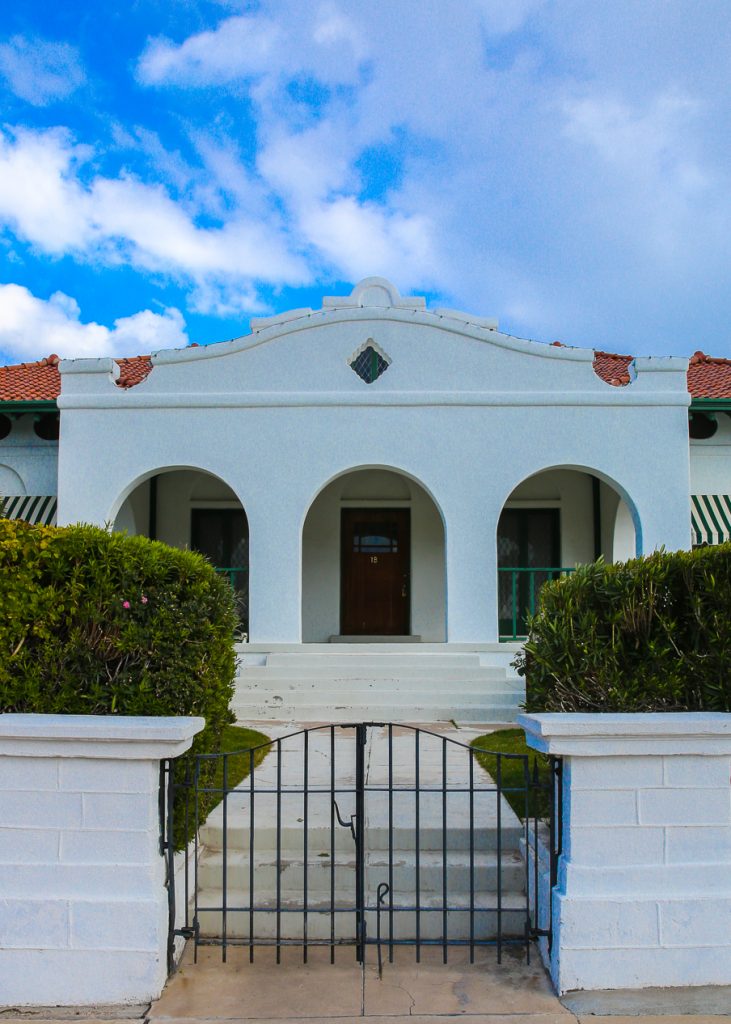

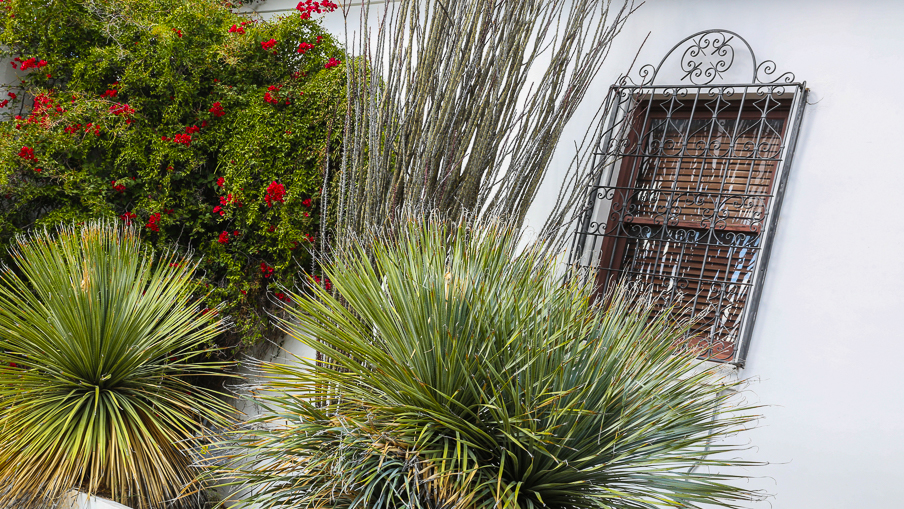
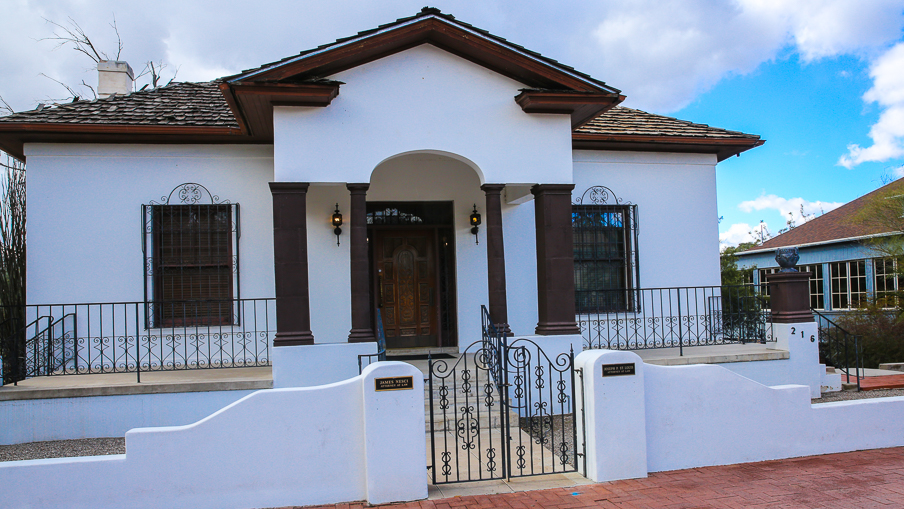
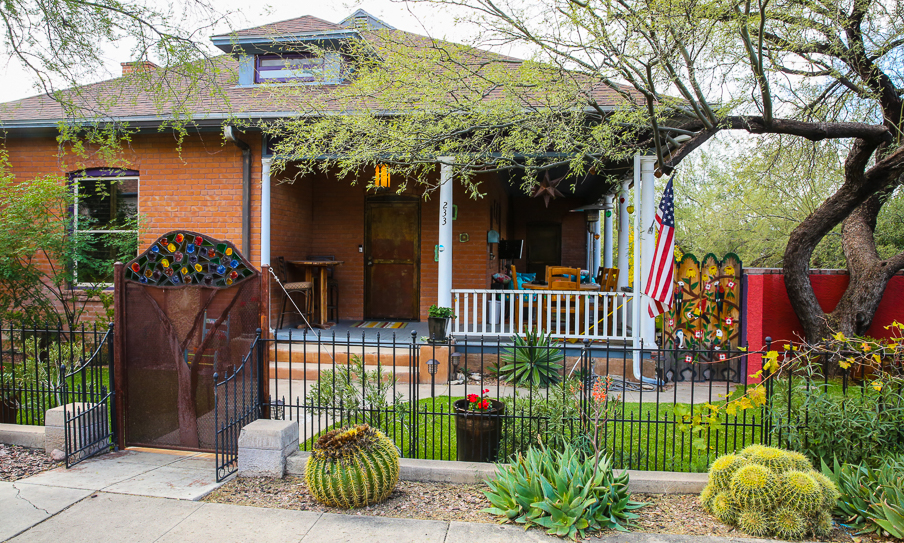

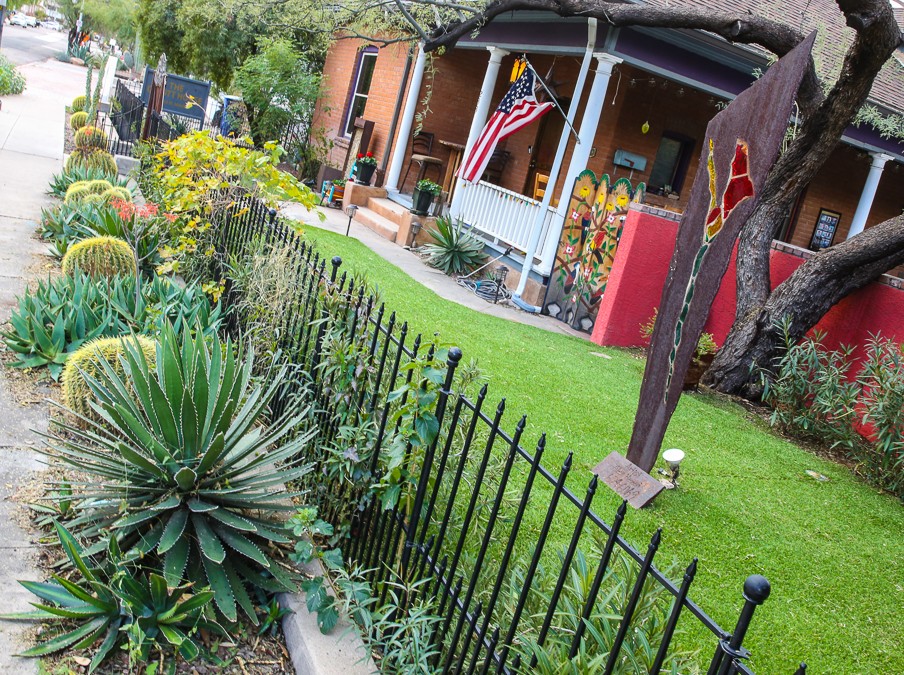

Cheyney House
The Cheyney house, a Mission-style mansion from around 1900, was falling into ruin and nearly destroyed by fire before restoration began in 2001.


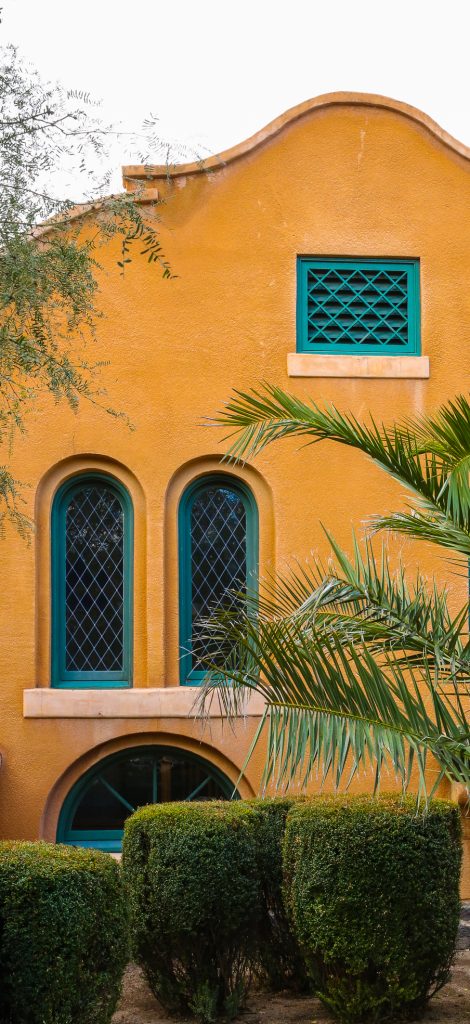

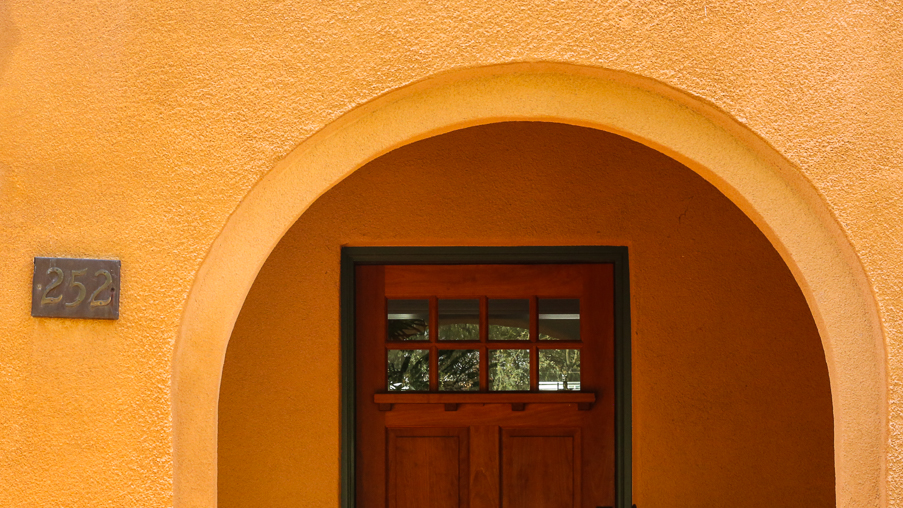
Steinfeld House
The Steinfeld house was constructed around 1900 in California Mission Revival style with additional decoration. It was served briefly as the home of the original thirteen bachelors who founded the Owl’s Club. Today it houses offices.
Despite the fact that the Owls were already declining in number as they found brides and established their own homes, in 1902 the Steinfeld house was replaced by the larger and more commanding home. Structurally Mission Revival style, but decorated with non-traditional ornamentation, this Owl’s Club is truly a mansion. It was restored in 1985 after becoming a ruin.
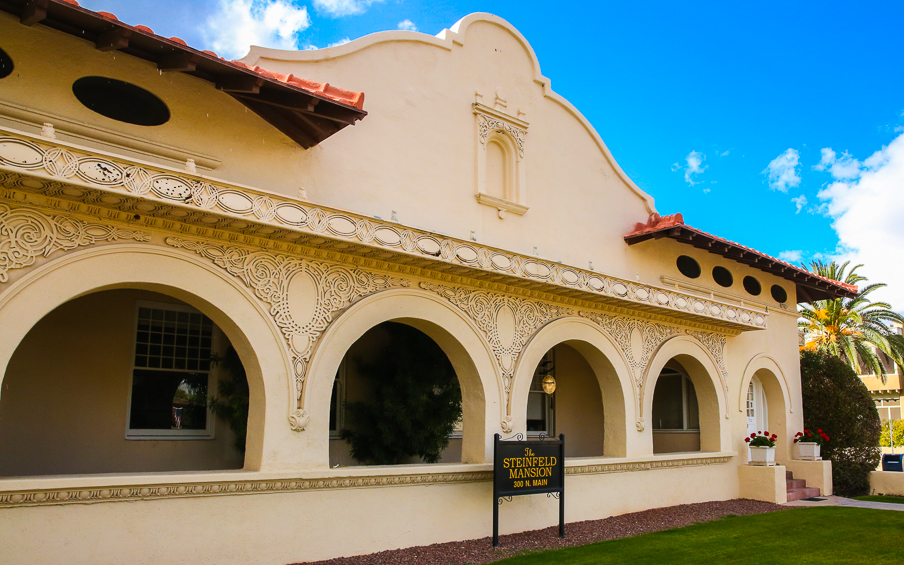
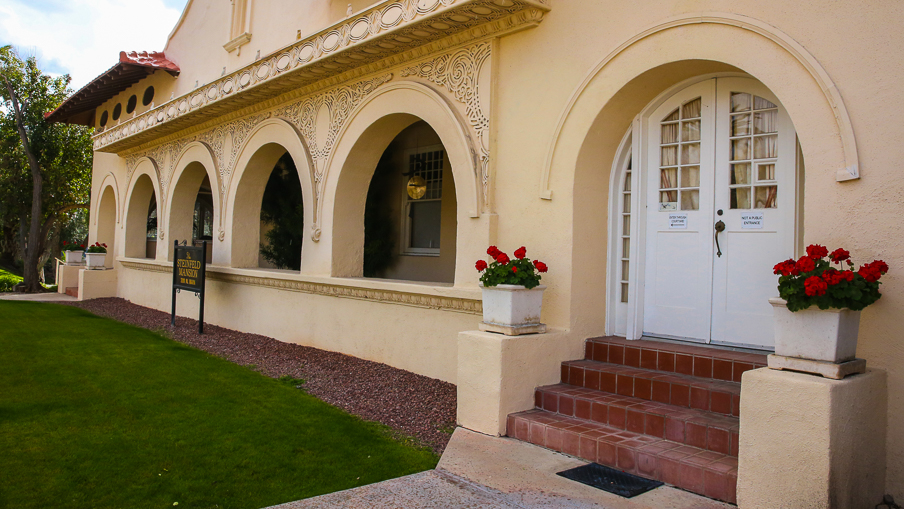
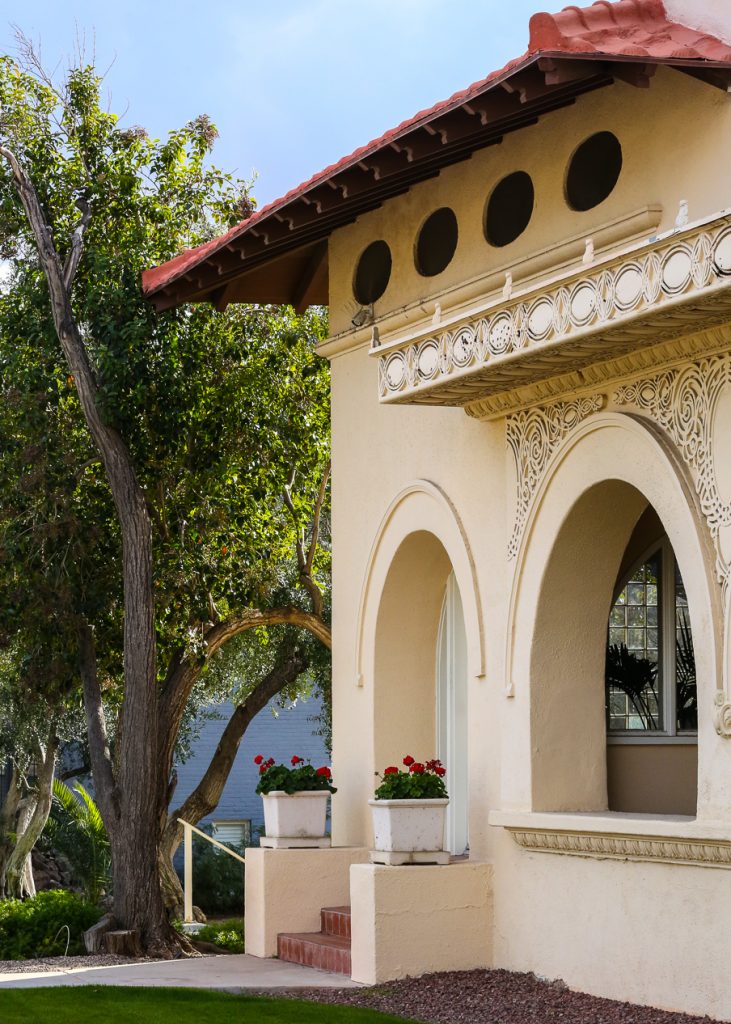


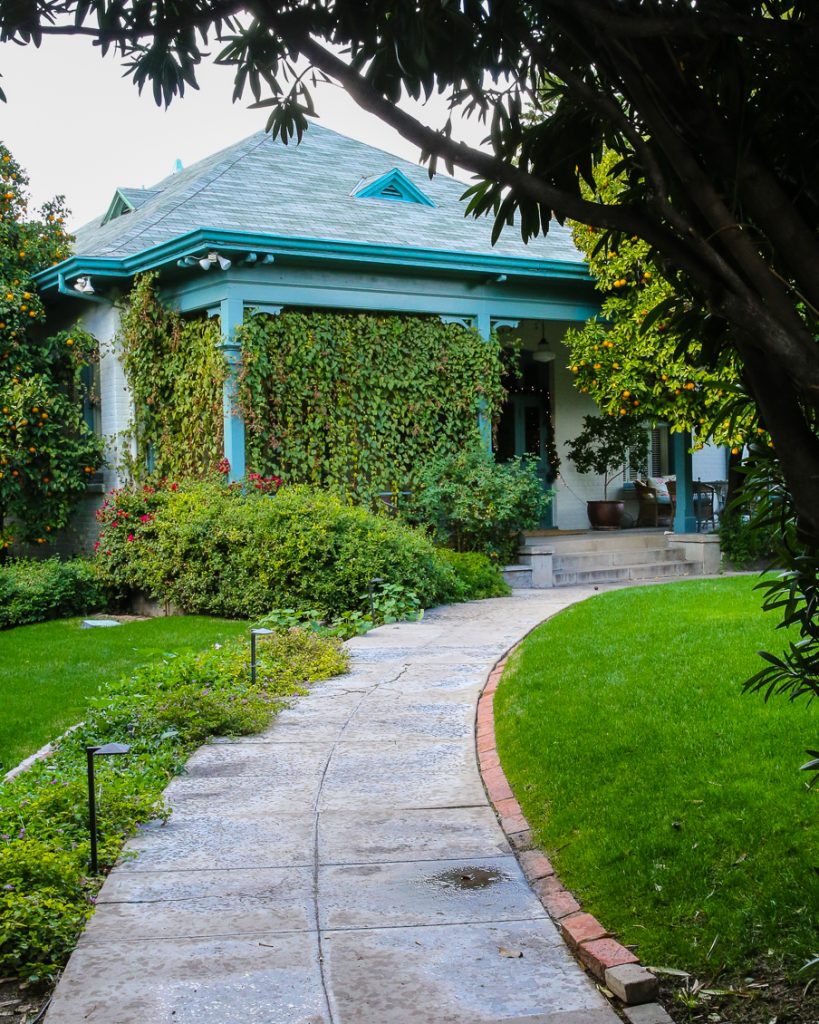
Content Sources
https://explorationvacation.net/2014/06/historic-tucson-arizona-the-mansions-of-main-avenue/
https://www.tucsonaz.gov/files/preservation/ths_map_fp_sm.pdf
http://www.downtowntucson.org/wp-content/uploads/2011/05/THS_map_FP.pdf
Travel Blog ~ Past Tucson Links
Debbie in the Desert
Warning: Use of undefined constant gad_content_tag_filter_replace - assumed 'gad_content_tag_filter_replace' (this will throw an Error in a future version of PHP) in /home/dx87kwtjkt0i/public_html/wp-content/plugins/web-ninja-google-analytics/webninja_ga.php on line 1813

Mule’s Ears Spring Trail
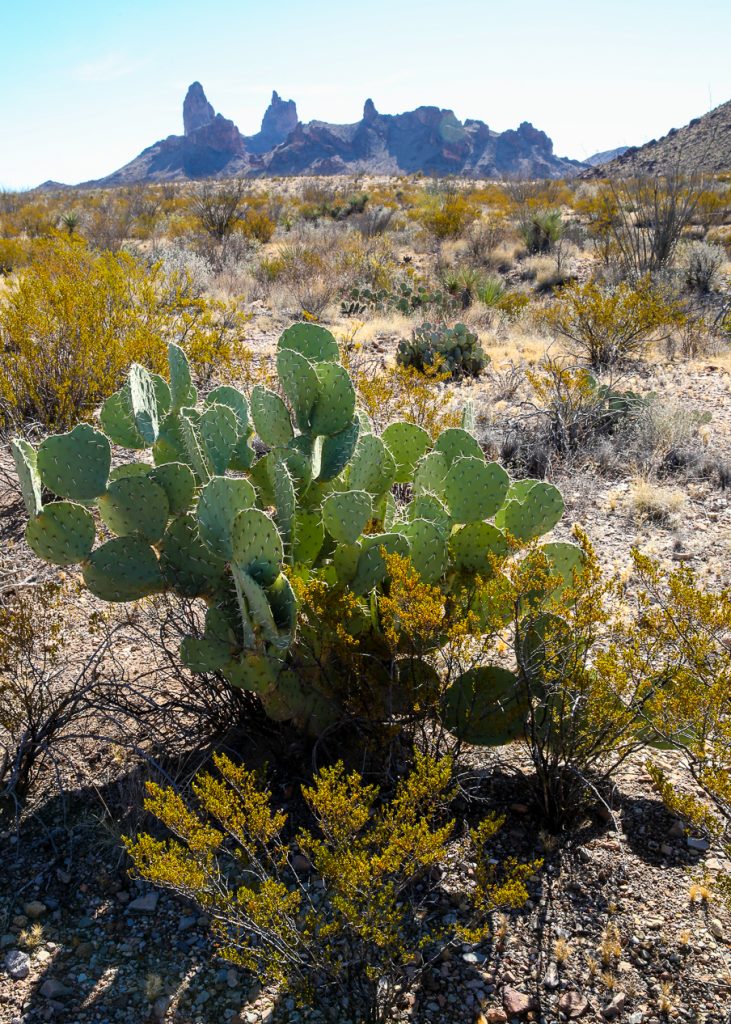
Big Bend National Park

The Chihuahuan Desert of Far West Texas
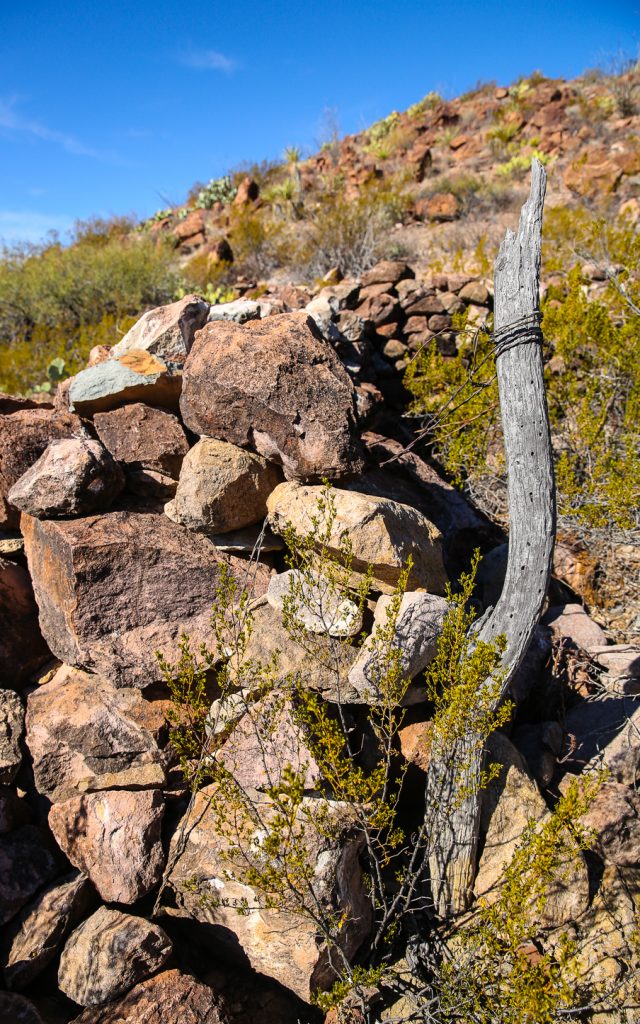
A Healthy Desert
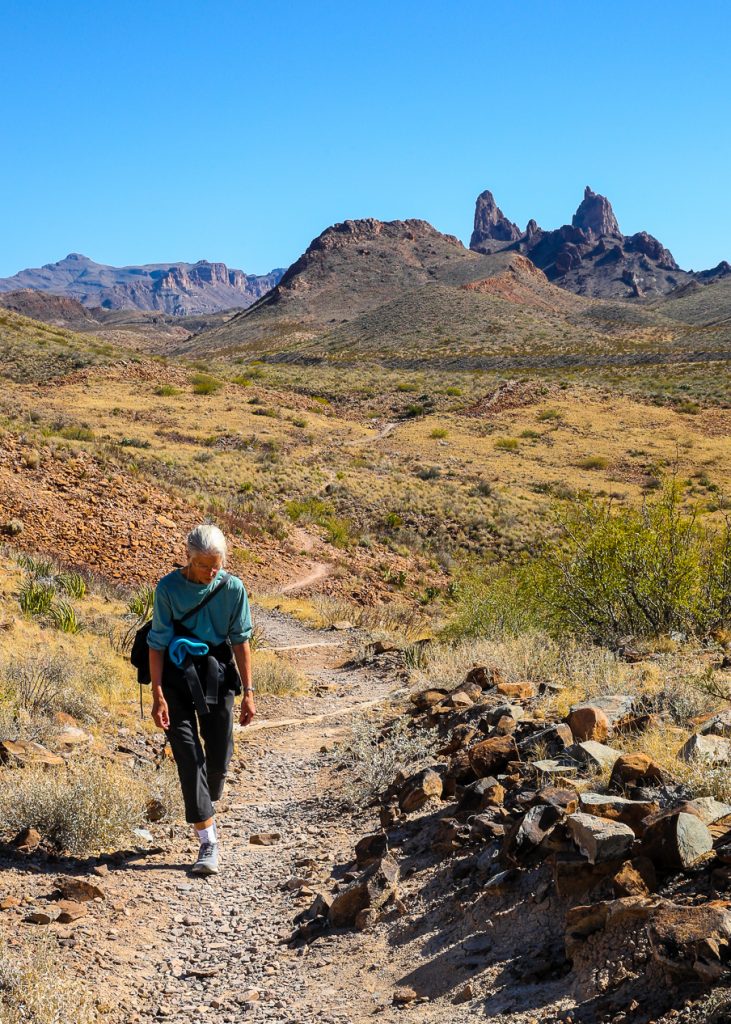
Spring Water Flowing In the Desert, Lush and Green
Bull Rushes Even
~
A Moderate Desert Hike With Some Interesting Variety In Topography, Geology and Flora
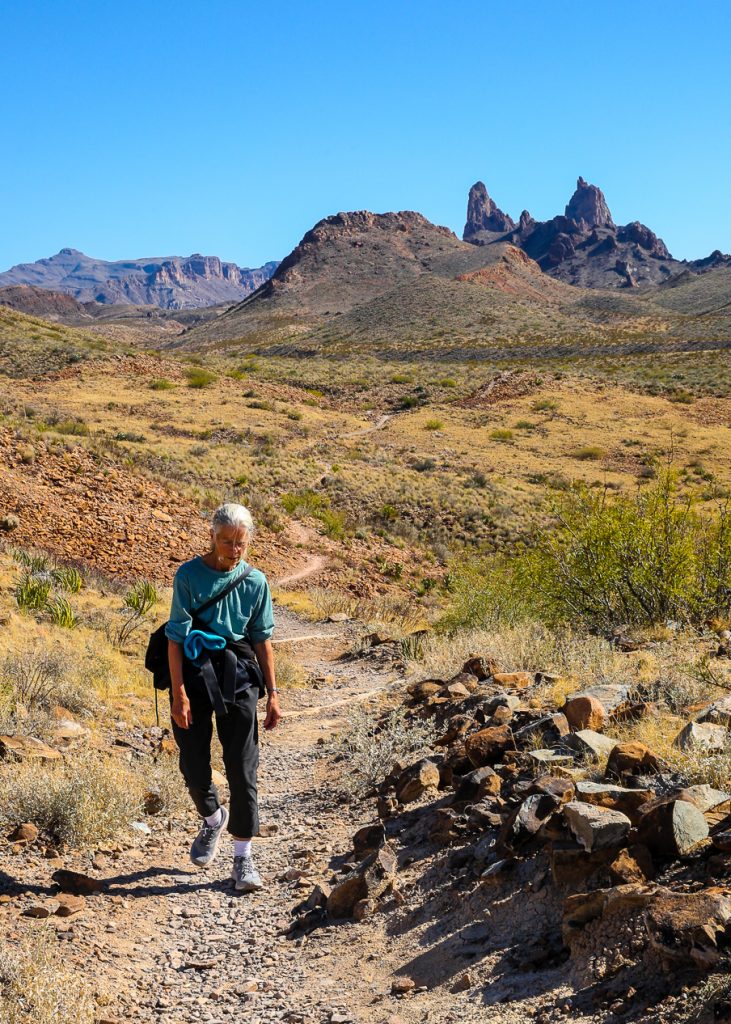
A Healthy Desert Ecosystem

Well Stewarded By the National Park

The Color of the Land In the Color of One’s Skin

Debbie In the Desert
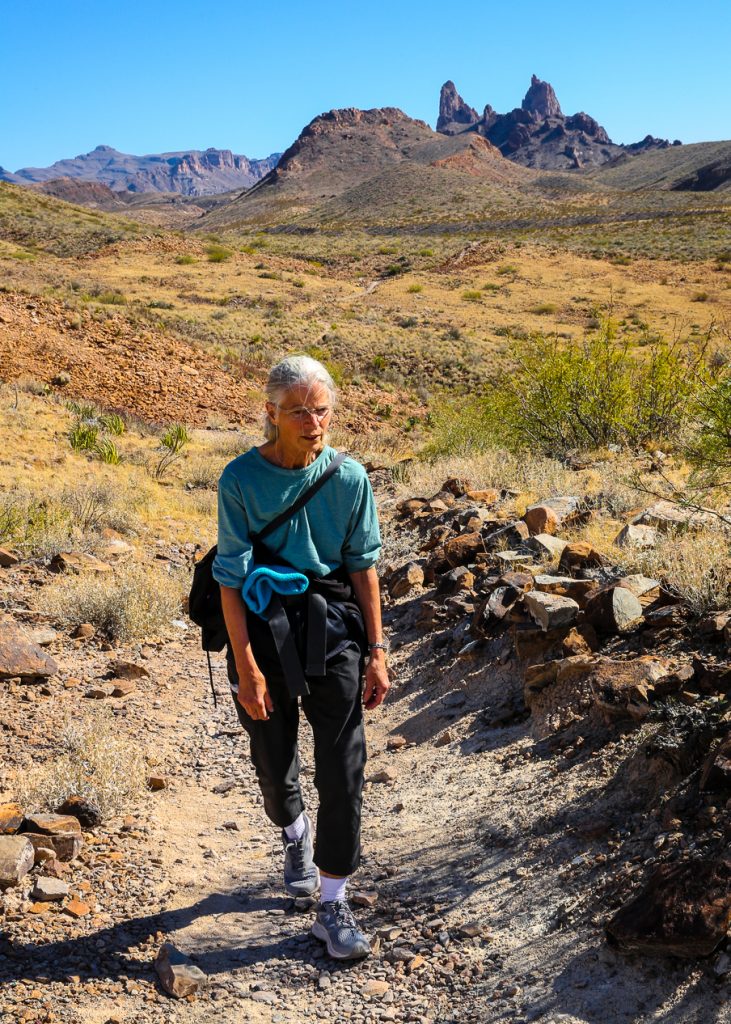
Far West Texas – Winter Solstice – Terlingua’s Porch
Warning: Use of undefined constant gad_content_tag_filter_replace - assumed 'gad_content_tag_filter_replace' (this will throw an Error in a future version of PHP) in /home/dx87kwtjkt0i/public_html/wp-content/plugins/web-ninja-google-analytics/webninja_ga.php on line 1813
Winter on the road.
The chase of above freezing temperatures forces our hand, plans are changed.
Terlingua bound.

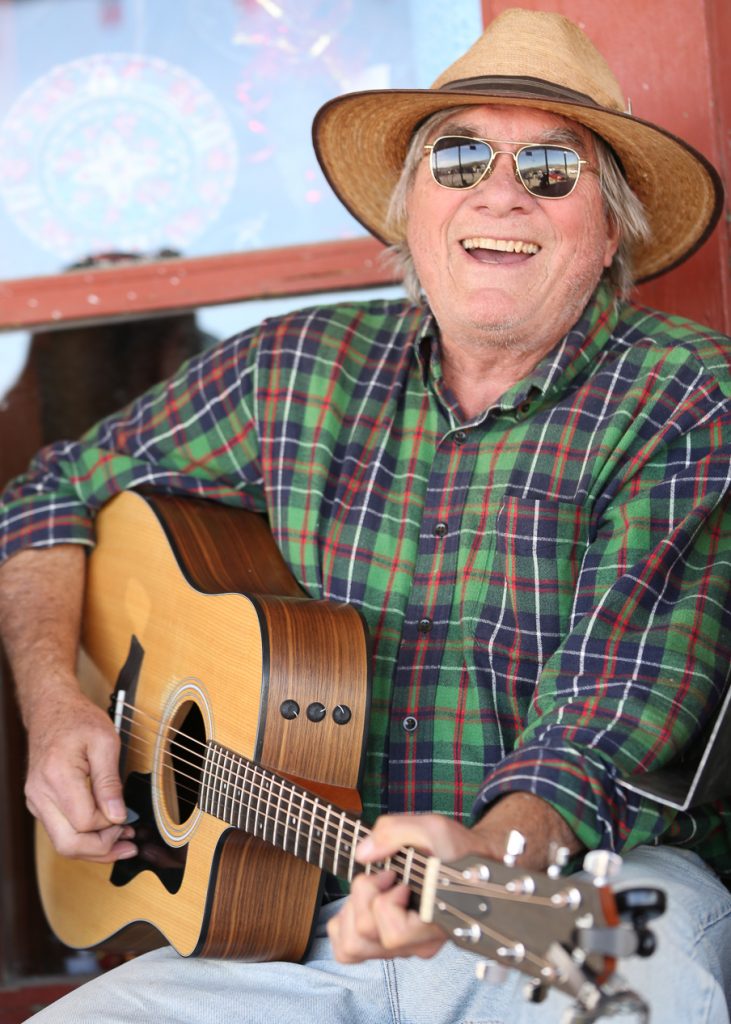
On our way to a birthday dinner at Terlingua’s Starlight Theater a ‘late in the day lit’ voice calls out from the ‘porch’, “I know you!”
This as we exit our Smart car tow car heading for the Starlight for Debbie’s 66th birthday dinner.
Turns out I knew him as well.
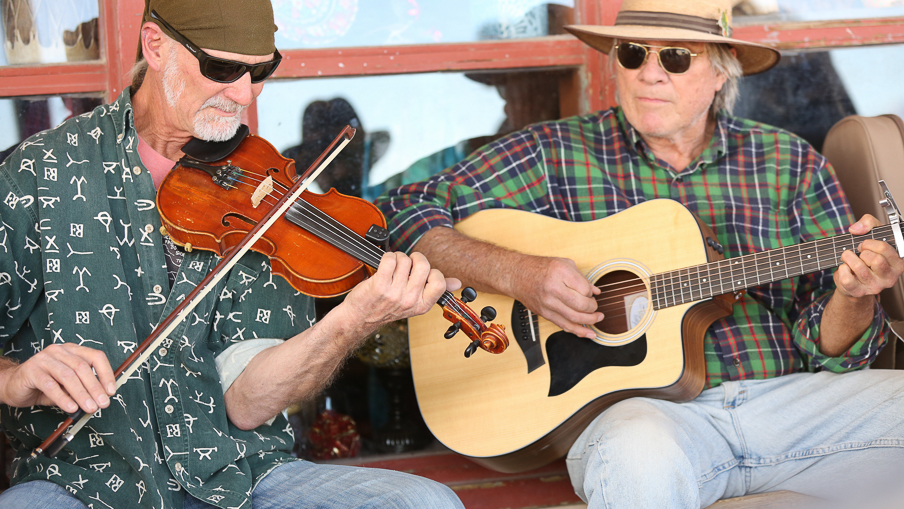
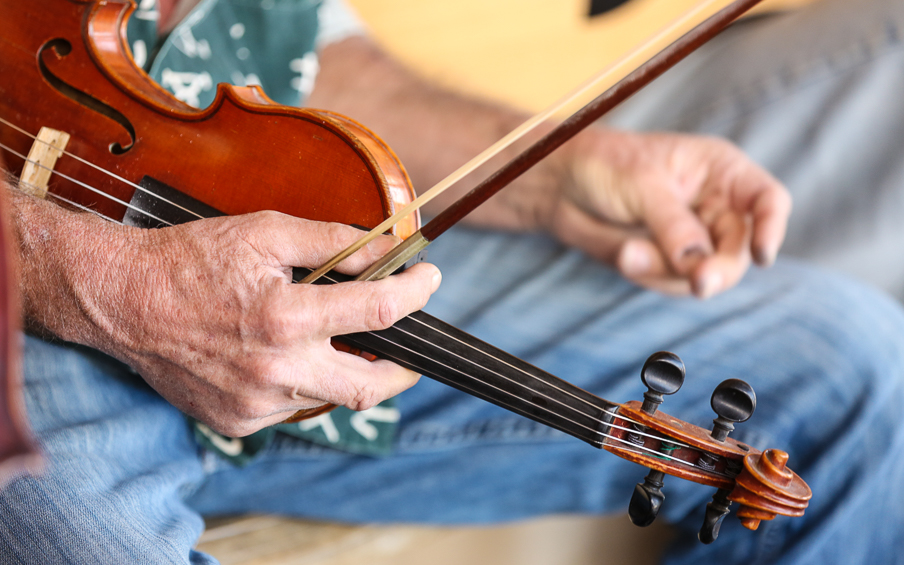
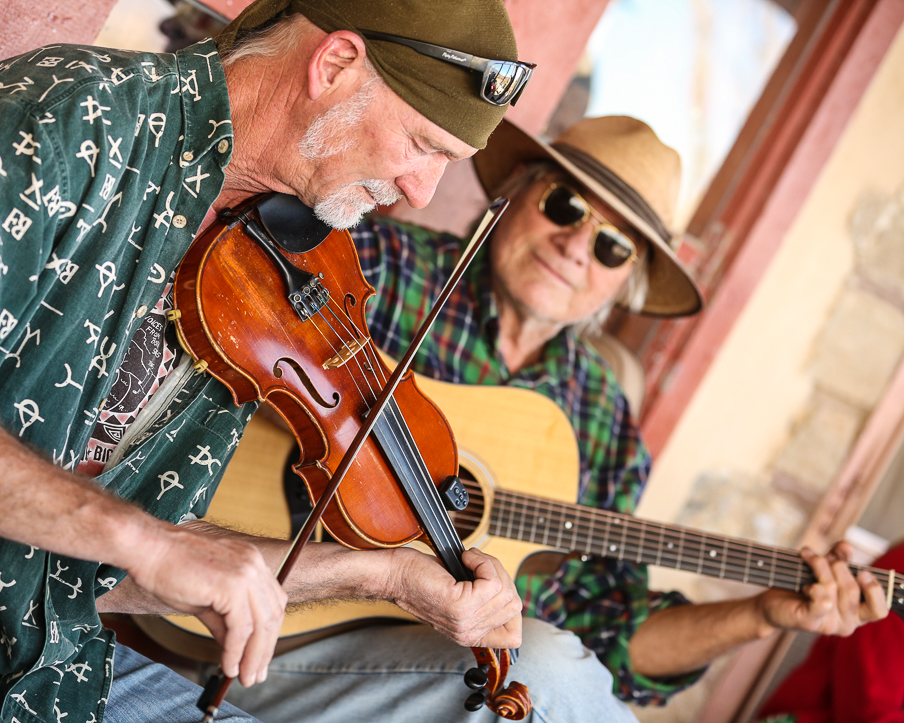
Mark Lewis, Terlingua fiddler extraordinaire.
He and I have a music and digital image connection going back a number of years.
Chiefly fiddle circles, local folk, local musicians in Terlingua, Texas
Mark seemed interested in continuing the connection and let me know that there would be a musical gathering on ‘the Porch’ that Sunday, the day after Winter Solstice at 3 PM.
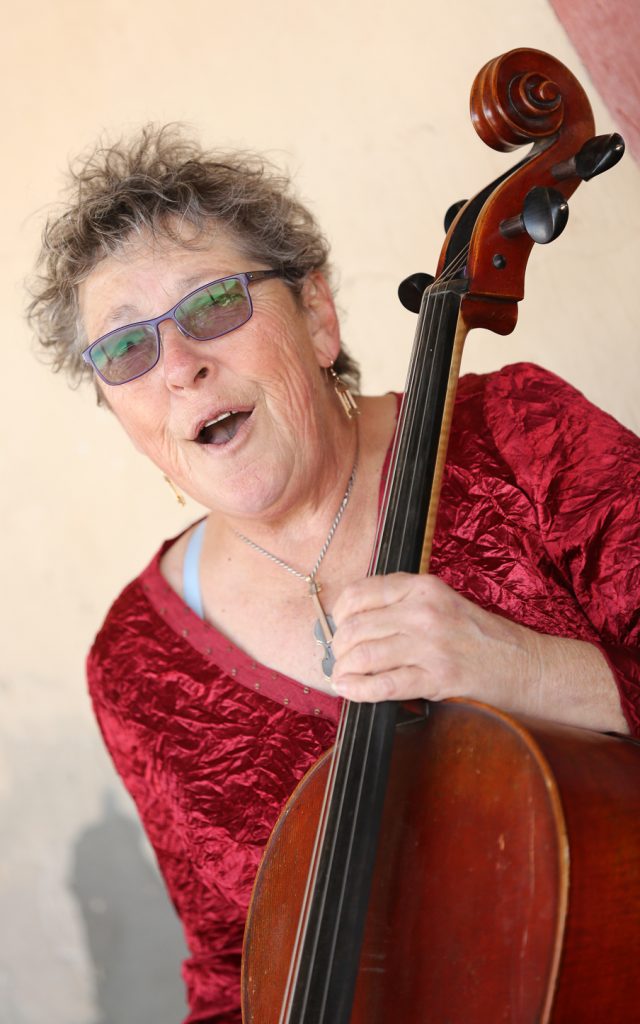
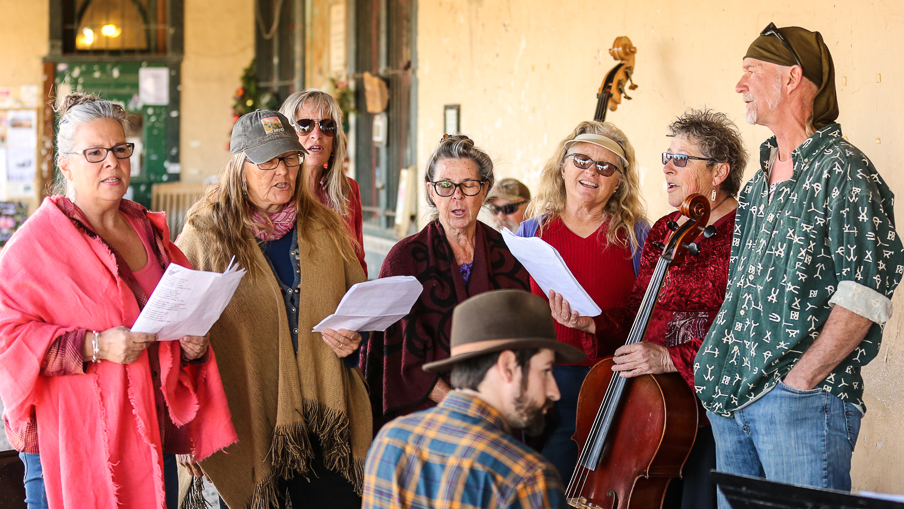

Mark Lewis, Ted Arbogast, Charlotte Teer, and a musician from Austin whose name escapes me (let me know and I will correct my text) plus a ‘low estrogen’ (their words) women’s choir bank of lusty voices showed up.
It soon became evident that the women’s voices had been doing some practicing away from ‘the Porch’.

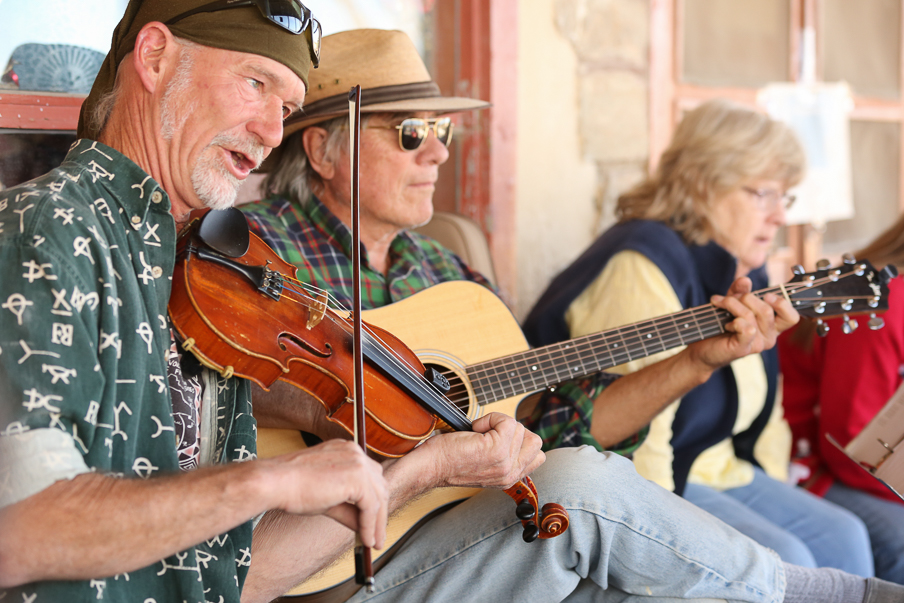
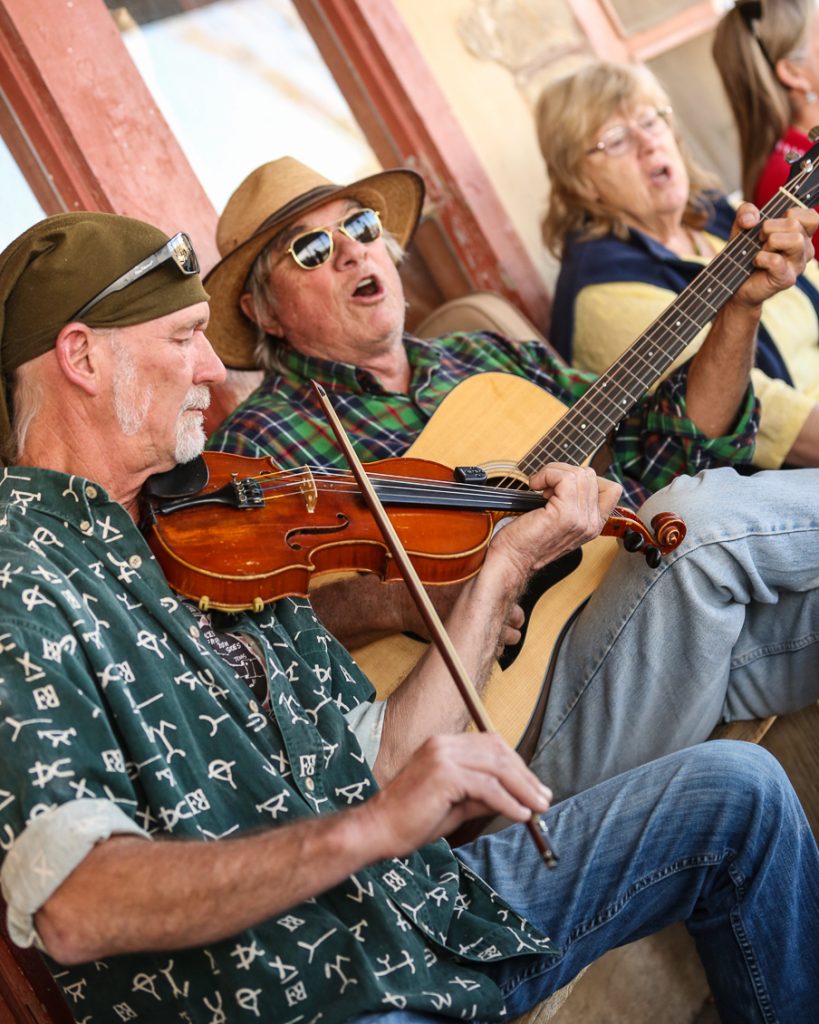
Image Gallery Link ~ Terlingua’s Porch ~ 12-22 2019
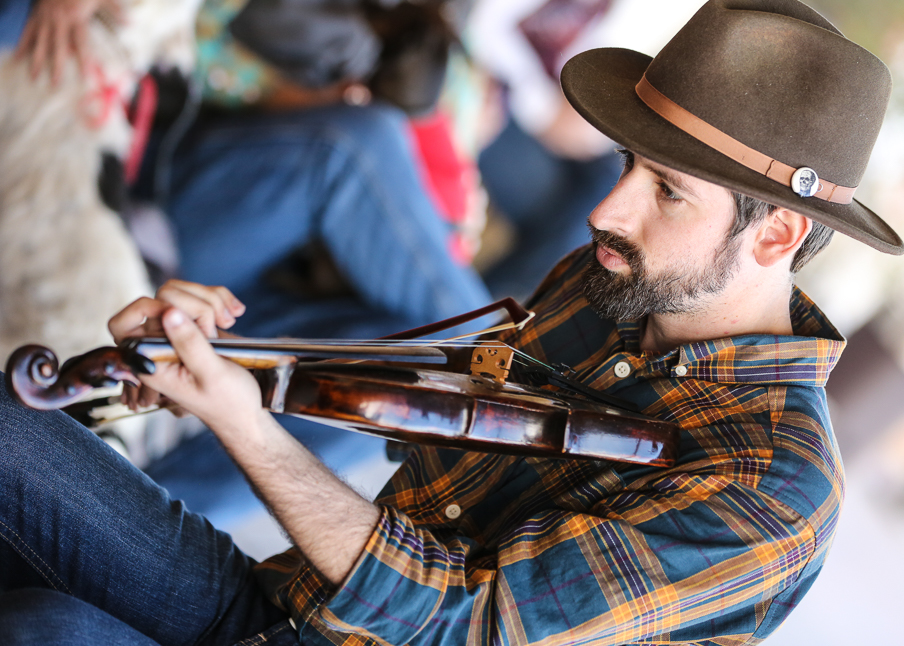

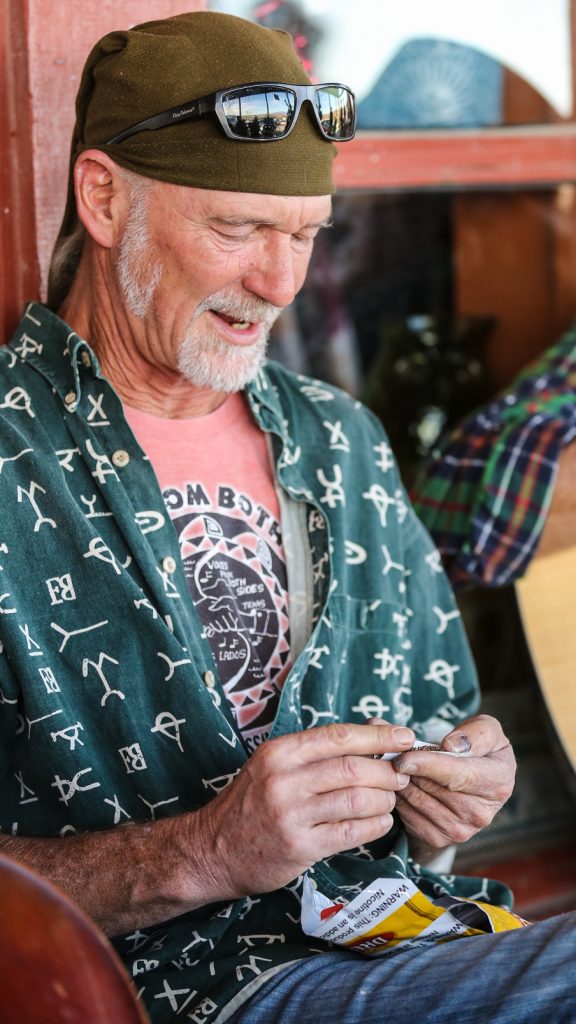
Far West Texas & Terlingua, Texas past travel blog entries follow, music scene and otherwise. Interesting to look back at the people and the faces of the region and area.
Some gone from Terlingua, some gone period, some just passing through, and some still around.

Old Time Music Community ~ Ghost Town Cafe & Saloon ~ Terlingua, Texas

Viva Terlingua ~ Terlingua, Texas
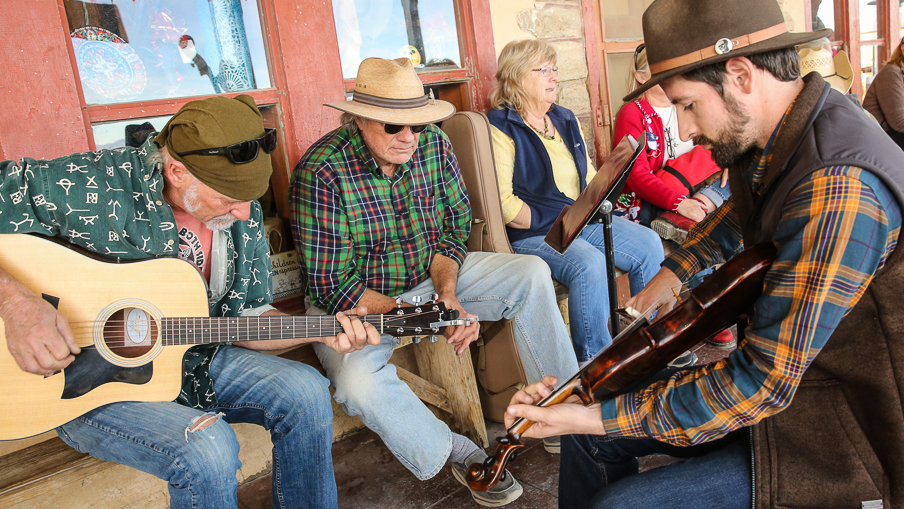
Terlingua, Texas ~ Community Between the Parks
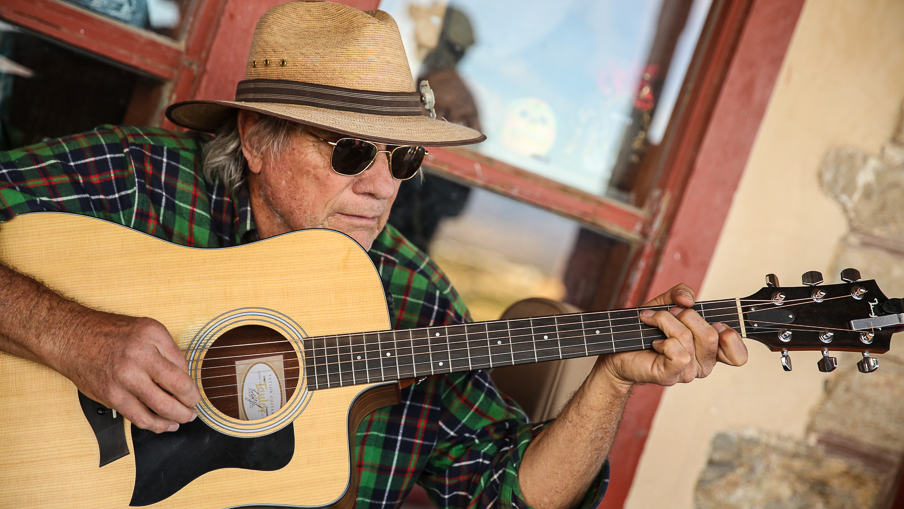
The Boat House Session ~ Fiddle Circle


The Terlingua American Legion ~ The Last Outpost
Community
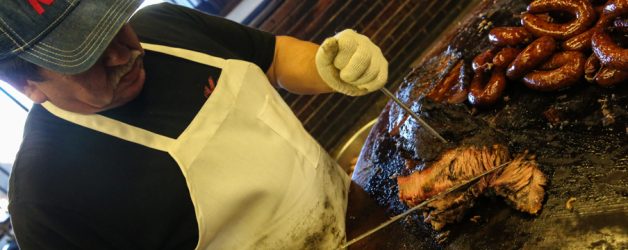
The People of Lockhart (TX) BBQ ~ Kreuz’ & Smitty’s
Warning: Use of undefined constant gad_content_tag_filter_replace - assumed 'gad_content_tag_filter_replace' (this will throw an Error in a future version of PHP) in /home/dx87kwtjkt0i/public_html/wp-content/plugins/web-ninja-google-analytics/webninja_ga.php on line 1813

Lockhart, Texas the Texas State Legislature’s acknowledged Barbeque Capital of Texas.
An attempt to meet and eat the Lockhart challenge, eating at all four Lockhart Barbecue establishments, failed when I was unable to get comfortable photographic access to the people working the pit at all four.
So Kreuz’ Market, correctly pronounced Krites, and Smitty’s Market it is (and was) in that order.
More of a photographic tour of the people working the barbecue pits .
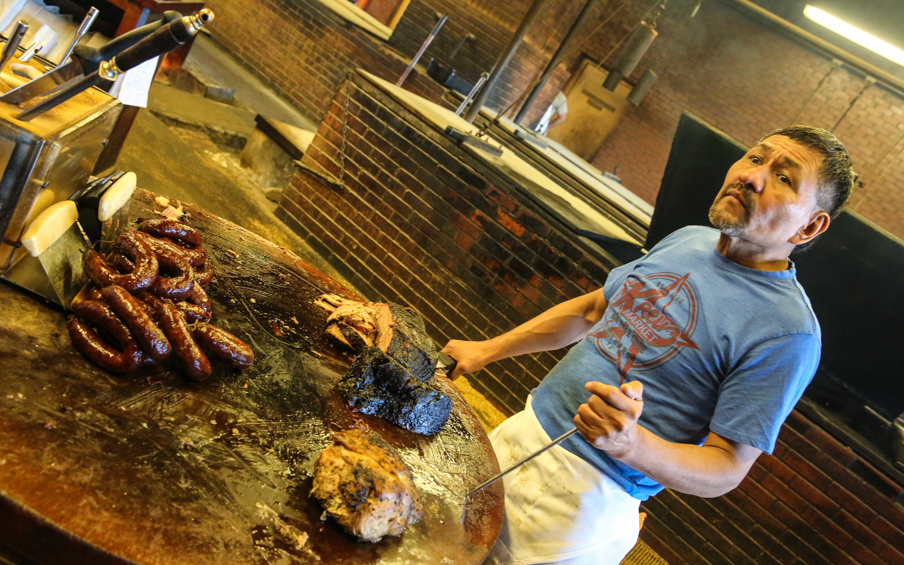
Vince Castillo at the block and behind the knife.

Place your order with the counter guys and it is called out to Vince.
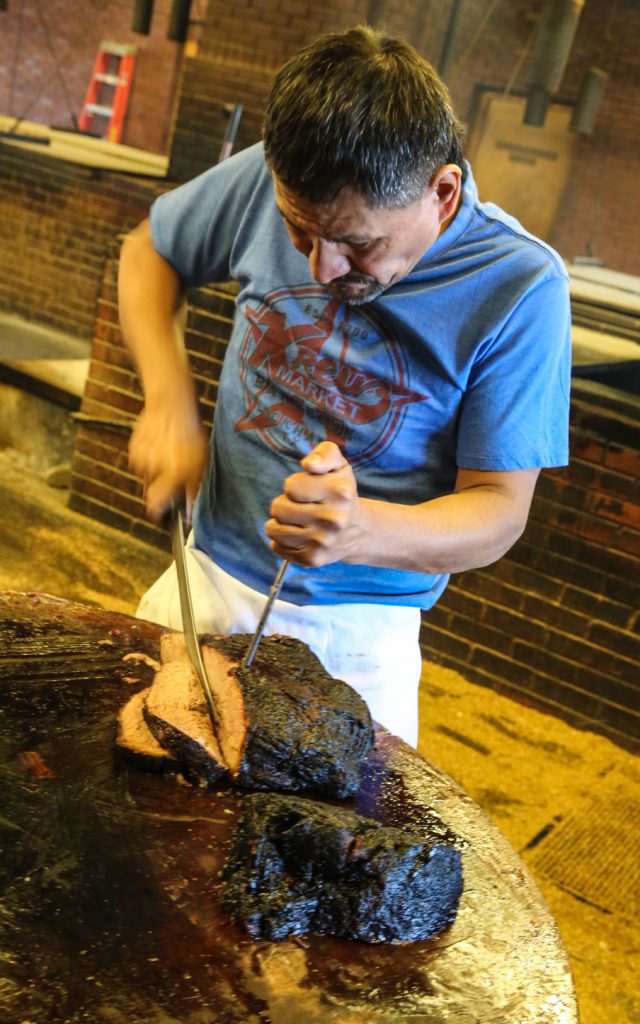
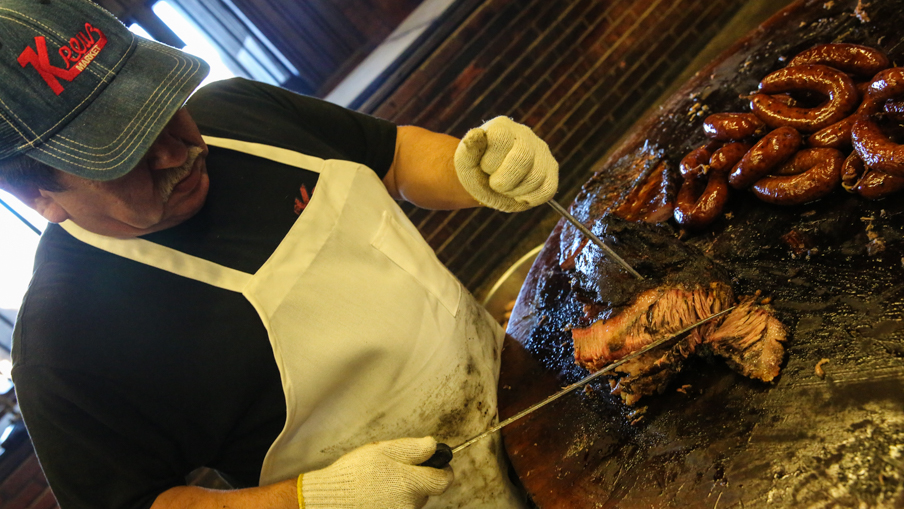
Frank Tello wields a skillful knife.

I chose to sample sausage and brisket in an attempt to limit myself and for some sort of subjective comparison between the barbecue pits.

Frank is a man who enjoys and takes pride in his work and craft.
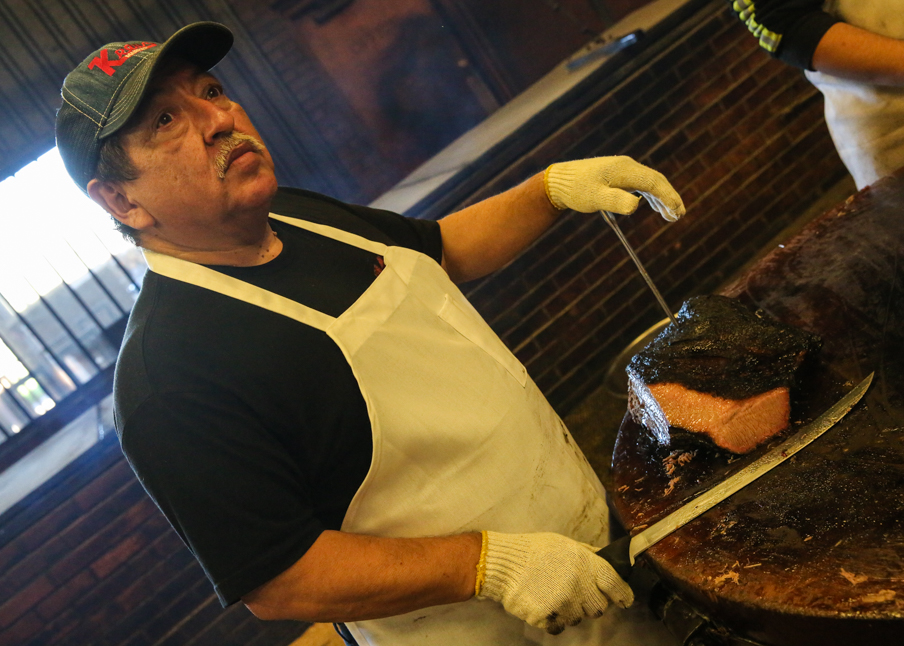
The folks in the pit at Kreuz’ Market made me welcome and comfortable.
Domingo Delgodillo (‘Sunday’ in Spanish, shared with some pride) went out of his way to welcome, pave the way and open the pit to me.
Before we move on photographically to Smitty’s Market, here are my impressions of the sausage and beef brisket at Kreuz’ Market.
Moist meats both, no additional sauce, none, none needed beyond the rubs, searing and smoking. The meats were moist and flavorful.
I did have sides at Kreuz’ Market, which made for a full meal, as opposed to a sample. None beyond Kreuz’. Cole slaw and sauerkraut. A slightly sweet and slightly wet slaw with fresh vegetables that had some snap to them. The sauerkraut was good: caraway seed with a touch of meat presence. Both sides were excellent.
As a segue into the Smitty’s Market images let’s talk about their meats.
Again the sausage and the beef brisket: a dryer brisket in comparison, but not a bad thing, yet a way moister sausage, a less dense sausage almost loose with a snappier casing in comparison.
White bread, Wonder Bread to be exact, and saltines were a staple at both establishments.
Smitty’s prices were the lower of the two. No additional barbecue sauces at Smitty’s although hot sauce was at the table (beware the low chairs).
No Forks at Smitty’s. So the sign proclaimed, and none were to be seen.
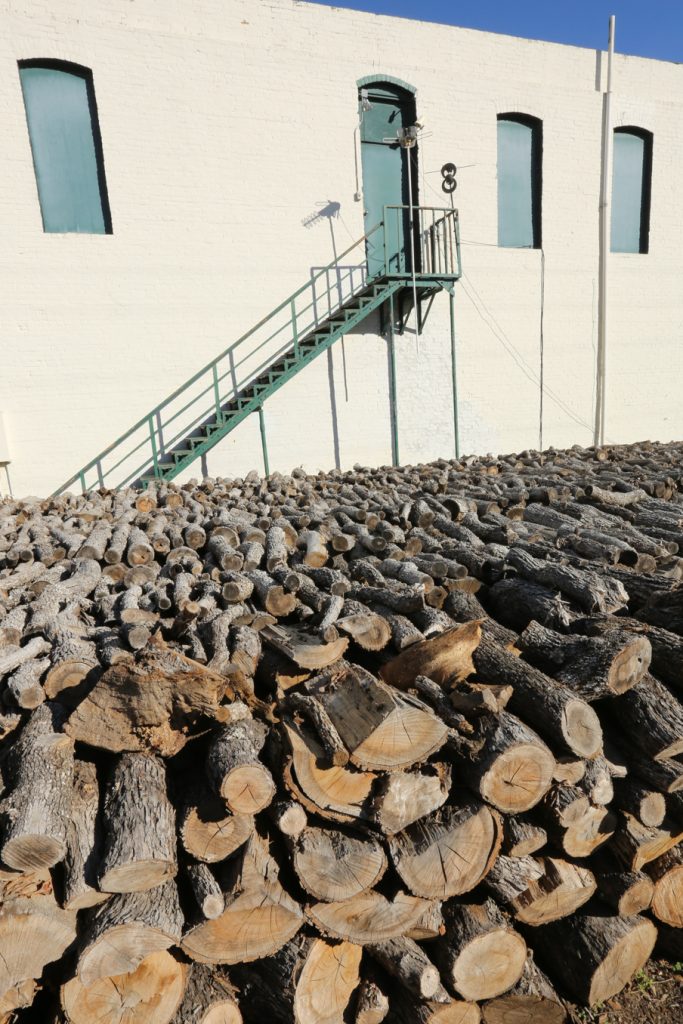
Split post oak out back of Smitty’s Market waiting for the fire.
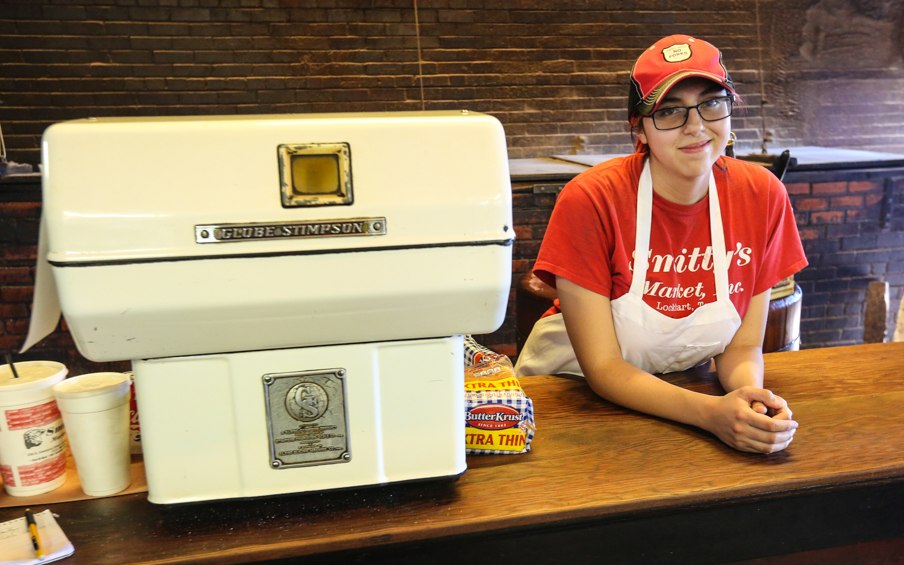
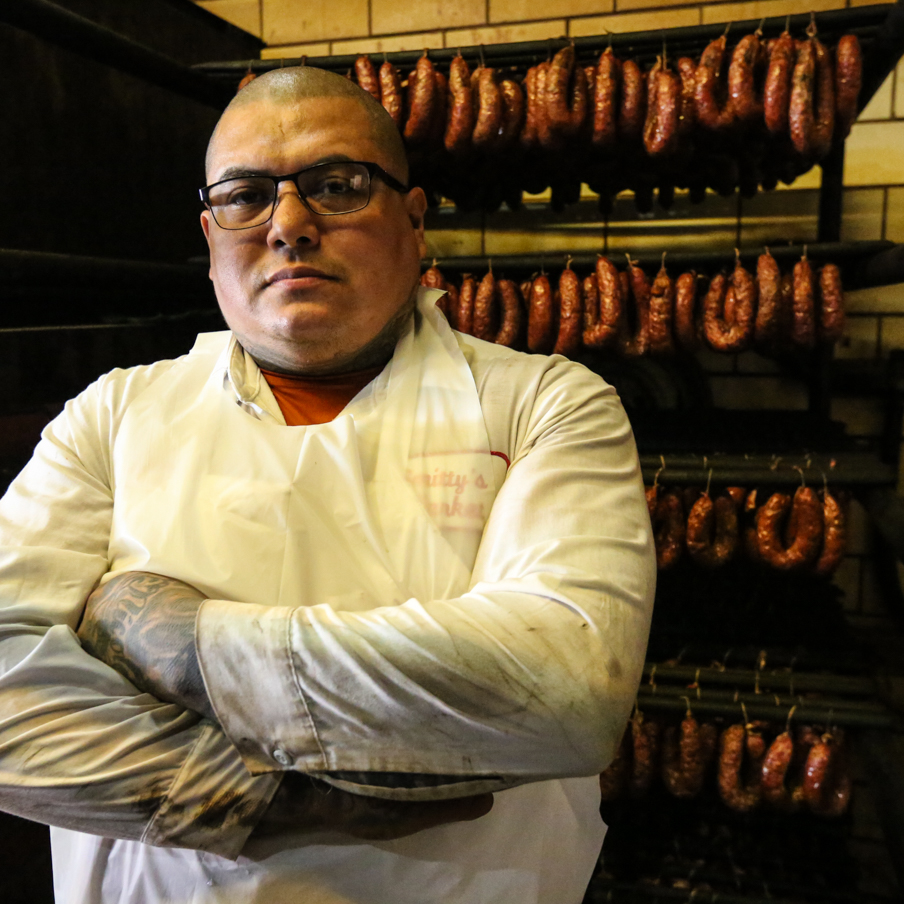
Smitty’s sausage master, Jerry Mendoza, who takes a good picture.
I think he knows that. Not a bad thing: confidence.

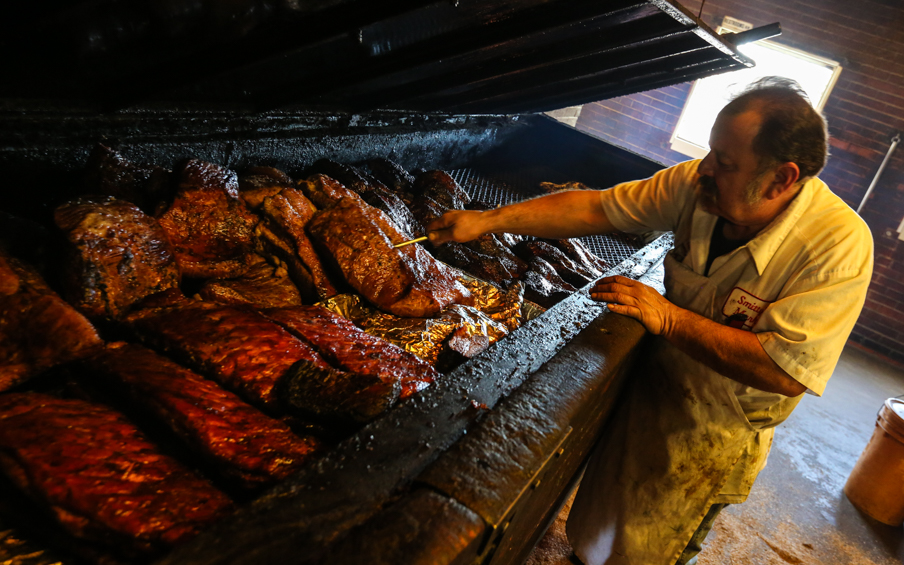
Pablo Garcia seemed to be the pit guy at Smitty’s.
Although everybody could and did wield the knife at the block.
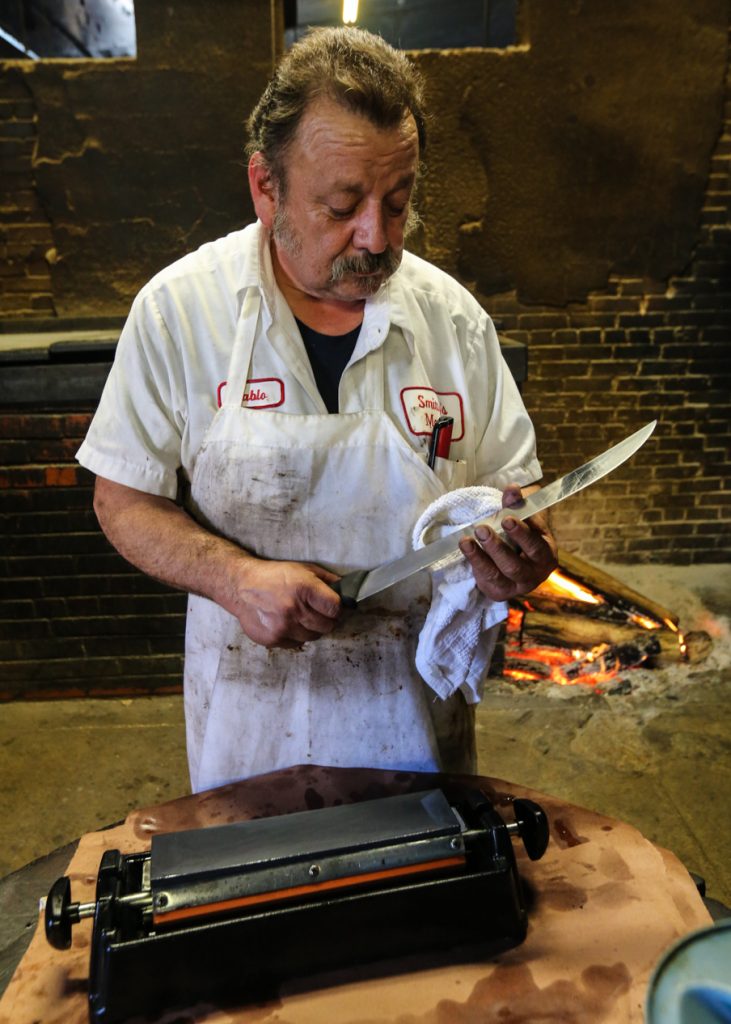
A sharp knife and a controlled smile.
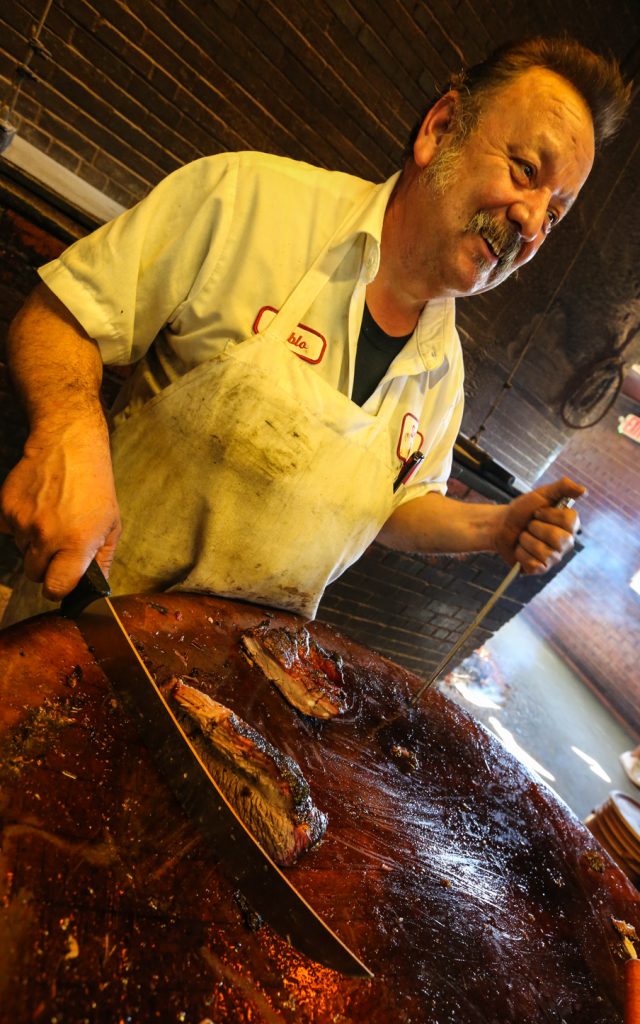
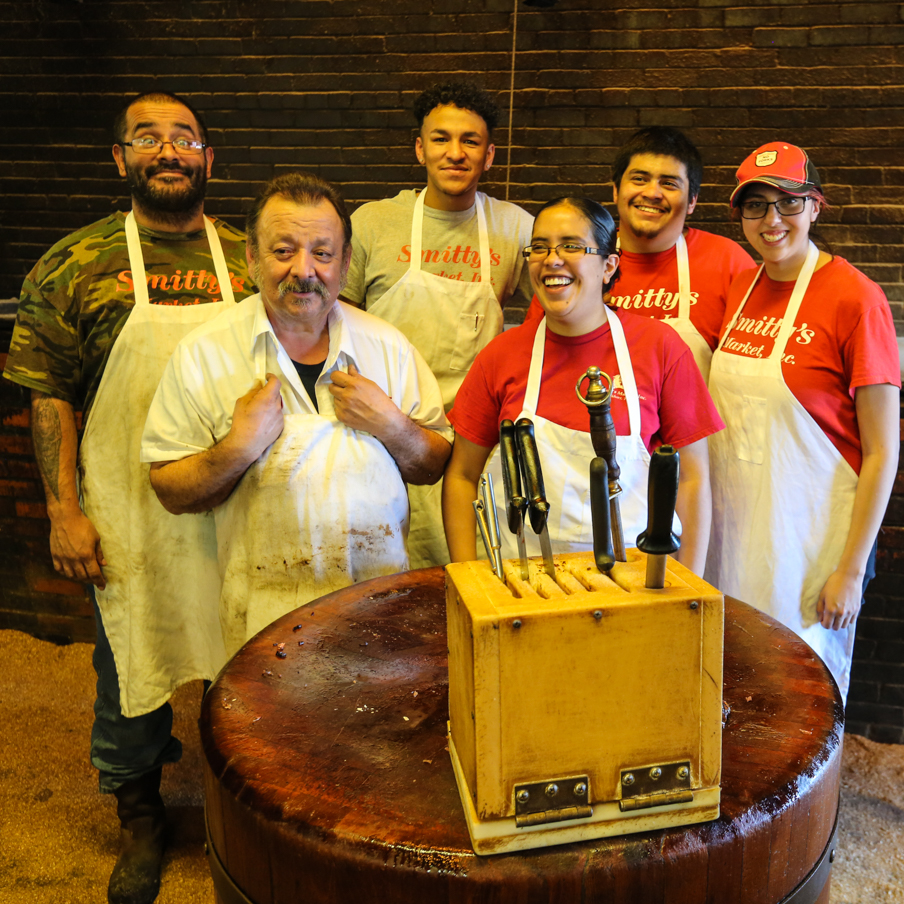
Excellent group of people. They worked well together and enjoyed one another’s company. This crew also made me welcome and comfortable in their presence and space
From immediately behind the knives, around and back: Canessa, Kinesa, Jared, Mateo, Jerry and Pablo.
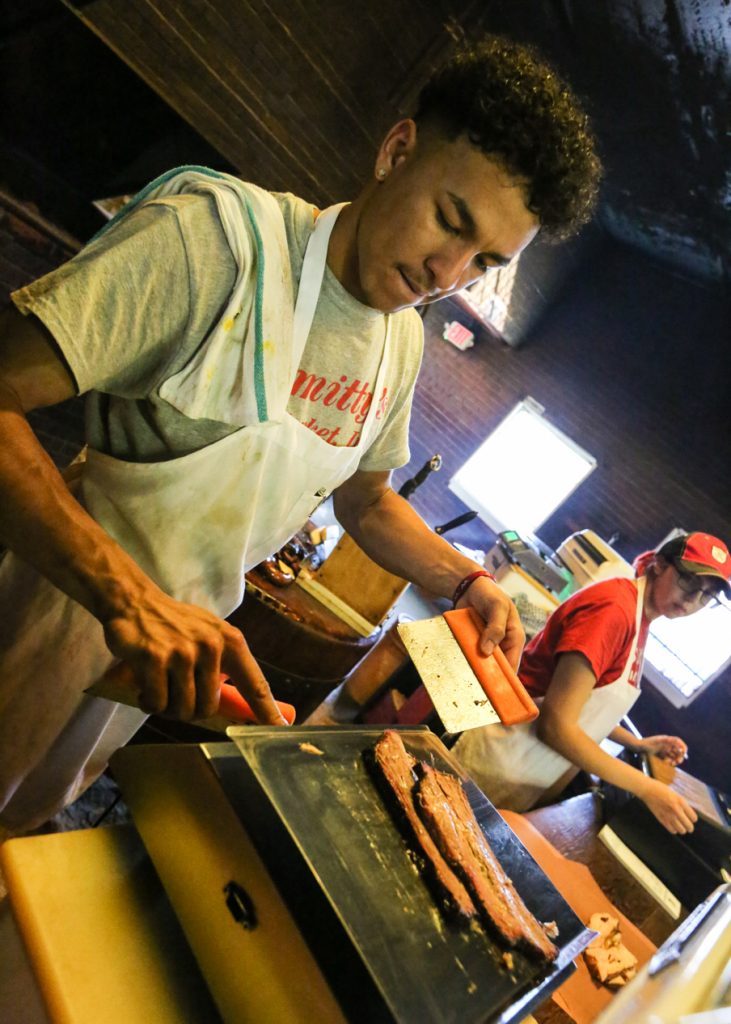
Mateo front and center at the scale.

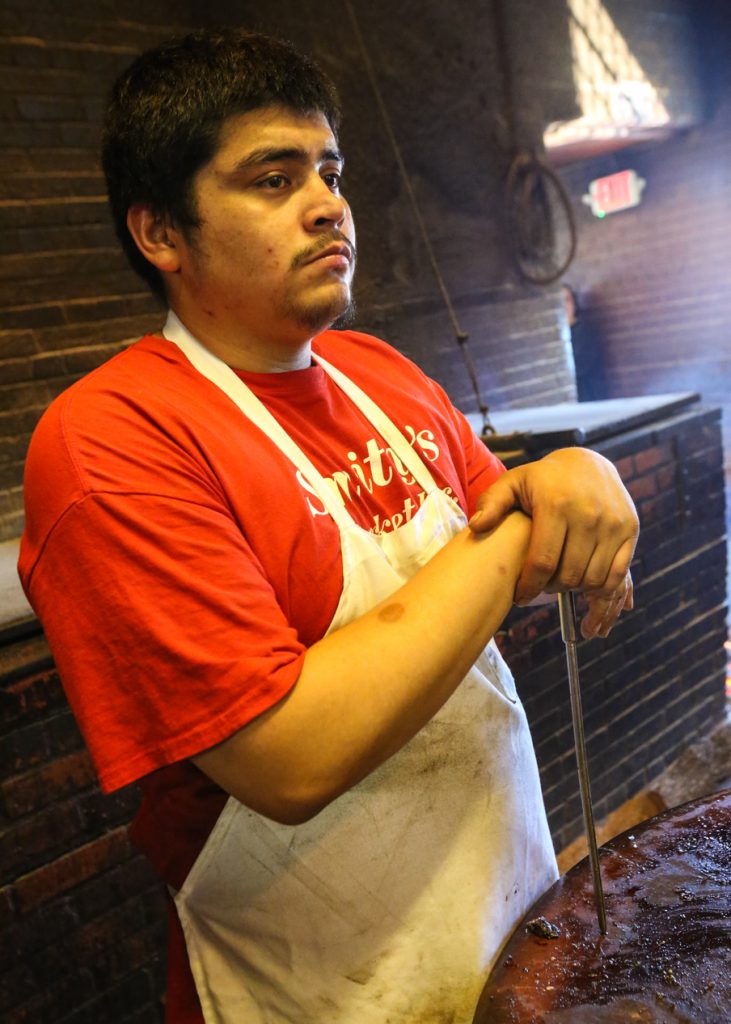
Jared at the block, behind the knife .
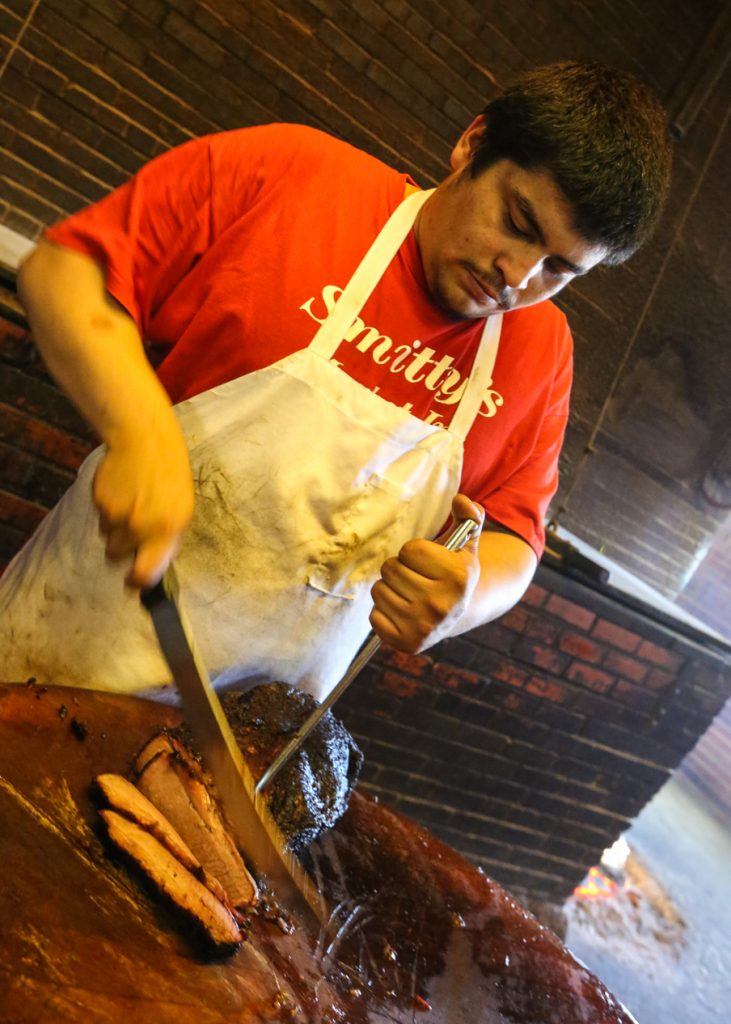

Canessa making the sale.
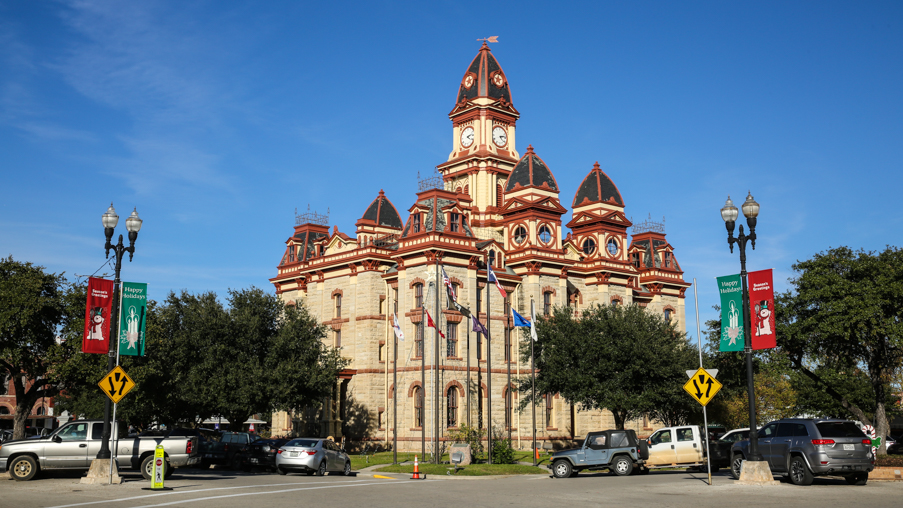
Link to past Lockhart Barbecue post.
The crew at Smitty’s has the same kind of presence and energy, now and then.
The People of Lockhart (TX) BBQ ~ Kreuz’ & Smitty’s Image Gallery
WHOOPERS
Warning: Use of undefined constant gad_content_tag_filter_replace - assumed 'gad_content_tag_filter_replace' (this will throw an Error in a future version of PHP) in /home/dx87kwtjkt0i/public_html/wp-content/plugins/web-ninja-google-analytics/webninja_ga.php on line 1813
Aransas NWR / Goose Island, Texas ~ 12/2019

Multiple days at a rebuilding, a still recovering Goose Island SP.
The aftermath of Hurricane Harvey still evident.
Lamar Peninsula felt scrubbed, severely pruned and brightly repainted.
Nice.
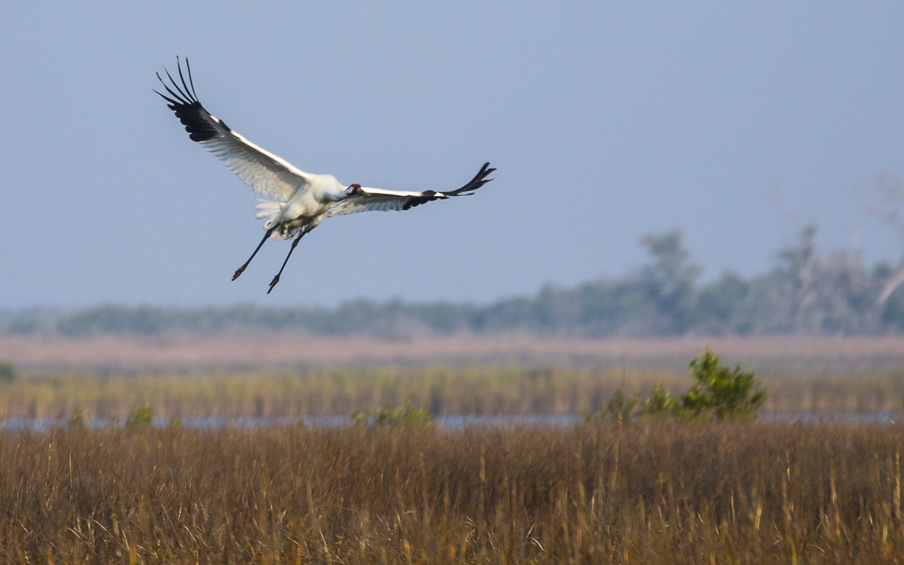
Three days on the water with Jeff Parker of Explore In Focus, captained by Kevin Sims and Lori McCullough Sims of Aransas Bay Birding Charters.
All quality people offering personable and knowledgeable professional photography and guide services.
Not to be missed if you are a wildlife photographer.
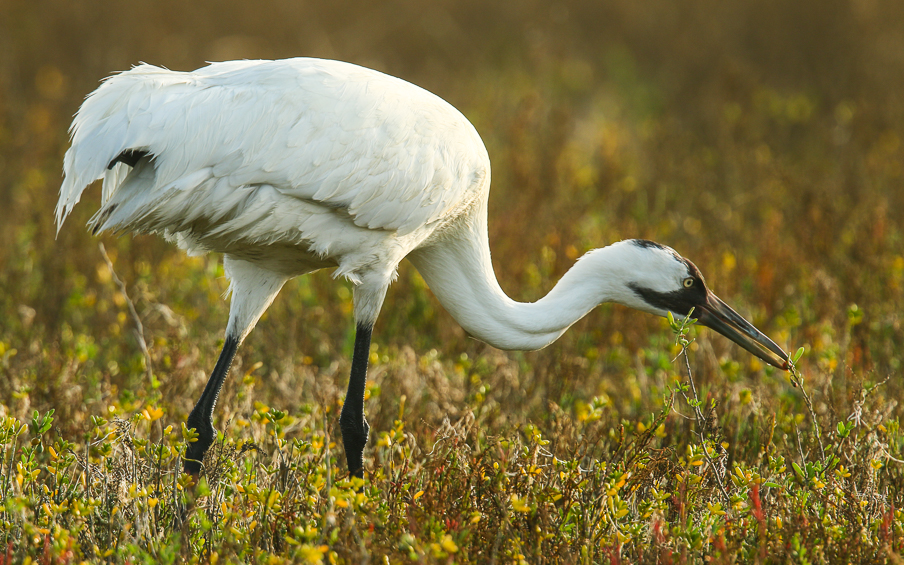
The alternate lifeblood of the area, barge traffic in the Army Corps barge channel; alternate and contrasting with local fishing guides and purveyors of whooping crane access, made itself known the first day.

A sunken paired gravel barge mid-channel with another string of gravel and sand barges run aground on top of the first. A second sinking gravel barge pushed ashore mid-channel to avoid it’s complete sinking, had the Coast Guard’s, Army Corp’s and private contractor’s noisy attention and focus as they scrambled to offload and re-float commercial barges.

This, as barge traffic backed up outside of the barge channel into a connecting bay.

The birds, Whoopers and most all else, retreated well into the center of the marshes as far from mankind and his commerce as possible.
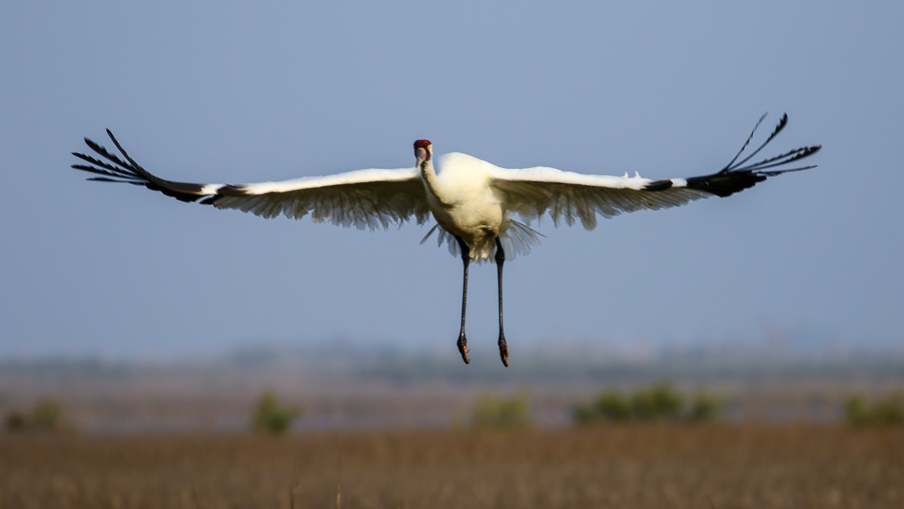
My meager combination of 400 mm telephoto and 1.4 TC would not dent that distance.
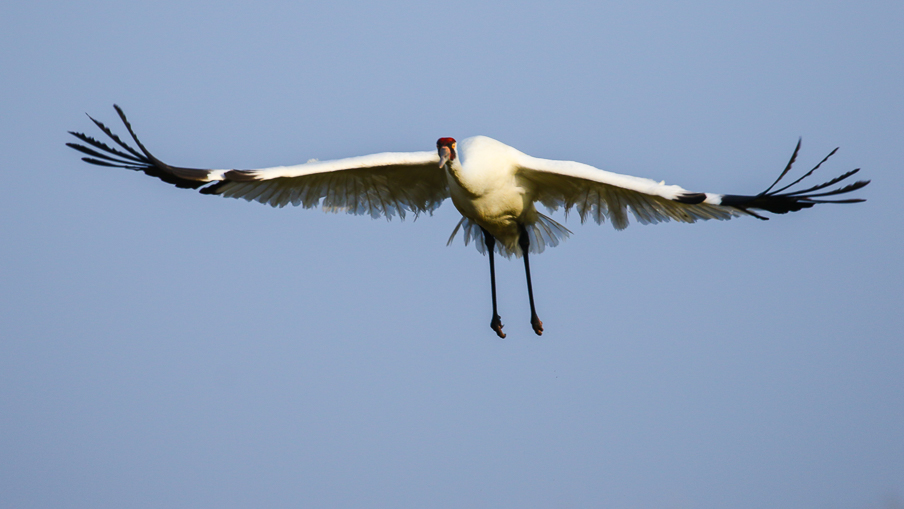
By the third day the barge back up had moved on and Coast Guard’s, Army Corp’s and private contractor’s efforts had yielded some positive results.

The Whooping Cranes returned, visually accessible.

Back ashore, a privately held Lamar Peninsula photography blind yielded huge whooping crane, sand hill crane and whistling duck activity late in the day.
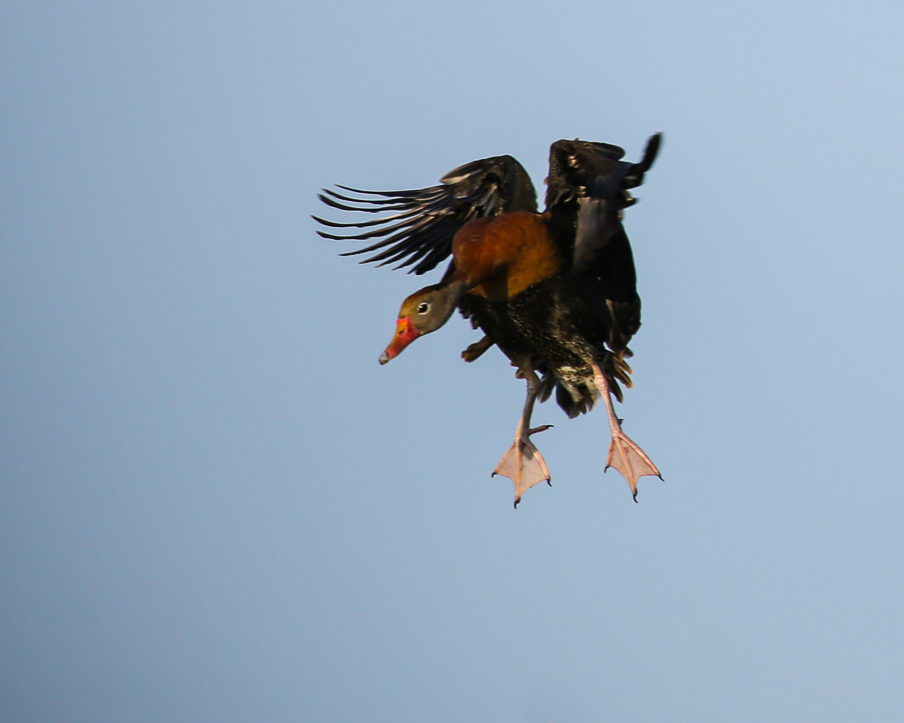
Gallery Link ~ Aransas NWR / Goose Island – 12/2019
Gallery Link ~ Aransas NWR – Winter 2017

Having been away from traveling and travel photography for a good 18 months while we relocated to the New Hampshire seacoast I find myself bumping up against that old learning curve and lots of relearning.
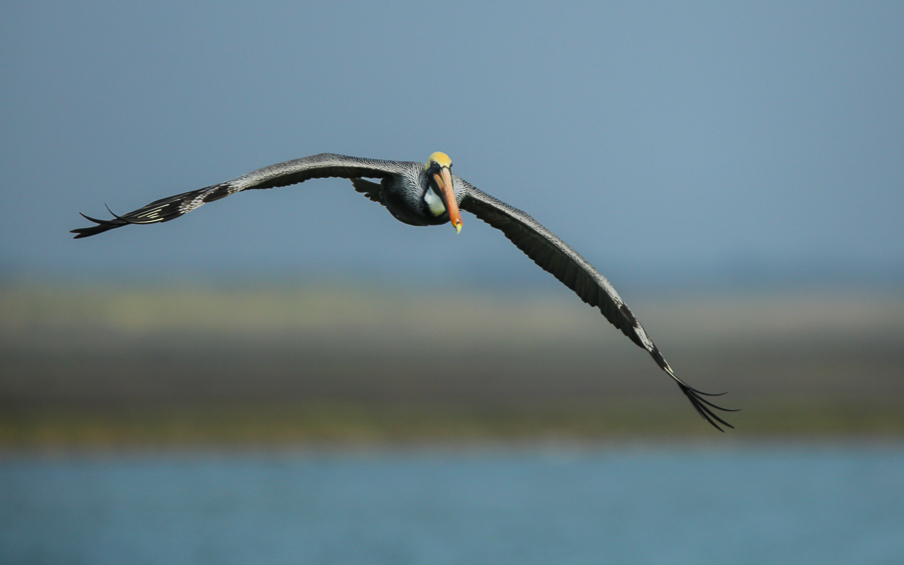
Some things have changed digitally in my time away.
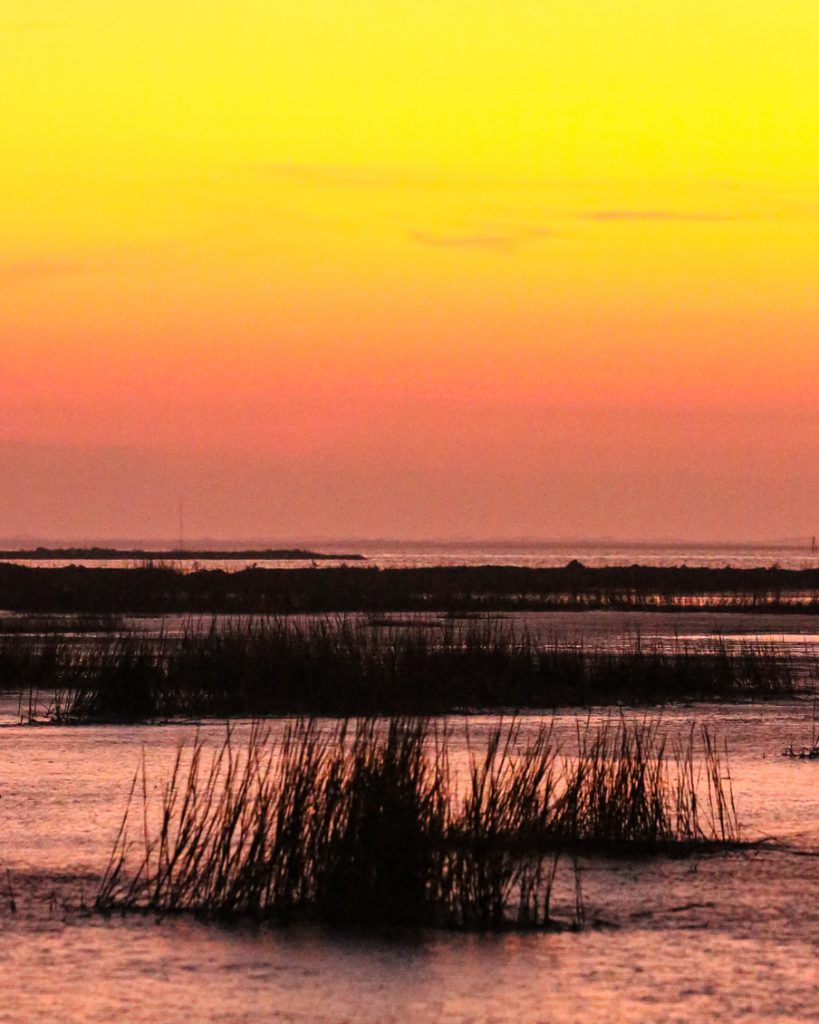
Interesting to be back traveling … 18 months at this age is a long time.
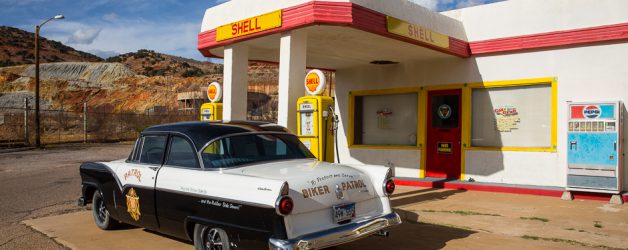
Erie Street, Lowell District ~ Bisbee, Arizona ~ 2018
Warning: Use of undefined constant gad_content_tag_filter_replace - assumed 'gad_content_tag_filter_replace' (this will throw an Error in a future version of PHP) in /home/dx87kwtjkt0i/public_html/wp-content/plugins/web-ninja-google-analytics/webninja_ga.php on line 1813
Erie Street
Lowell
Jay Allen’s Haunts When Not Staging Laconia, Sturgis or Fort Lauderdale
Lowell was, at one time, a sizable mining town located just to the southeast of Old Bisbee.
The majority of the original town-site was consumed by the excavation of the Lavender Pit mine during the 1950’s.
However, what remains of Lowell today is a strikingly intact, historical mid-century street – often utilized as a backdrop for film and video shoots, and well worth a visit to walk back in time.
Lowell is perched at the southern end of the dramatic Lavender Pit, itself a must see while in Bisbee.
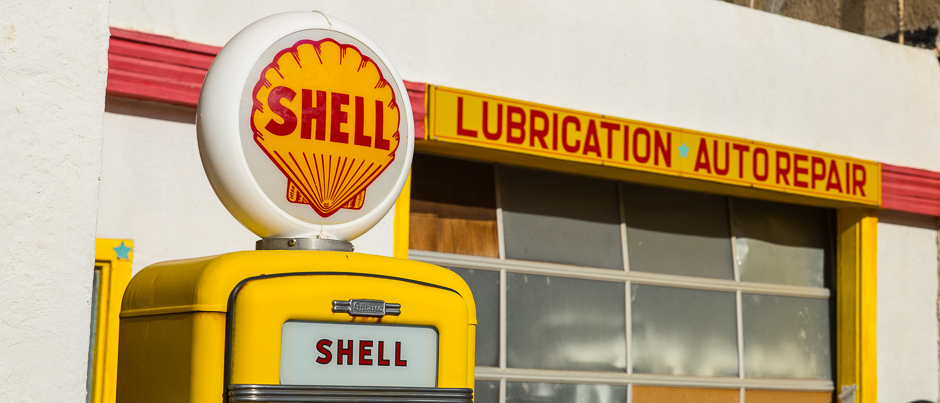
 All that is left today is a small portion of Erie Street, along with Evergreen Cemetery, Saginaw subdivision and Lowell Middle School.
All that is left today is a small portion of Erie Street, along with Evergreen Cemetery, Saginaw subdivision and Lowell Middle School.
These days Lowell is considered by most of the local residents to be more of a place name than an actual community.
Dan Simonis, who is involved in the Lowell Americana Project, said the goal is to remind people of America’s greatest pastimes.
“I think it’s going to be a kind of mirror that Americans can look through to see ourselves, like an outdoor museum,” he said. “I believe that every country has something that makes it distinct and I think for America that point was in the 1940s and 1950s. Drive-in movie theatres and tail fins. That kind of thing.”
Lowell Americana Music Festival
“We are resurrecting a “postcard” of small town America on Erie St in the Lowell district of Bisbee AZ, returning the street to its 1940’s and 50’s glory.”
Holding now 31 land speed records, Jay Allen’s liven the salt dream. Long time resident of Lowell AZ, Jay Allen has made a name for himself on the vast Bonneville salts. Hitting his 31st Land Speed Record with a transmission that was holding by a thread with speeds that exceeded 184mph on a raw bike. Thanks to Chris Revas for a fresh tranny and tony Matthews for busting his back to replace it, Were in line with a 15mph headwind to attempt a record in the gas class! With legends like Burt Munro, Marty Dickerson, Gary Gabolich Jay is on his way to becoming one of motorcycle’s racing icons. With the weather not being a friend these last couple years however this year was crystal, and sure didn’t stop records from being broken.
“Over the past twenty plus years, Allen has grown his business into a favored brand of interactive motorcycle entertainment. He is all about maintaining authentic tradition at the events and remaining loyal to the history of motorcycling. At the same time, Allen seeks out the latest and greatest in today’s motorcycle culture and business to infuse into the rally experience. Jay has coined his production style as “Ol’ Skool meets New Skool.” Allen knows the genuine ingredients necessary to establish a favorite hangout for many motorcycle industry icons and hard core riders.
“We’re a biker shrine. We’re the real deal,” tells Jay referring to his legacy with the Broken Spoke. And this concept he brings to all he does. Ever the consummate host of the party, his high energy emcee talent and vast knowledge of motorcycle culture and history captivates patrons from around the globe. ”
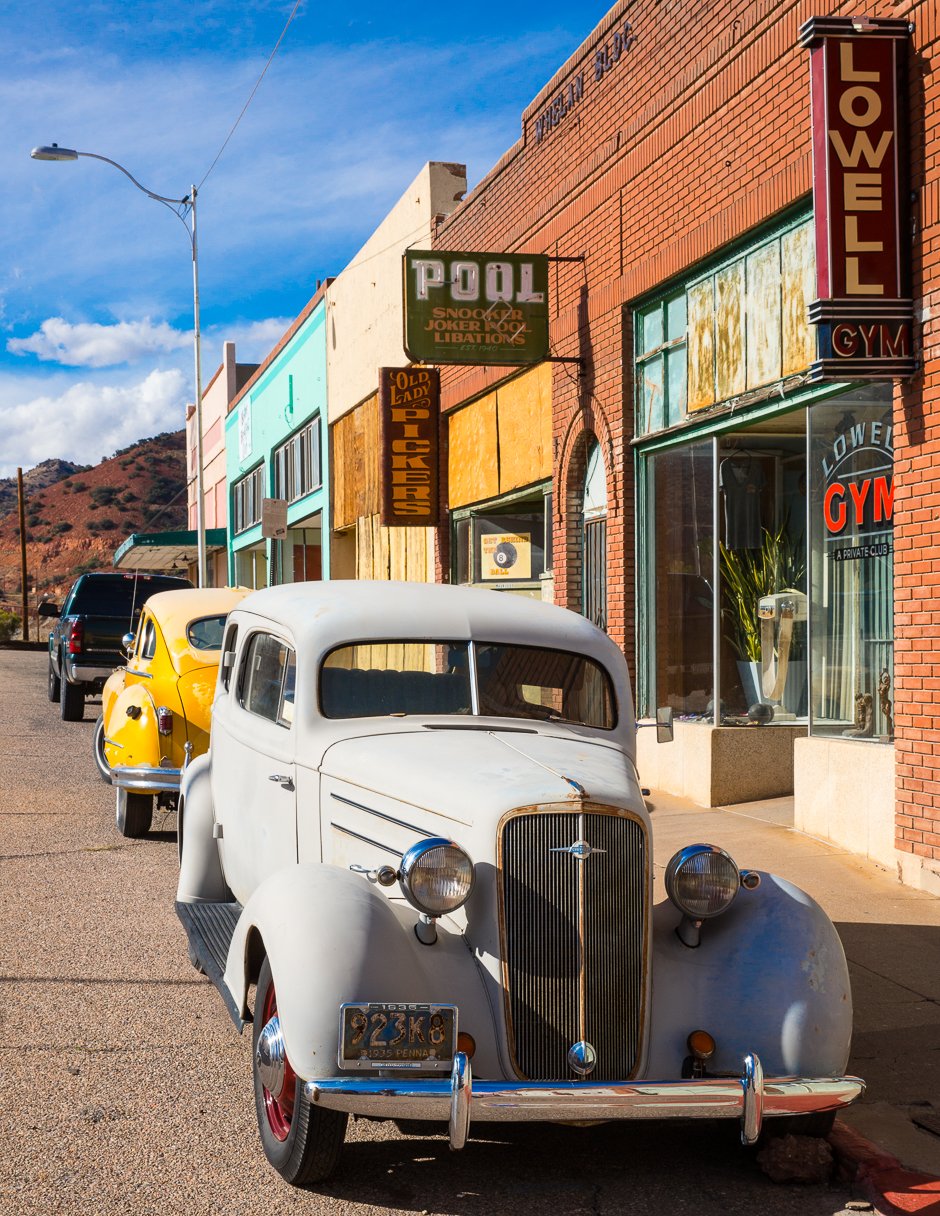
 Past Erie Street, Lowell ~ Bisbee, Arizona Post Link
Past Erie Street, Lowell ~ Bisbee, Arizona Post Link
Erie Street, Lowell ~ Bisbee, Arizona – Expanded Image Gallery Link
(and with enough band width a slide show)

Whitewater Draw ~ Winter 2018 ~ Arizona Game and Fish
Warning: Use of undefined constant gad_content_tag_filter_replace - assumed 'gad_content_tag_filter_replace' (this will throw an Error in a future version of PHP) in /home/dx87kwtjkt0i/public_html/wp-content/plugins/web-ninja-google-analytics/webninja_ga.php on line 1813
McNeal, Arizona
Winter 2018
The Sandhill Cranes and Snow Geese, yes with good proximity, but lots of other birds and wildlife as well.
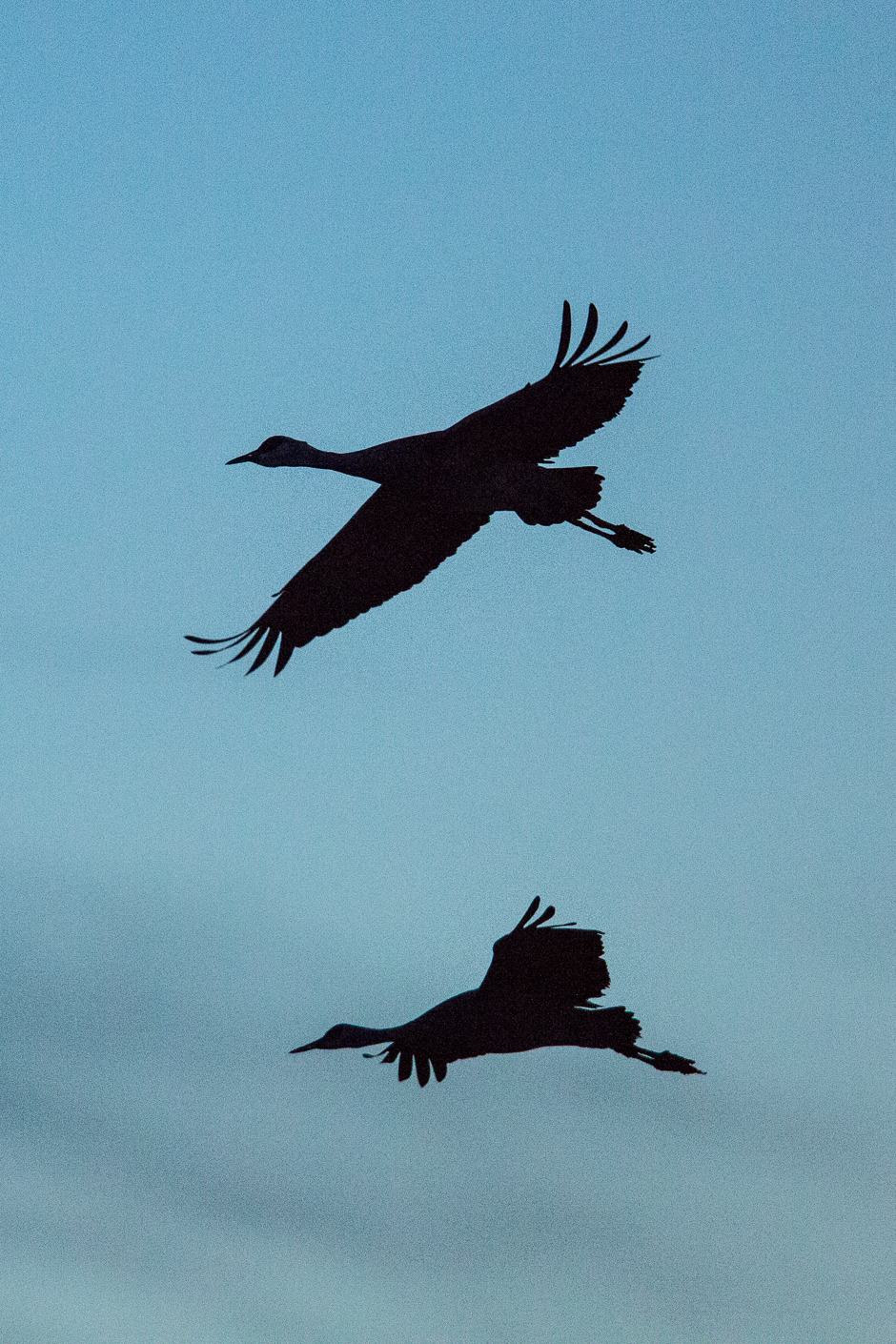 Managed for waterfowl, cranes, and other wetland associated birds.
Managed for waterfowl, cranes, and other wetland associated birds.
 The number of wintering sandhill cranes in the area has increased dramatically since the 1950s, probably in response to the abundant food (primarily corn) available in harvested grain fields.
The number of wintering sandhill cranes in the area has increased dramatically since the 1950s, probably in response to the abundant food (primarily corn) available in harvested grain fields.
 This area is now the best sandhill crane-viewing site in Arizona.
This area is now the best sandhill crane-viewing site in Arizona.
 The area features amenities such as restrooms, parking, bus and motor home access, walking trails and interpretive signs, and viewing platforms with binoculars.
The area features amenities such as restrooms, parking, bus and motor home access, walking trails and interpretive signs, and viewing platforms with binoculars.
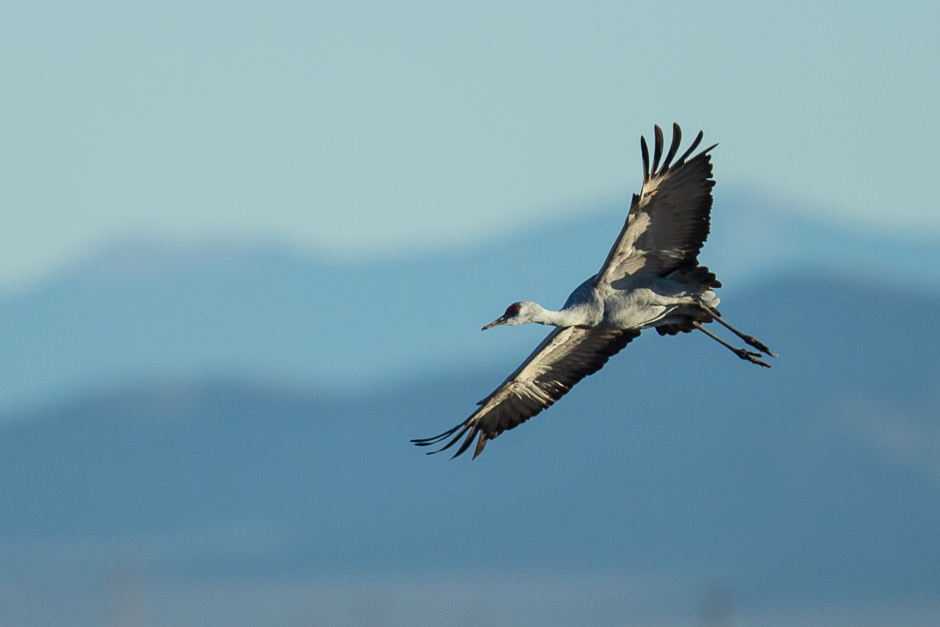 Gonna’ need some help identifying the little birds of the west.
Gonna’ need some help identifying the little birds of the west.
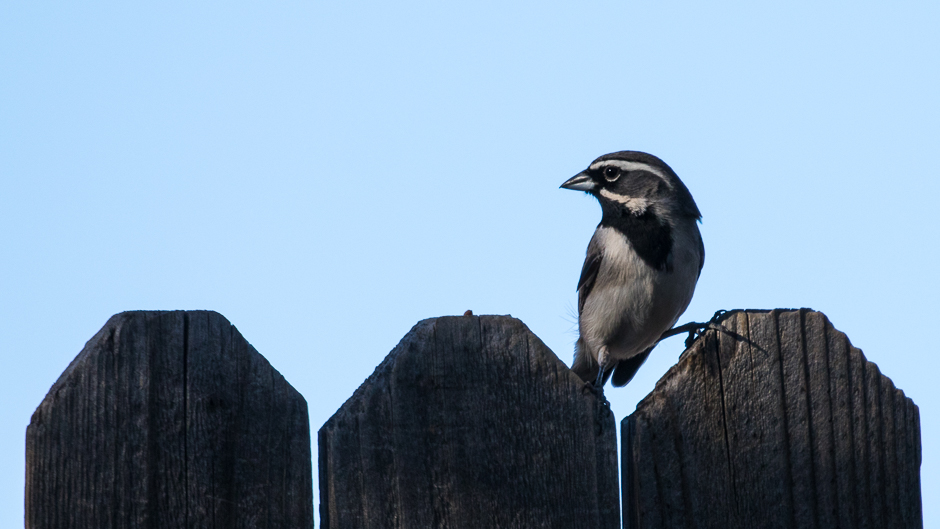

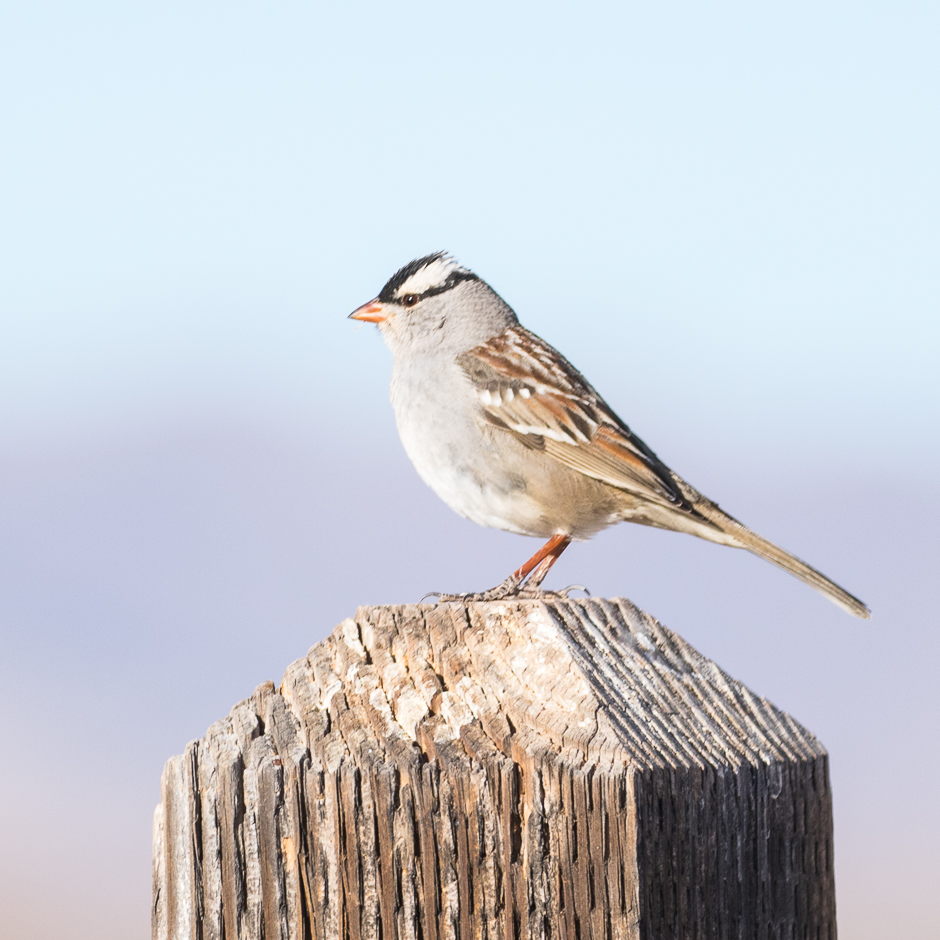
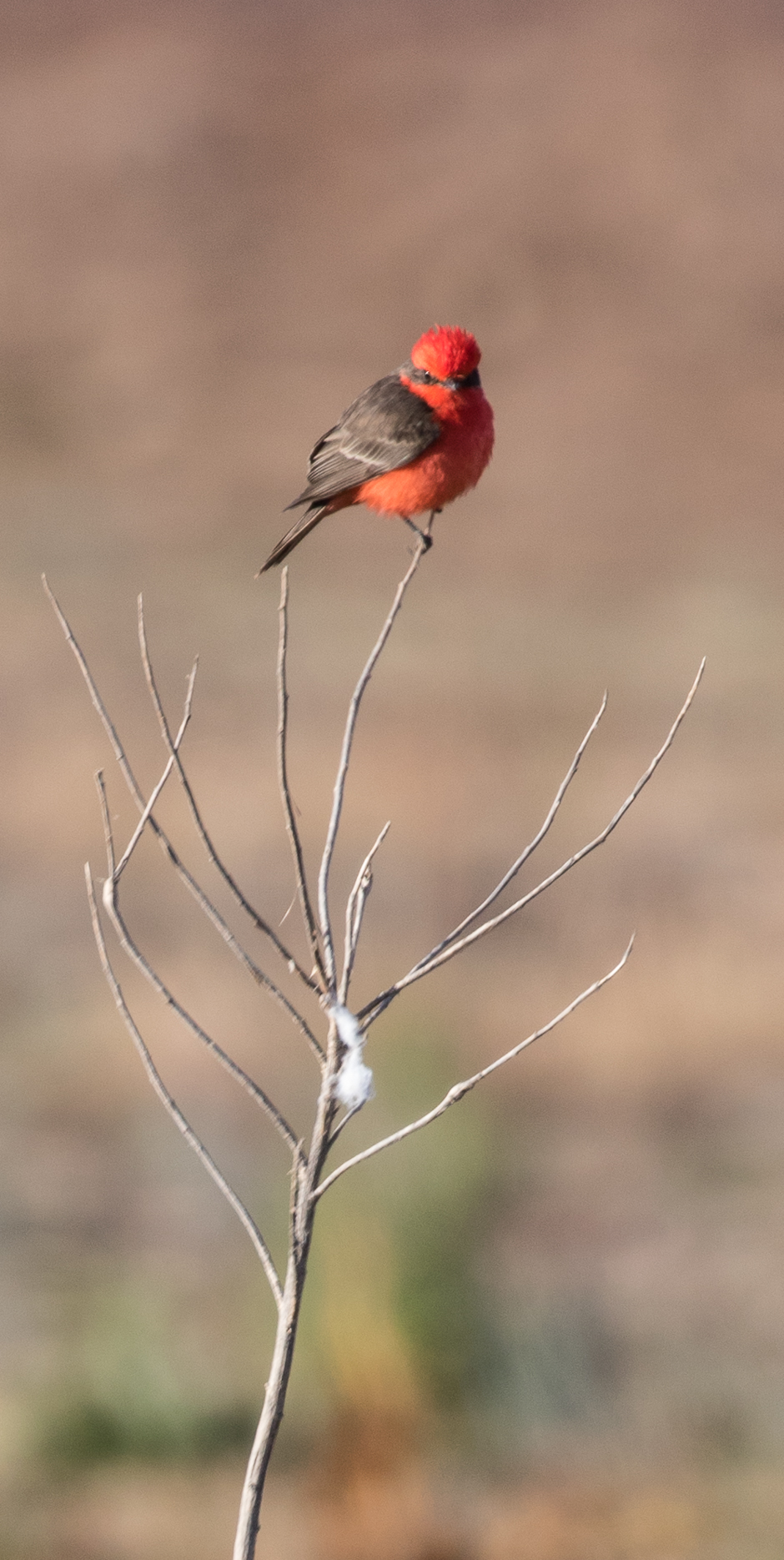 Vermillion Flycatchers : Male Above, Female Below
Vermillion Flycatchers : Male Above, Female Below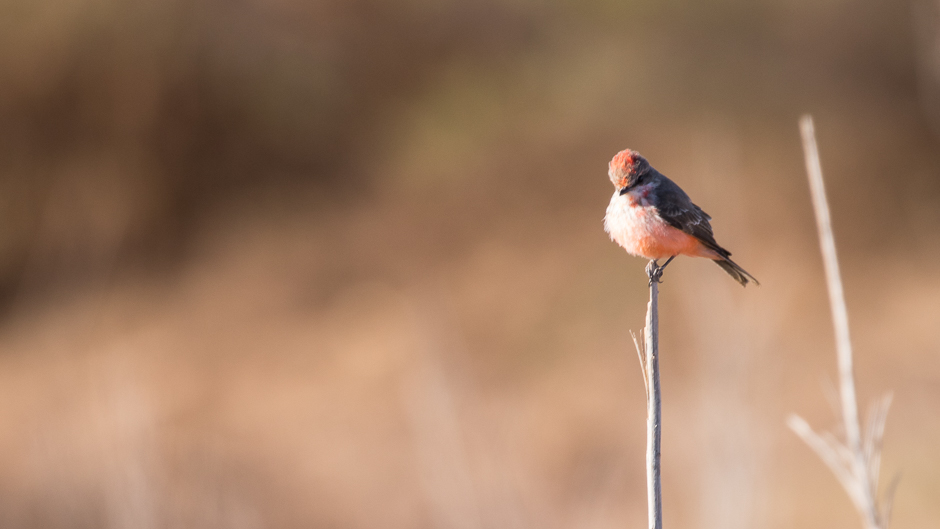
Whitewater Draw Winter 2018 ~ Expanded Image Gallery Link
Whitewater Draw ~ Previous Post Link
Whitewater Draw ~ Expanded Image Gallery Link
The Road To Apache Pass ~ Fort Bowie NM ~ Cochise County, Arizona
Warning: Use of undefined constant gad_content_tag_filter_replace - assumed 'gad_content_tag_filter_replace' (this will throw an Error in a future version of PHP) in /home/dx87kwtjkt0i/public_html/wp-content/plugins/web-ninja-google-analytics/webninja_ga.php on line 1813
Cochise County, Arizona

Coati In Camp ~ Chiricahua NM ~ Cochise County, Arizona
Warning: Use of undefined constant gad_content_tag_filter_replace - assumed 'gad_content_tag_filter_replace' (this will throw an Error in a future version of PHP) in /home/dx87kwtjkt0i/public_html/wp-content/plugins/web-ninja-google-analytics/webninja_ga.php on line 1813
Cochise County, Arizona

Echo Canyon ~ Chiricahua NM ~ Cochise County, Arizona
Warning: Use of undefined constant gad_content_tag_filter_replace - assumed 'gad_content_tag_filter_replace' (this will throw an Error in a future version of PHP) in /home/dx87kwtjkt0i/public_html/wp-content/plugins/web-ninja-google-analytics/webninja_ga.php on line 1813
Cochise County, Arizona
Faraway Ranch ~ Chiricahua NM ~ Cochise County, Arizona
Warning: Use of undefined constant gad_content_tag_filter_replace - assumed 'gad_content_tag_filter_replace' (this will throw an Error in a future version of PHP) in /home/dx87kwtjkt0i/public_html/wp-content/plugins/web-ninja-google-analytics/webninja_ga.php on line 1813
Lillian Riggs, Owner-Proprieter
Cochise County, Arizona

Butterfly Magic
Warning: Use of undefined constant gad_content_tag_filter_replace - assumed 'gad_content_tag_filter_replace' (this will throw an Error in a future version of PHP) in /home/dx87kwtjkt0i/public_html/wp-content/plugins/web-ninja-google-analytics/webninja_ga.php on line 1813
Butterfly Magic
Tucson, Arizona
Butterflies In the Orchid House
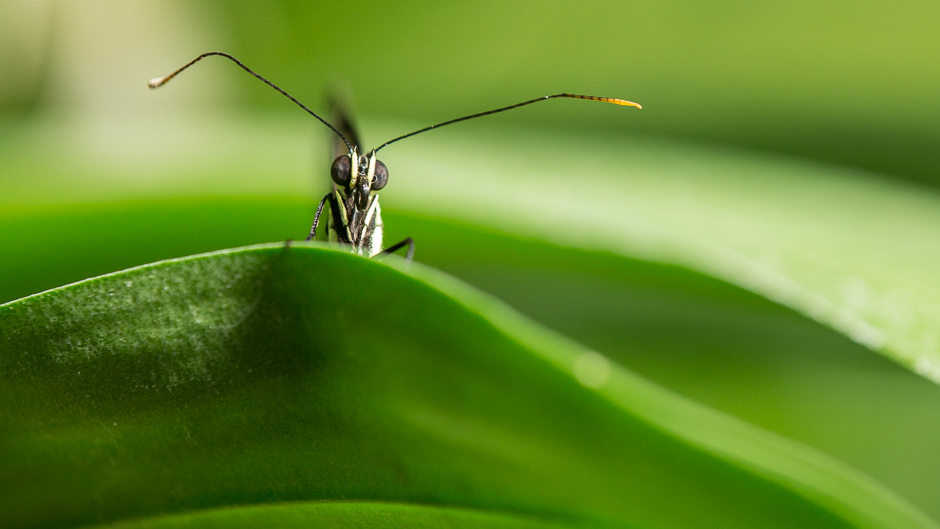
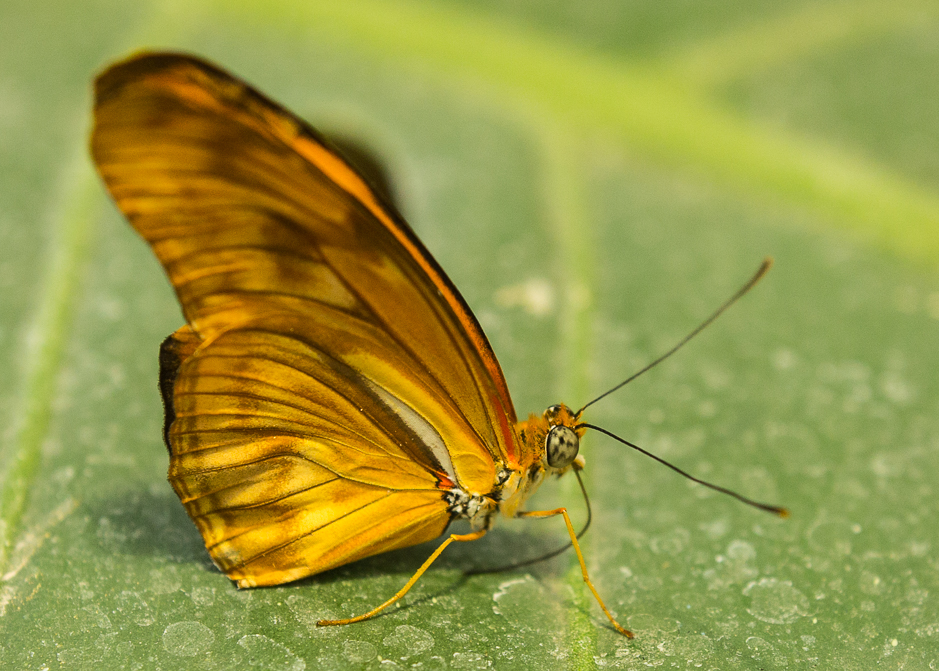
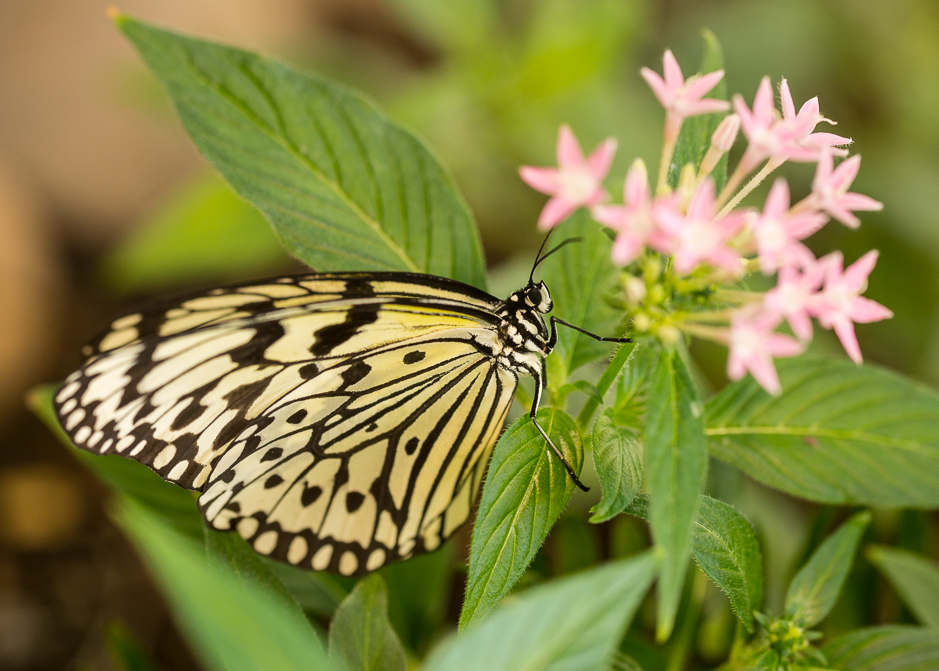
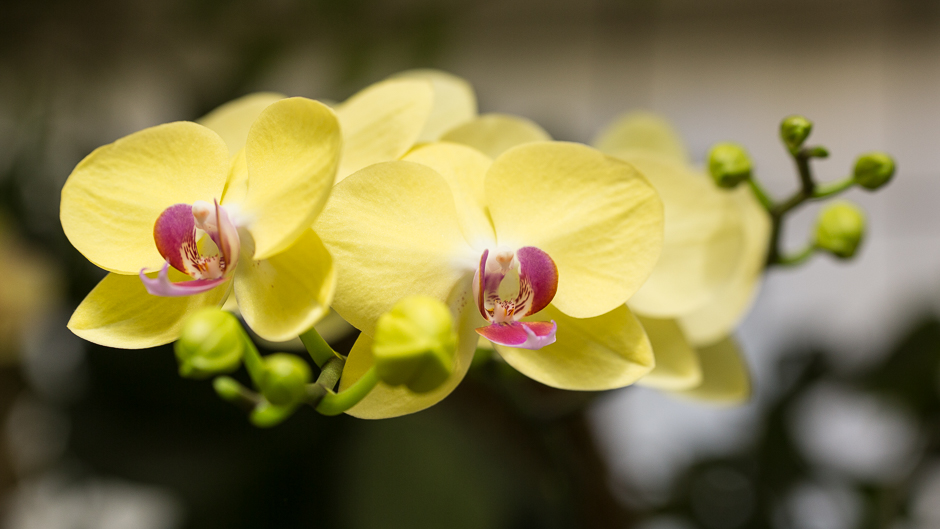

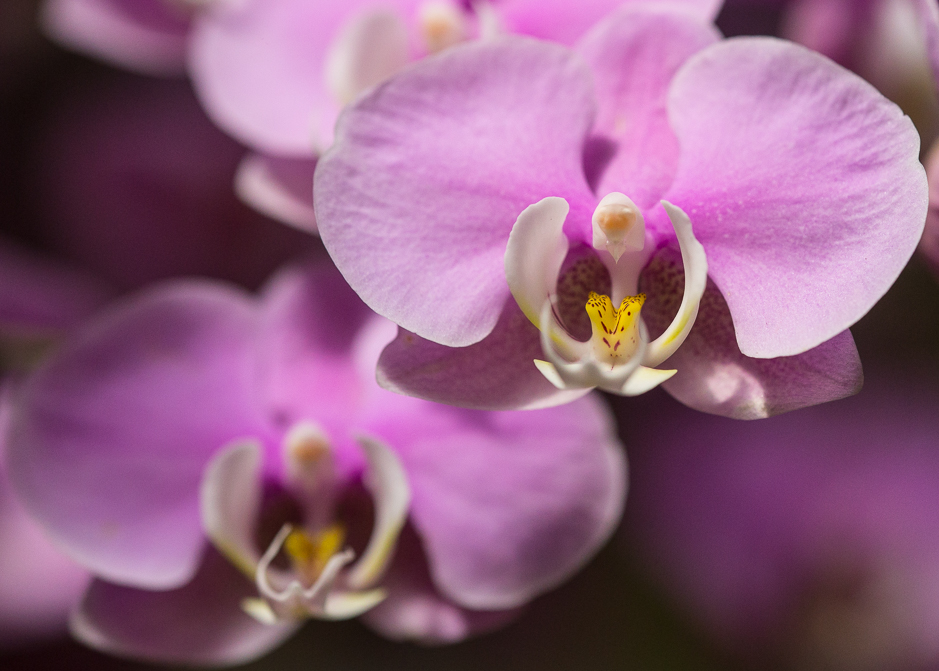
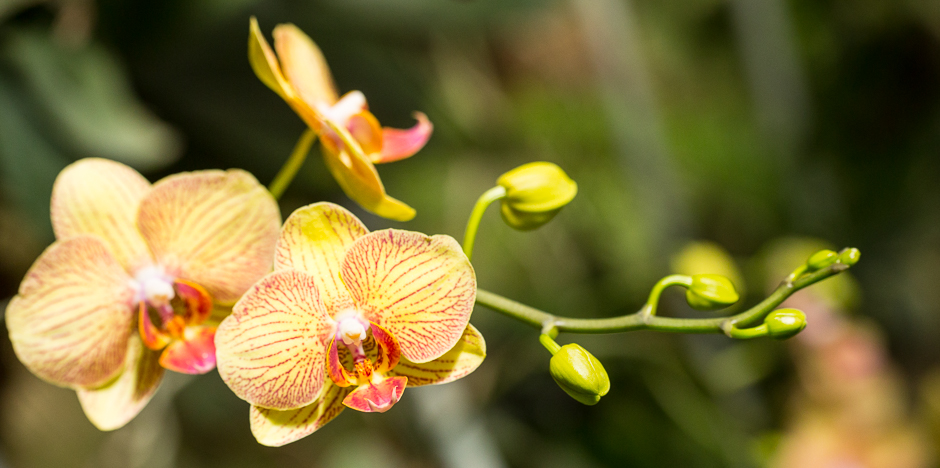
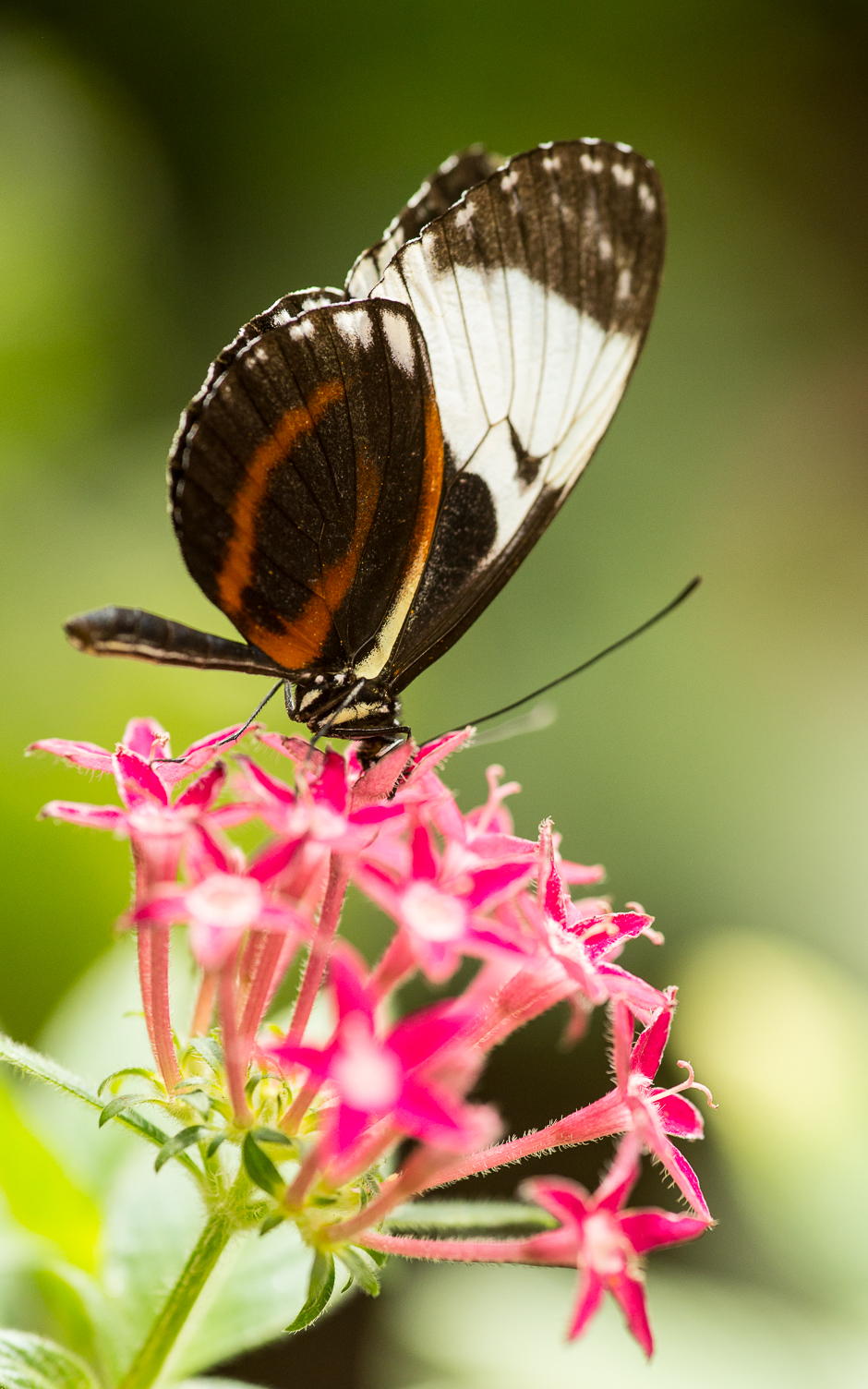


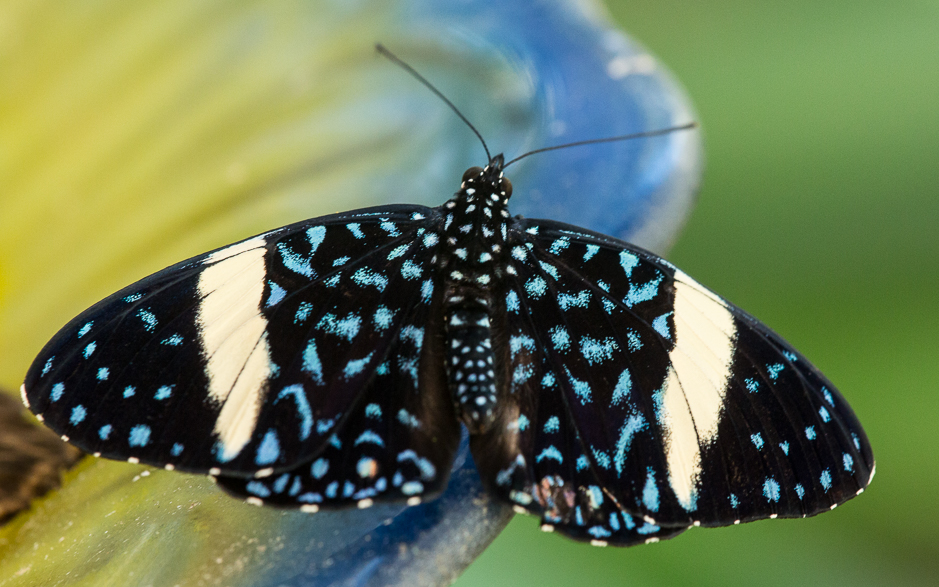

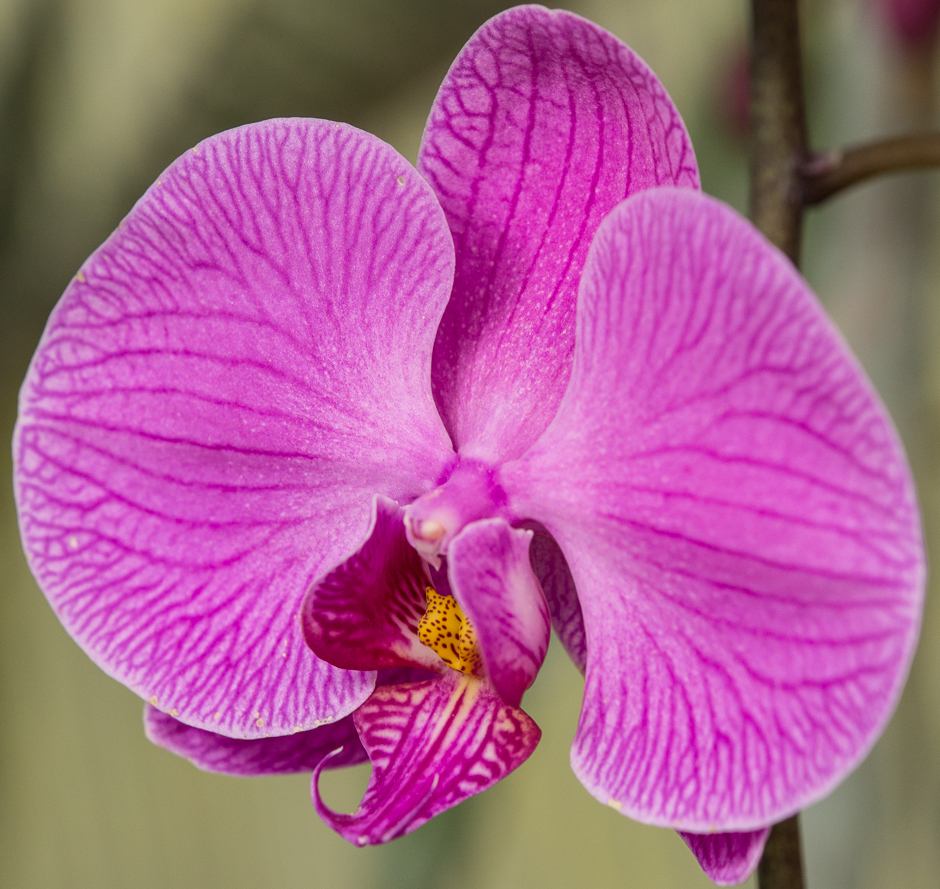
 Orchids In the Butterfly House
Orchids In the Butterfly House
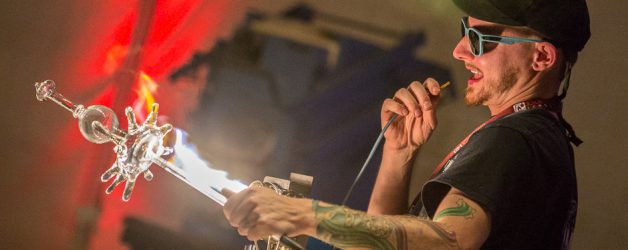
Flame Off
Warning: Use of undefined constant gad_content_tag_filter_replace - assumed 'gad_content_tag_filter_replace' (this will throw an Error in a future version of PHP) in /home/dx87kwtjkt0i/public_html/wp-content/plugins/web-ninja-google-analytics/webninja_ga.php on line 1813
2018 Tucson Gem & Mineral Show ~ Flame Off
Tucson, Arizona
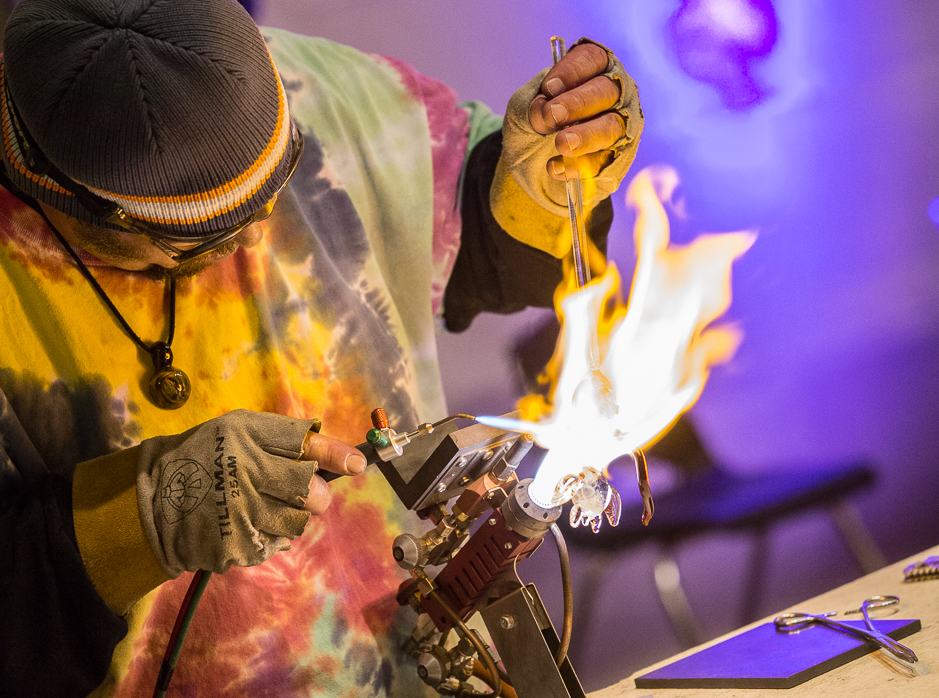
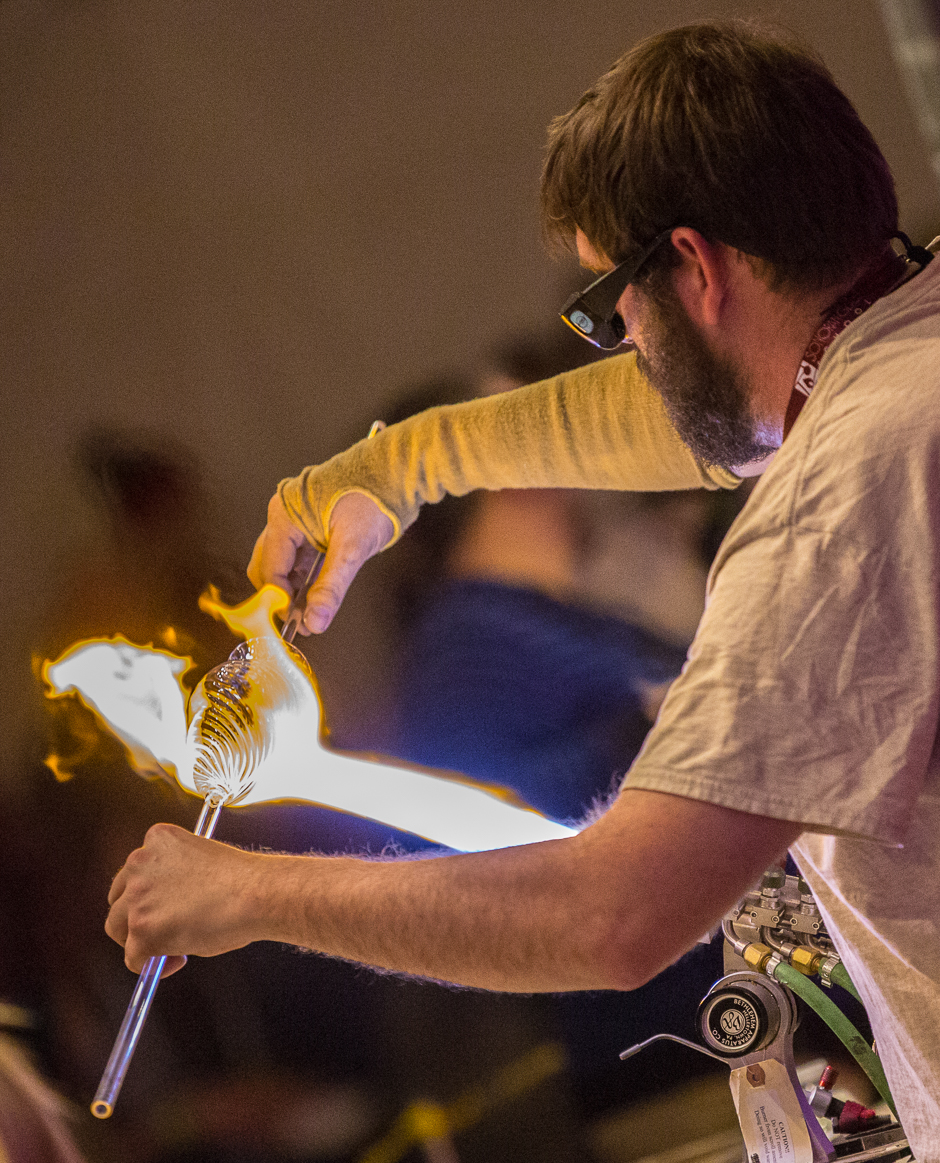


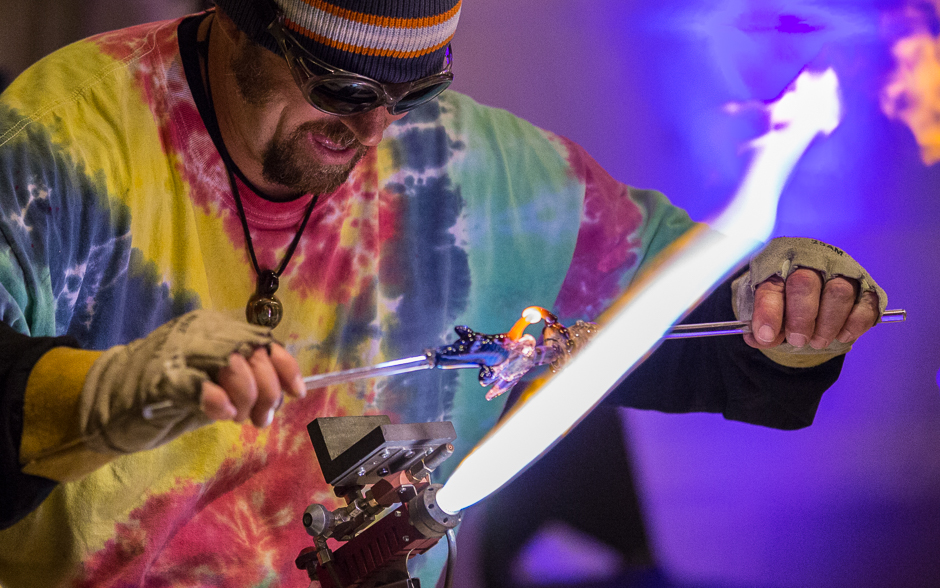
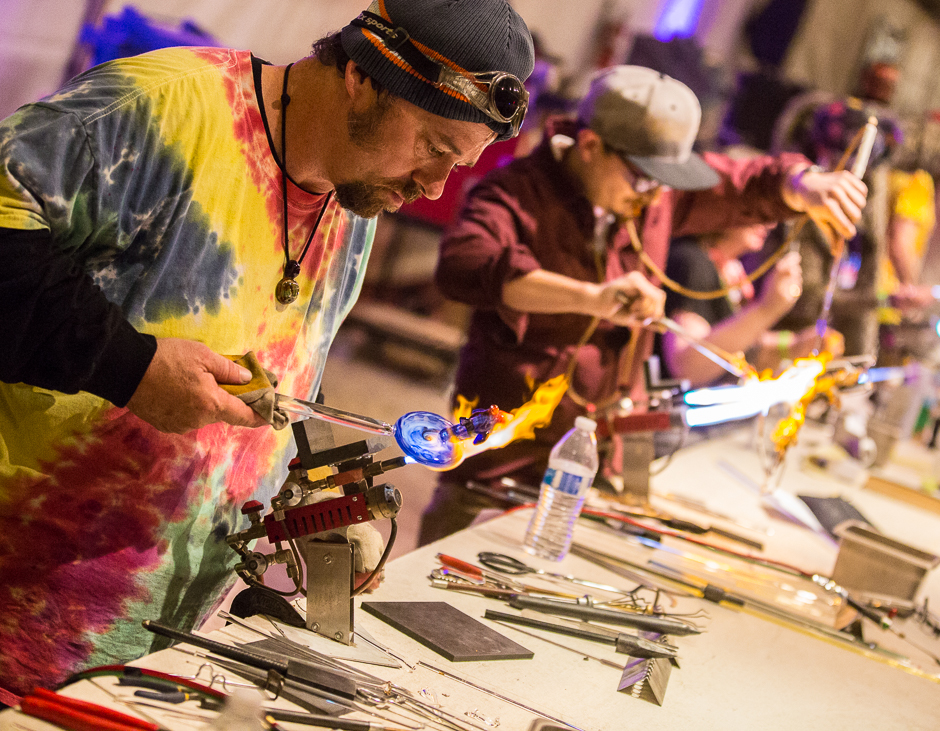
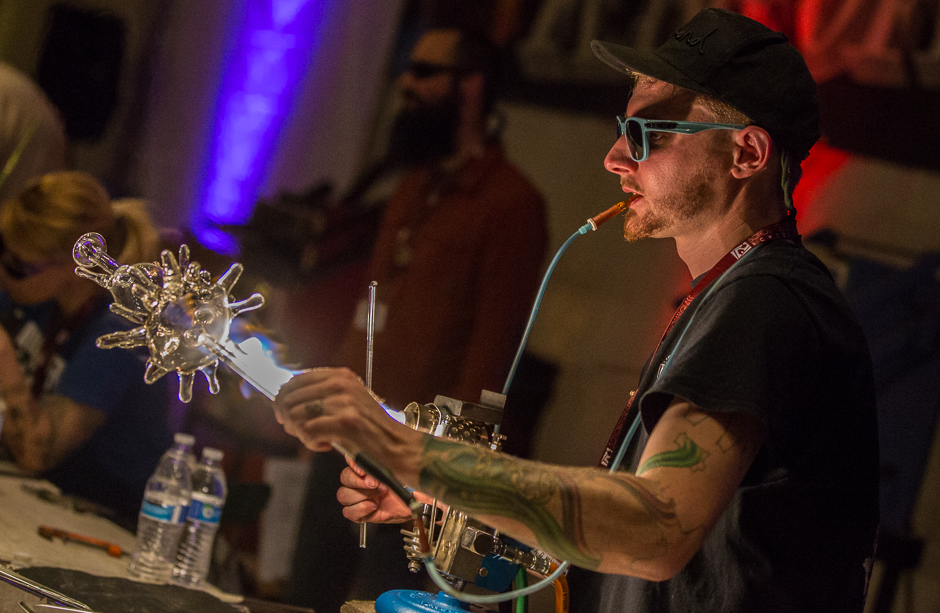
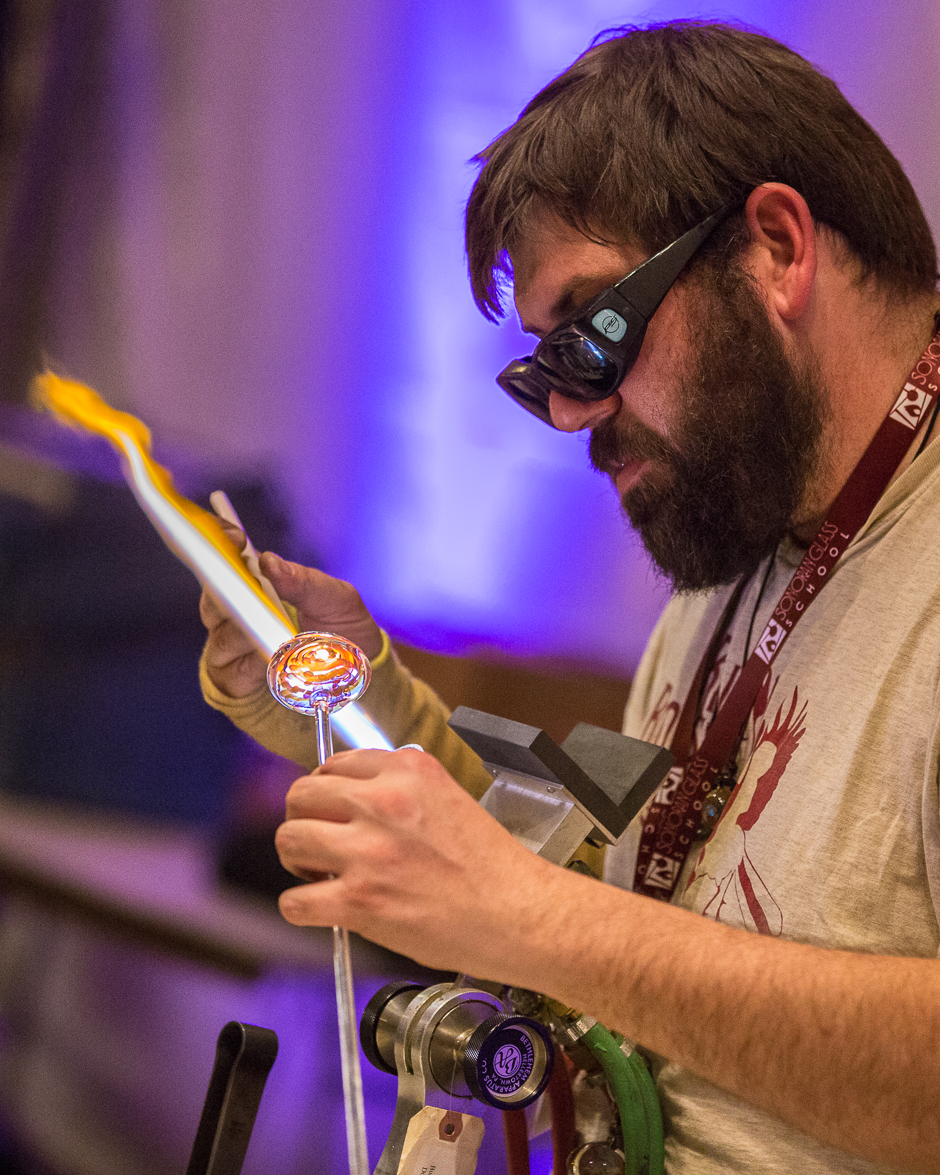


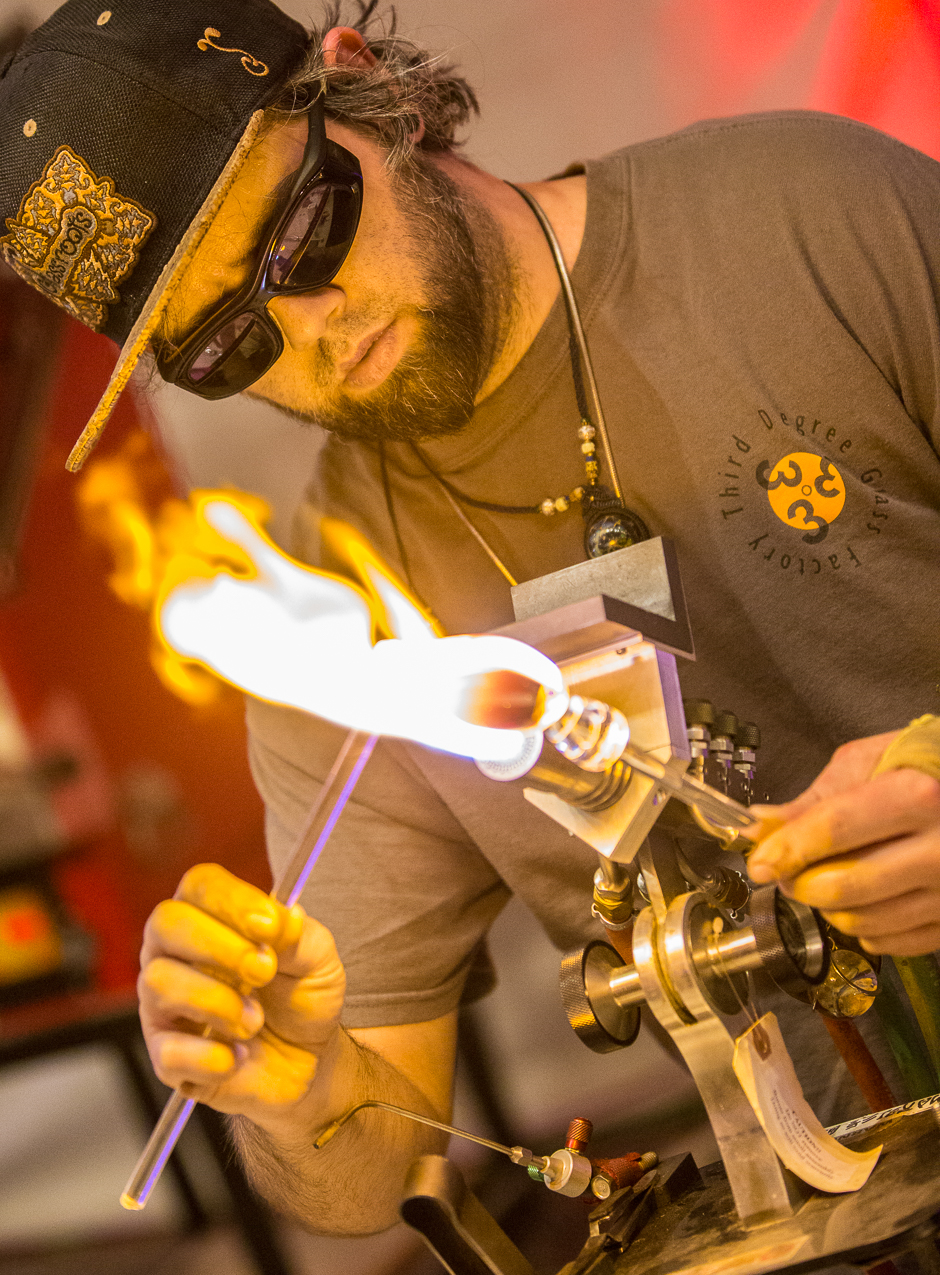

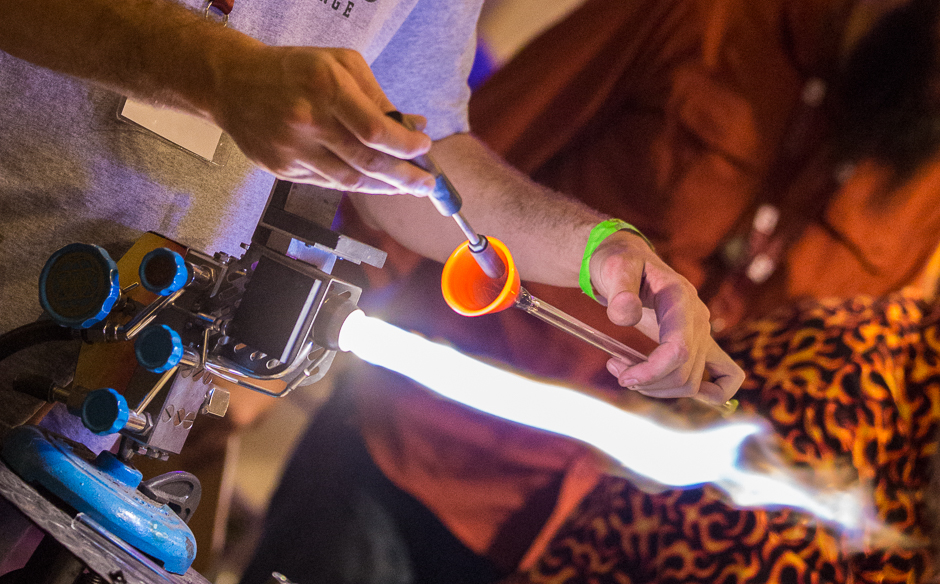

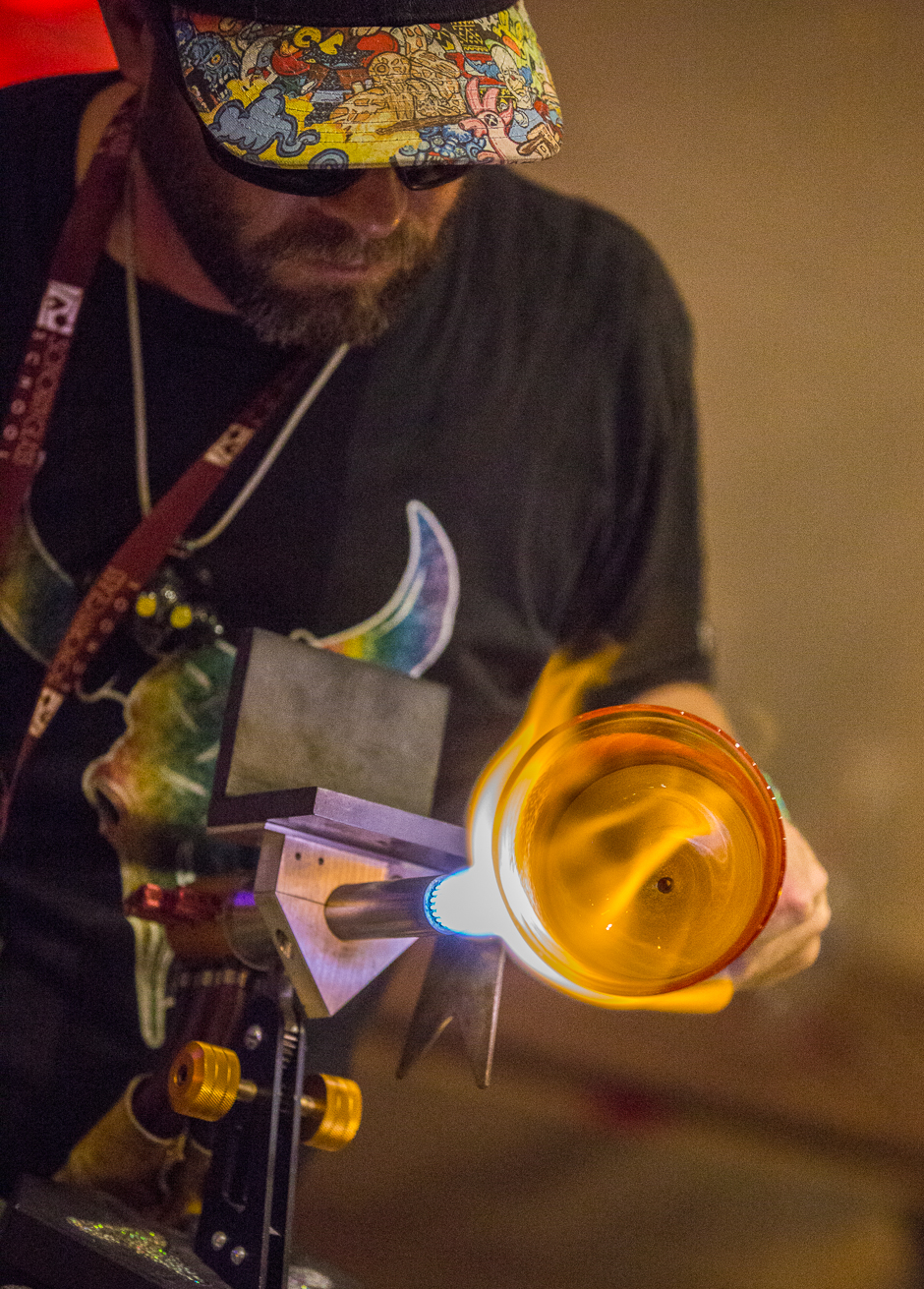
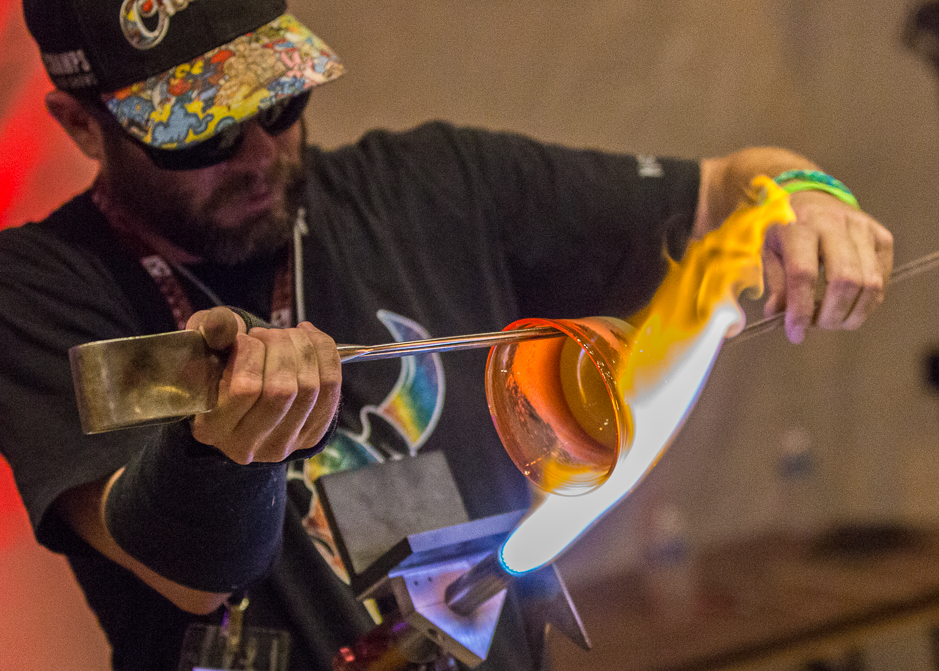
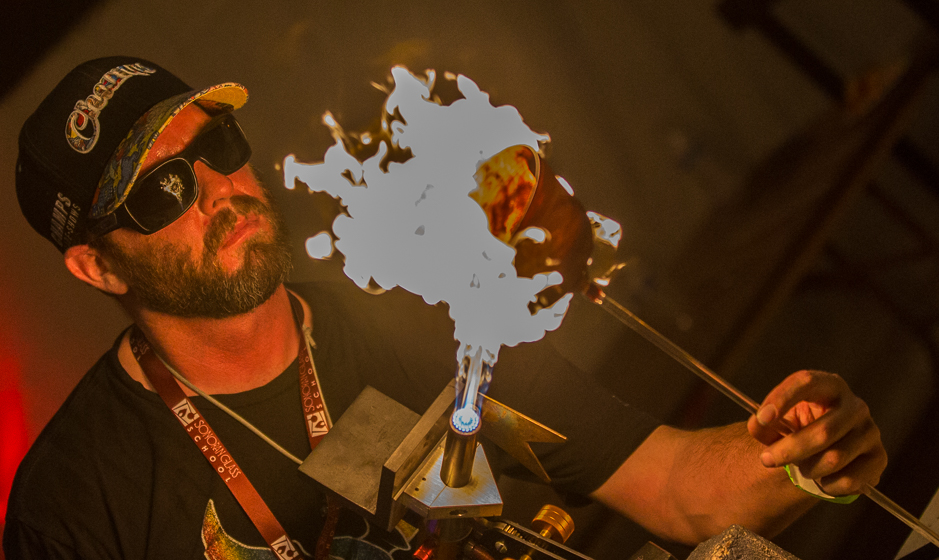 Sonoran Glass ~ Image Gallery Link
Sonoran Glass ~ Image Gallery Link
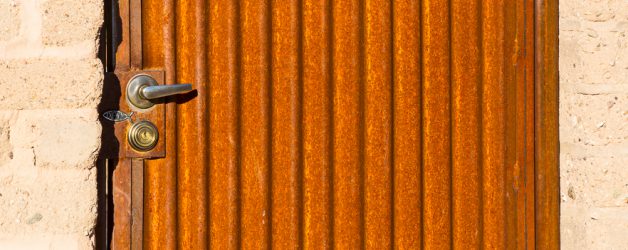
Barrio Historico ~ Tucson, Arizona
Warning: Use of undefined constant gad_content_tag_filter_replace - assumed 'gad_content_tag_filter_replace' (this will throw an Error in a future version of PHP) in /home/dx87kwtjkt0i/public_html/wp-content/plugins/web-ninja-google-analytics/webninja_ga.php on line 1813
Barrio Historico
Also Known As Barrio Viejo and Maybe More Importantly Barrio Libre
Tucson, Arizona
“Barrio Viejo, the old neighborhood, mainly consists of Tucson’s 19th century homes and commercial buildings. In the 1960’s & ’70’s, much of the old neighborhood was bulldozed to make way for urban redevelopment, including the Tucson Convention Center. Today, most Tucsonans would be happy to bulldoze the Convention Center if it would bring back the heritage that was lost.
In the 1880’s & ’90’s, this was home to a culturally diverse community of working class people from America, Europe, Africa and Asia. Many worked for the Southern Pacific Railroad. The arrival of the SP in 1880 changed Tucson from a hopelessly impoverished, dusty little Mexican village in the middle of nowhere to a growing Southwestern city of seemingly limitless opportunity.”
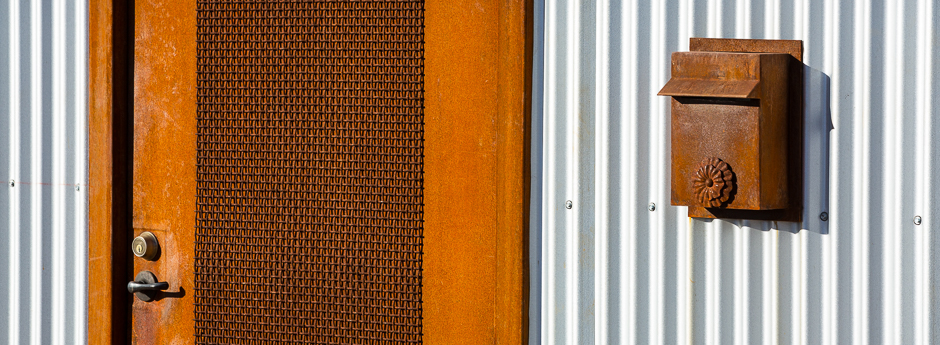
“Barrio Viejo is located just south of the Convention Center. If you go (and you should), take your camera. The images we share here are but a small representation of the old architectural styles that are now preserved by private individuals and families.”
“Tucson’s second oldest historic district, Barrio Viejo is anchored in the 1870’s but lost its northern half to bulldozers during urban renewal in the late 1960s. It still has more territorial adobes than any other Tucson district. The architecture is predominantly Sonoran Traditional where zero setbacks are common, creating long, continuous streetscapes of houses, offices, and shops. South Convent Avenue has become the center of historic rehabilitation and infill, most of it residential.”
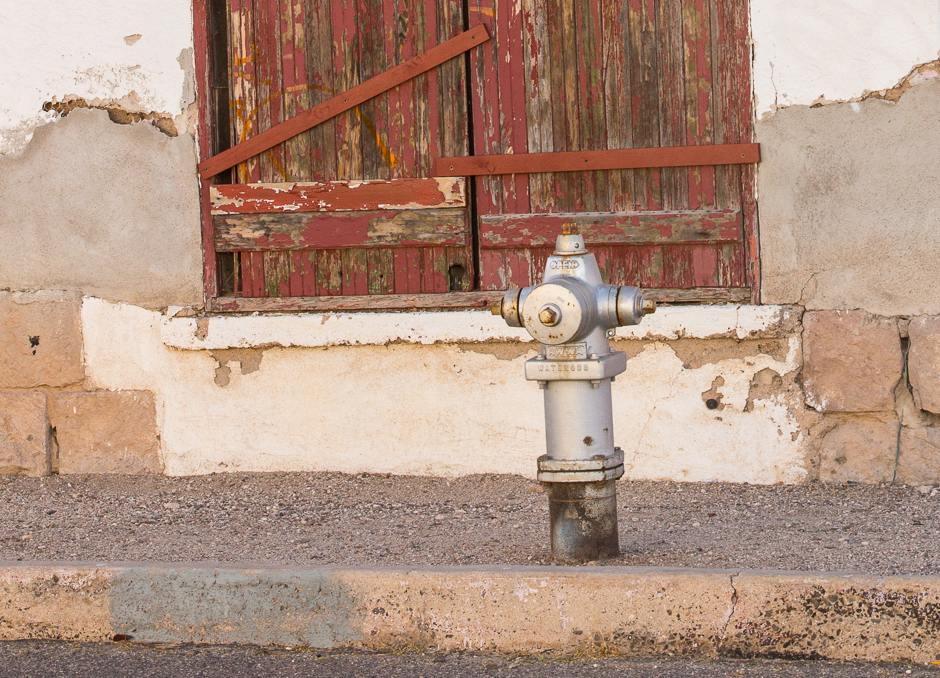
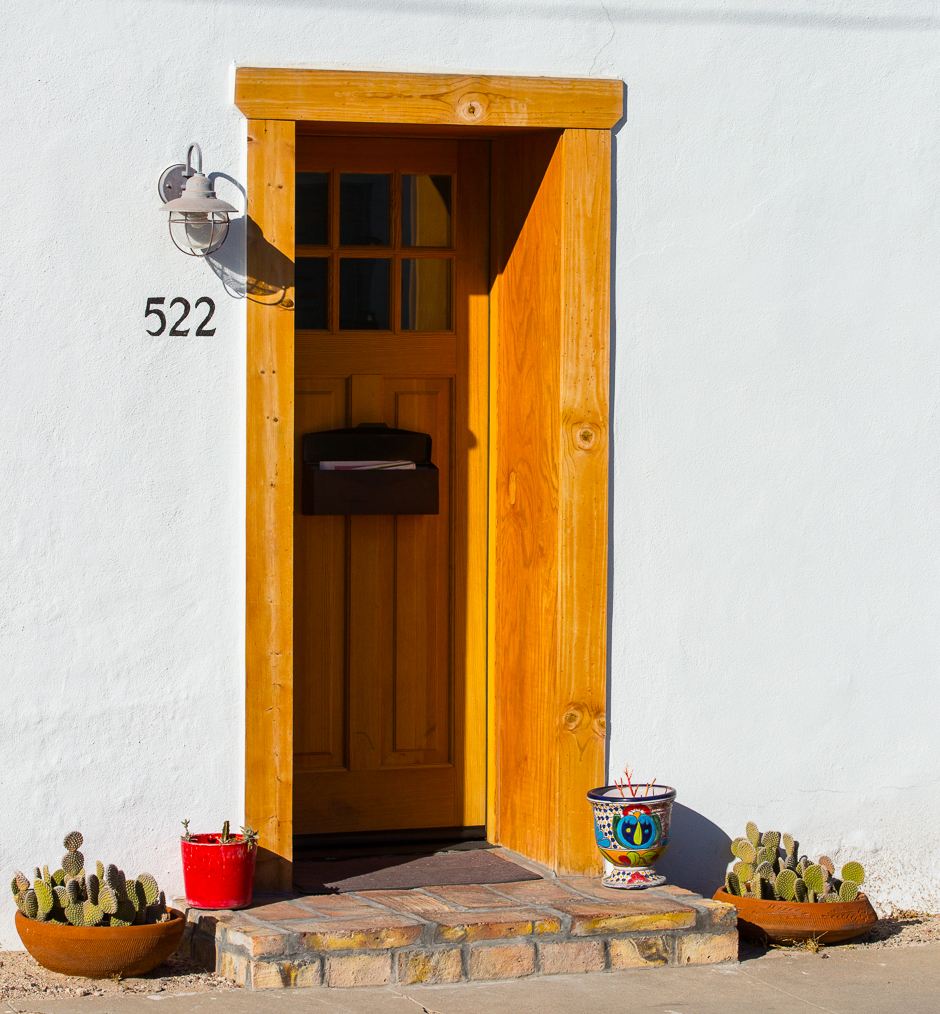
“Barrio Viejo means “old neighborhood” in Spanish. This area is an important part of our community’s rich history and it reflects many of the experiences of life here in Arizona. Also known as “Barrio Libre (Free)”, this neighborhood was home to a culturally diverse community of people from America, Europe, Africa and Asia. To the north, Tucson’s early business district was situated between Alameda, Broadway, Church and Main. From that location to where the Tucson Convention Center stands today, were several blocks of adobe buildings that many people called their home or business which were bulldozed for what some people called urban renewal and others called a tragic example of government and cultural prejudice. What one finds today in Barrio Viejo is virtually all that is left of Tucson’s 19thcentury commercial and residential structures. To our knowledge there is no larger collection of 19th century adobe buildings in the United States.
Historically South Main was the western edge of the Barrio and it served as home to many prominent early Tucson families. The 1881 Tucson City Directory noted that, “Main, Pennington, Congress and Meyer Streets, and Stone, Toole and Osborne Avenues are among the most spacious and promising thoroughfares…” The Carrillo House at 363 South Meyer dates from at least the 1850s and was originally home to Francisco Carrillo, one of Tucson’s early civic leaders. Across the street from the Carrillo House is the Teatro Carmen. Having opened in 1915, it was one of the first theaters in Tucson devoted exclusively to the presentation of dramatic works in Spanish. In its prime it provided entertainment for as many as 1400 people and has served as a cinema, meeting hall, boxing arena and ballroom.”
“Other accounts from the time paint a picture of the Barrio’s enduring visual character: “…it yet retains many of the peculiar features of a Spanish-American town… looks a bit of old Mexico transplanted to the Northern Republic.” Some reports of earlier times recounted the colorful street life that came from living in the Free Zone – an area that prior to the 1880s was free of legal restraints (and often, the presence of policemen).
At Cushing Street and South Meyer Avenue, just north of the Carrillo House, is Cushing Street Bar and Restaurant- the first property renovated by our family business in 1971 and the territorial home of Clara Ferrin Bloom- one of Tucson’s early community leaders. In the 1860s a German immigrant, Joseph Ferrin, established his general store and lived there with his family. His wife, Therese, was described as The Angel of Tucson because of her healing herbs and holistic medicines. She is also credited with helping to establish Tucson’s first Temple, the Stone St. Temple. The Bloom family has contributed extensively to Tucson’s commercial life and for many decades Dave Bloom and Sons was regarded as one of Tucson’s finest men’s clothing stores.”
“Cushing Street is named after Howard Cushing, one of the famed Cushing brothers of Indian and Civil Wars fame. He was regarded as the most renowned “Indian-fighter” at the time; yet, Howard was killed by Apache warriors in the mountains near Sierra Vista in pursuit of Cochise in 1870. A marker commemorating the site of his death can be found near Sonoita. His brother, Alonzo was killed at Gettysburg during the Union’s defense of Cemetery Ridge during Pickett’s Charge. In May 2010, 147 years later, he was awarded the Medal of Honor- a recognition many felt far too long overdue.
While Tucson has grown significantly over the past century, the area now known as Barrio Viejo remains connected to its celebrated historic character. Landmarks such as Teatro Carmen on South Meyer and El Tiradito (the Wishing Shrine) on South Main Avenue represent a celebration of the neighborhood’s cultural history. Nearby St. Augustine’s Cathedral and Carrillo Elementary School remain as testaments to the strength of the Mexican-American families that call this neighborhood home. Jerry Lee Ho’s market, a popular grocery store for many decades on the northwest corner of South Meyer and 17th Street, recently went through an extensive renovation/preservation effort for the Tucson offices of the global geotechnical and environmental engineering firm of Haley and Aldrich.”
“Barrio Viejo was not Tucson’s most prominent or elite neighborhood like Snob Hollow. Its colorful architecture and vibrant commercial activity always defined it as a community with an abundance of character. Unfortunately, many buildings in the area fell into significant disrepair during the middle of the 20th century. The adobe construction common to this area and a wealth of detailed historic documentation allowed many of the neighborhood’s oldest structures to be restored, rebuilt and re-imagined for a new century.
In 1971, Kelley Rollings’s vision for revitalizing this historic area spearheaded what has become an inspired effort by people from all walks of life to make this one of Tucson’s most endearing districts. Many other entrepreneurs, homeowners and businessmen have committed to this area. Today the Barrio is a vibrant commercial and residential community in the heart of Tucson. One can find a wide range of business interests here. Barrio Viejo’s location, adjacent to the Tucson Convention Center and many important governmental resources, makes it a convenient and effective place to locate or expand a business. Many people reside in the area as well and there are schools nearby for families and their children.
Development is ongoing in Barrio Viejo and it is once again one of the most desirable places to work or live in Tucson. Working with integrity and perseverance is essential in historic preservation. Painstaking attention to architectural history while incorporating modern amenities makes our buildings distinctive as well as practical. There are few other places that can claim the history or character of Barrio Viejo!”

Extended Image Gallery ~ Barrio Historico – Tucson Arizona – 2018
Prior Year’s Barrio Historic Blog Post Link
Extended Image Gallery : Barrio Historico ~ Tuscon, Arizona
